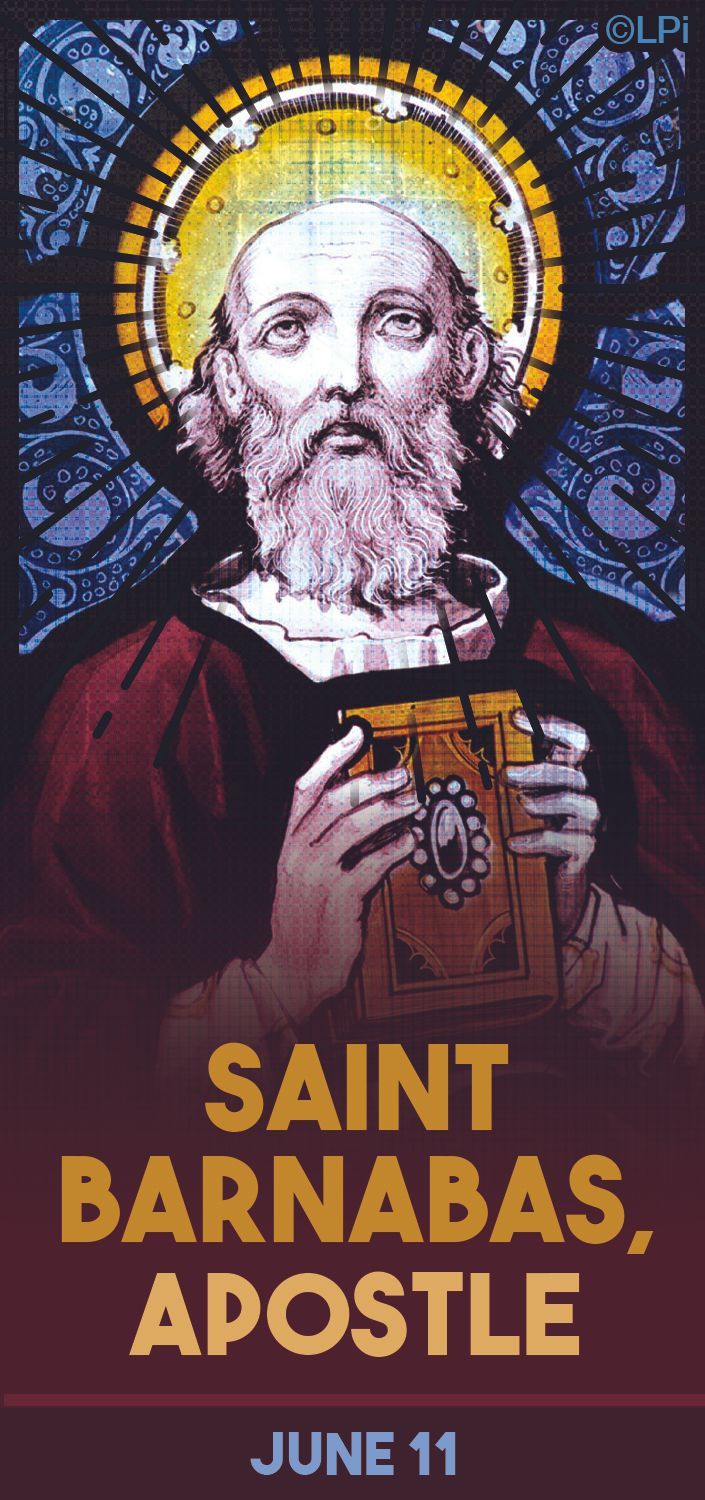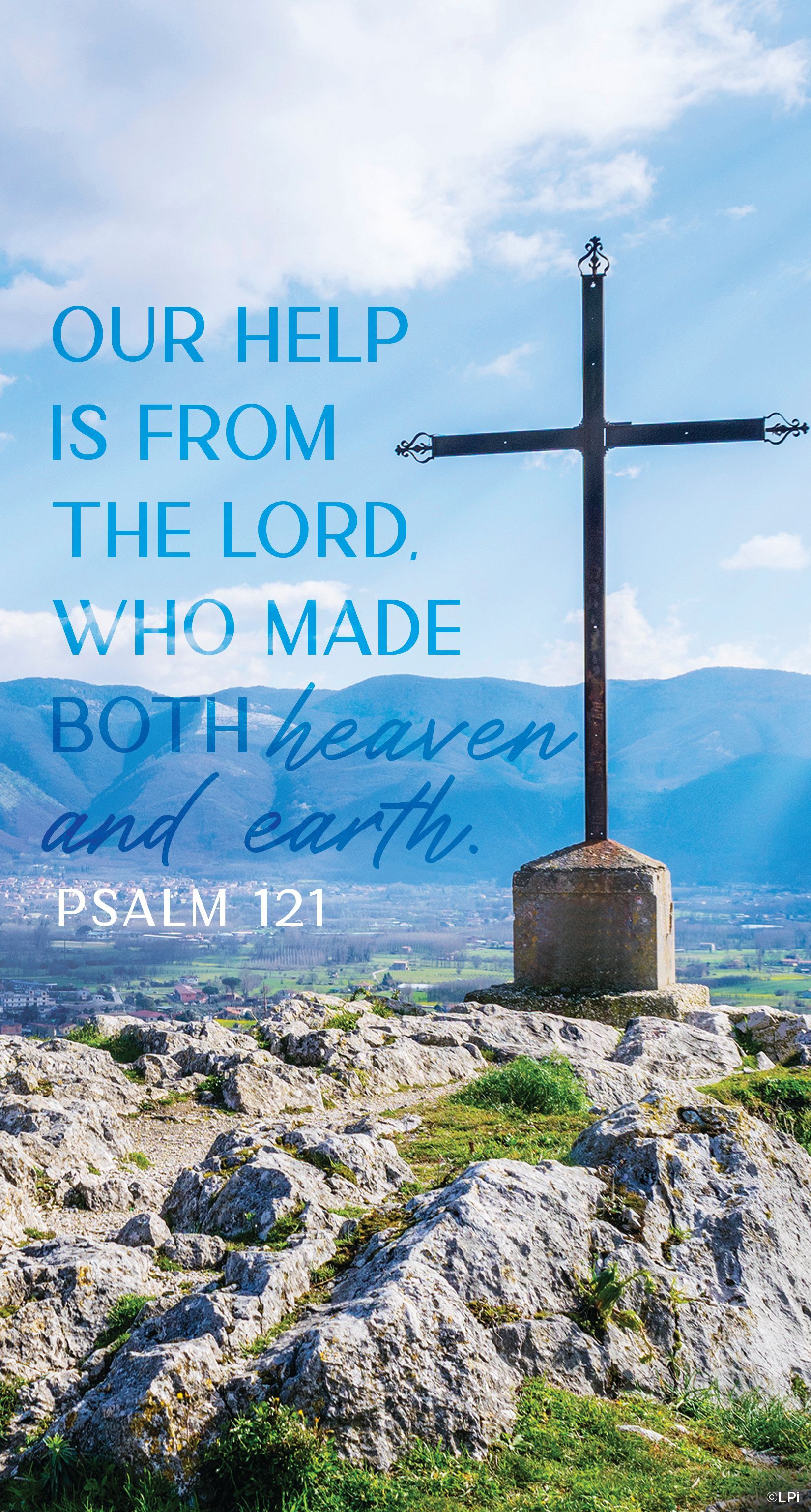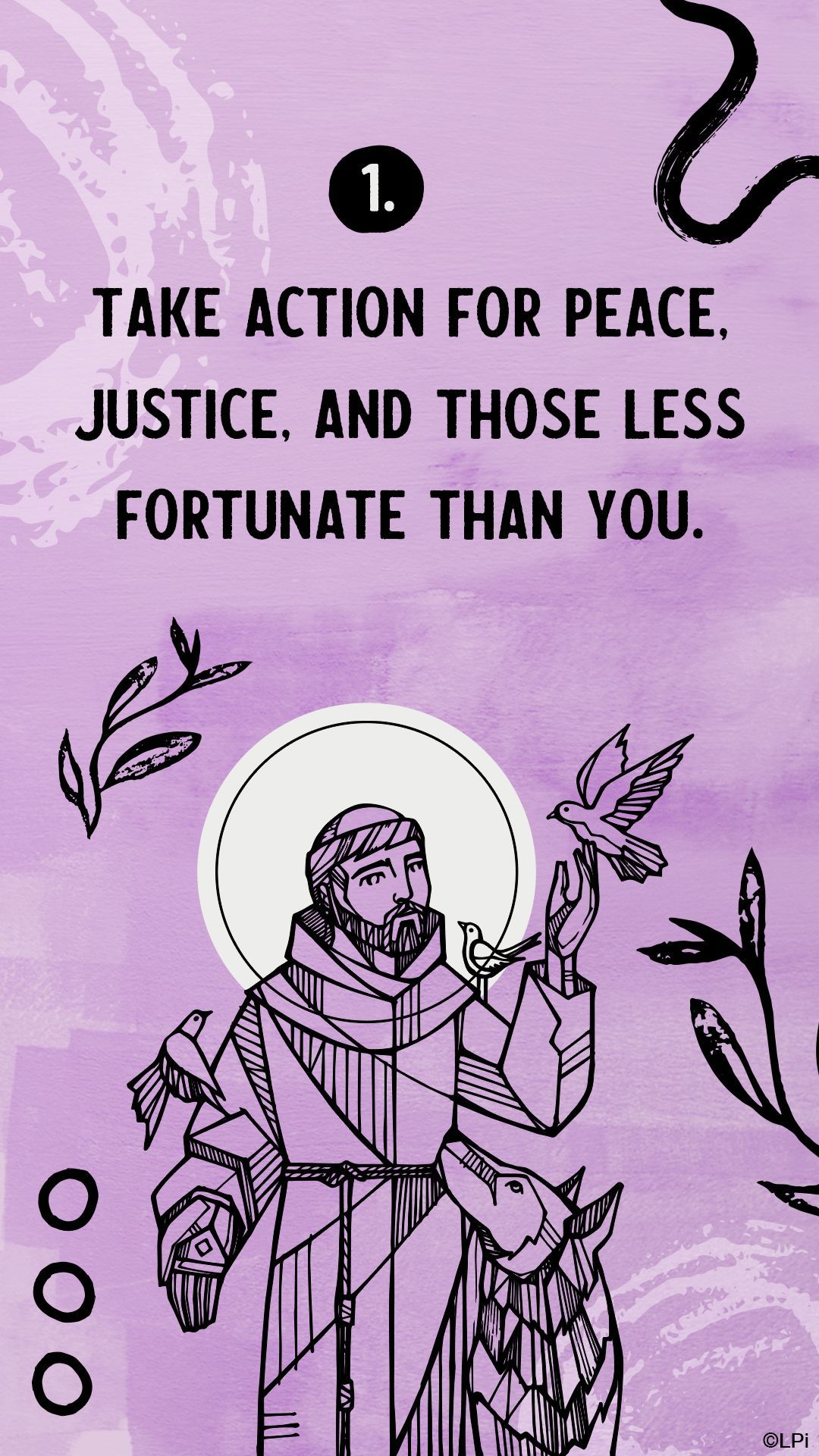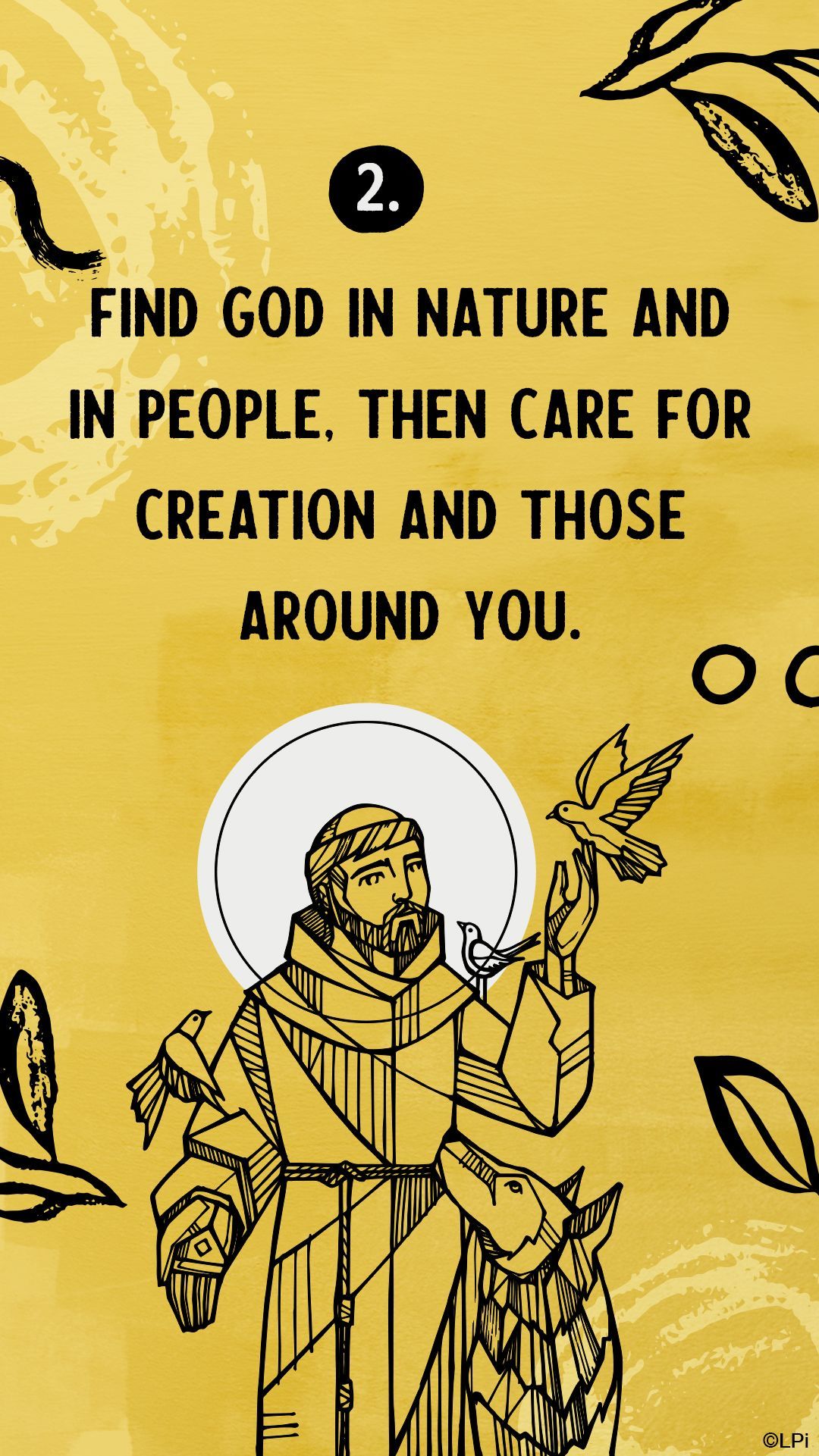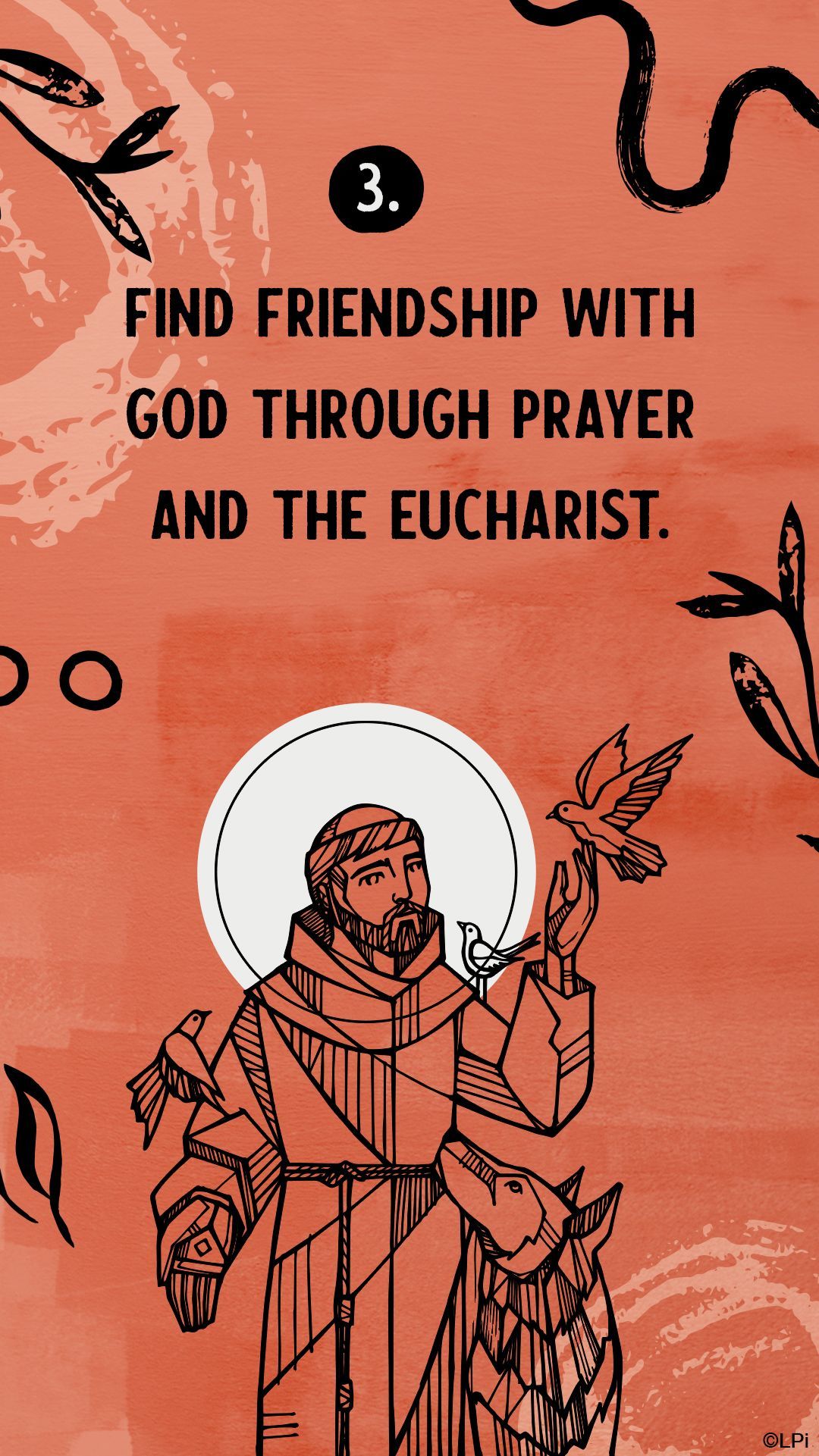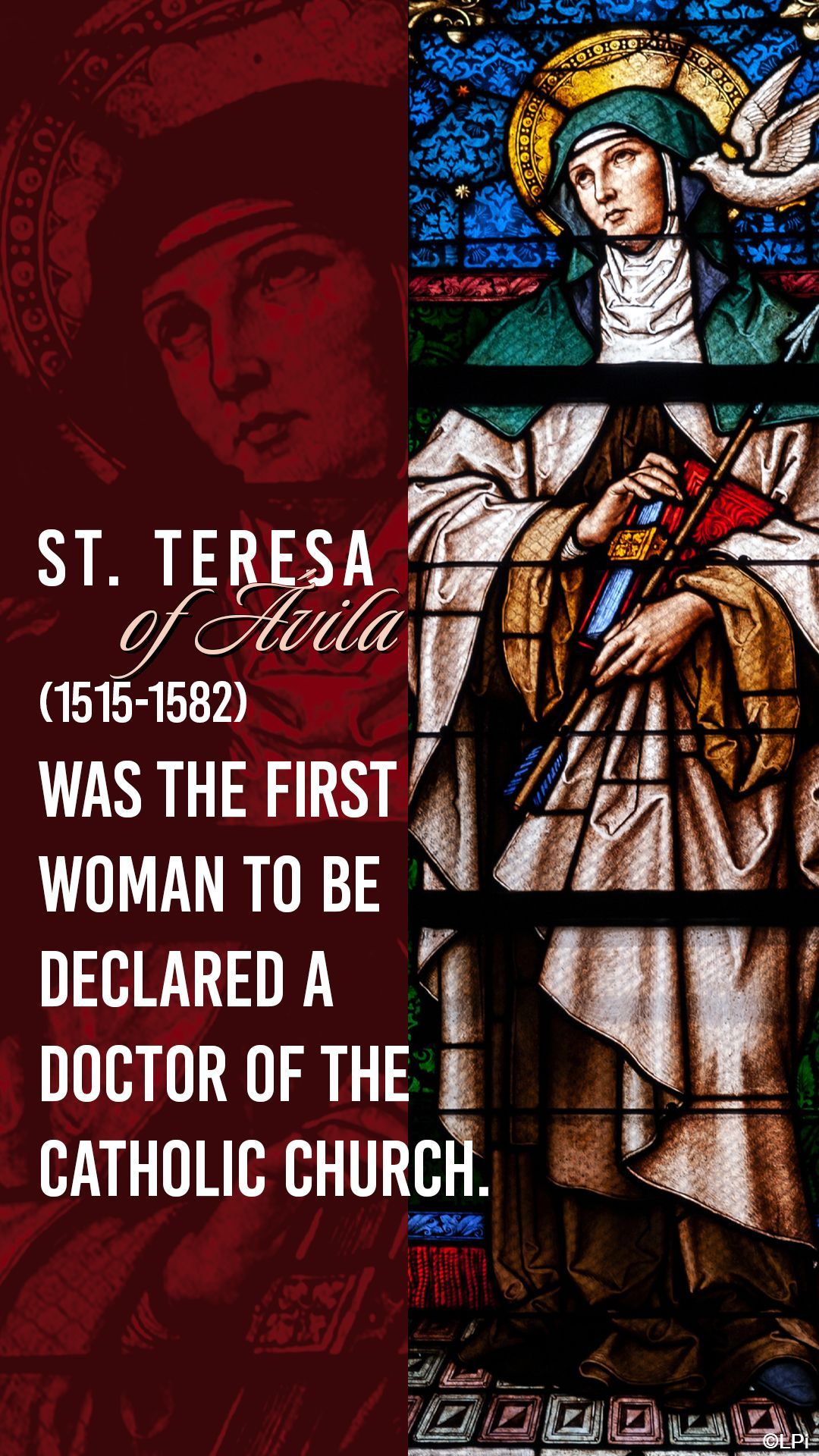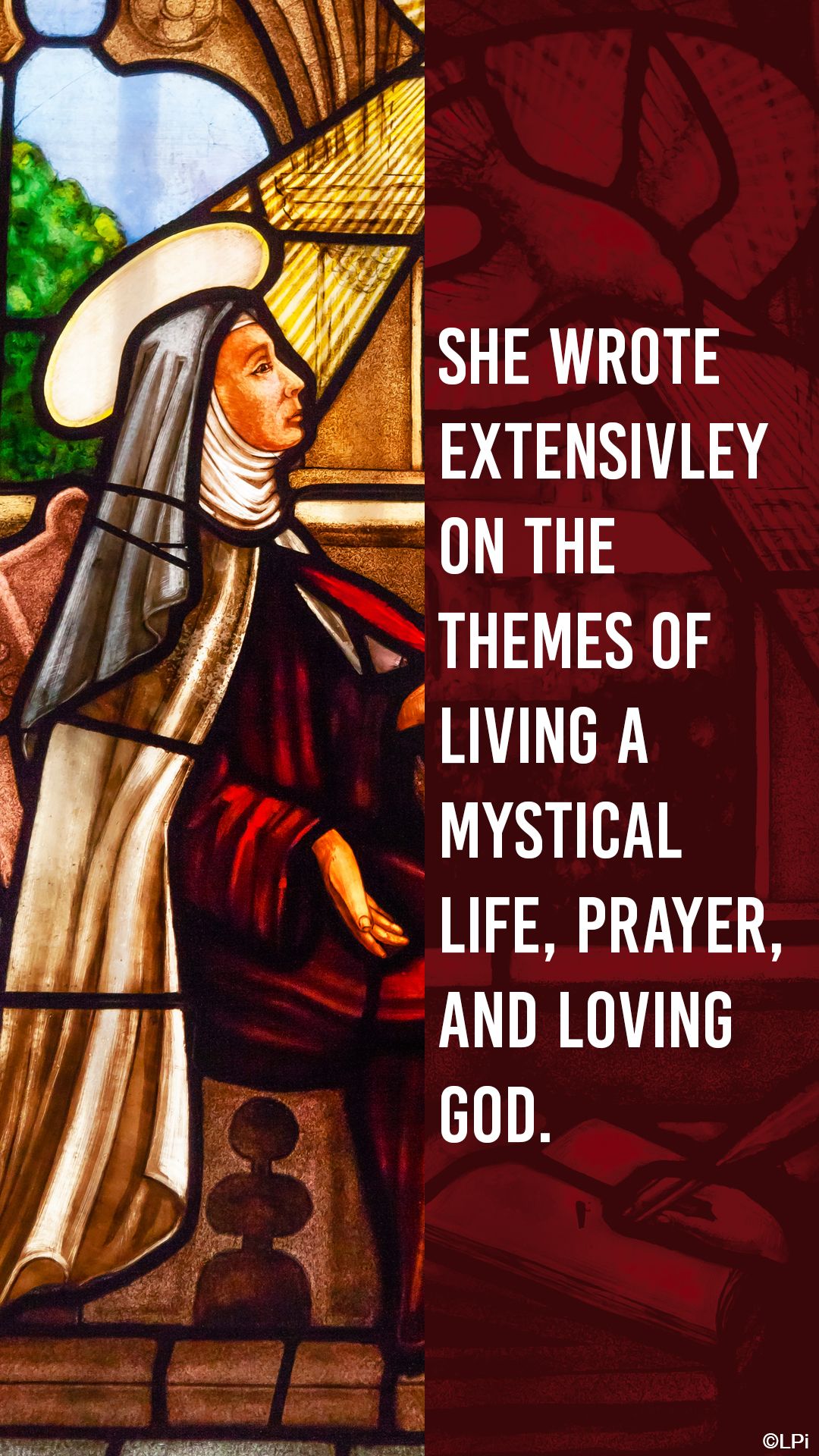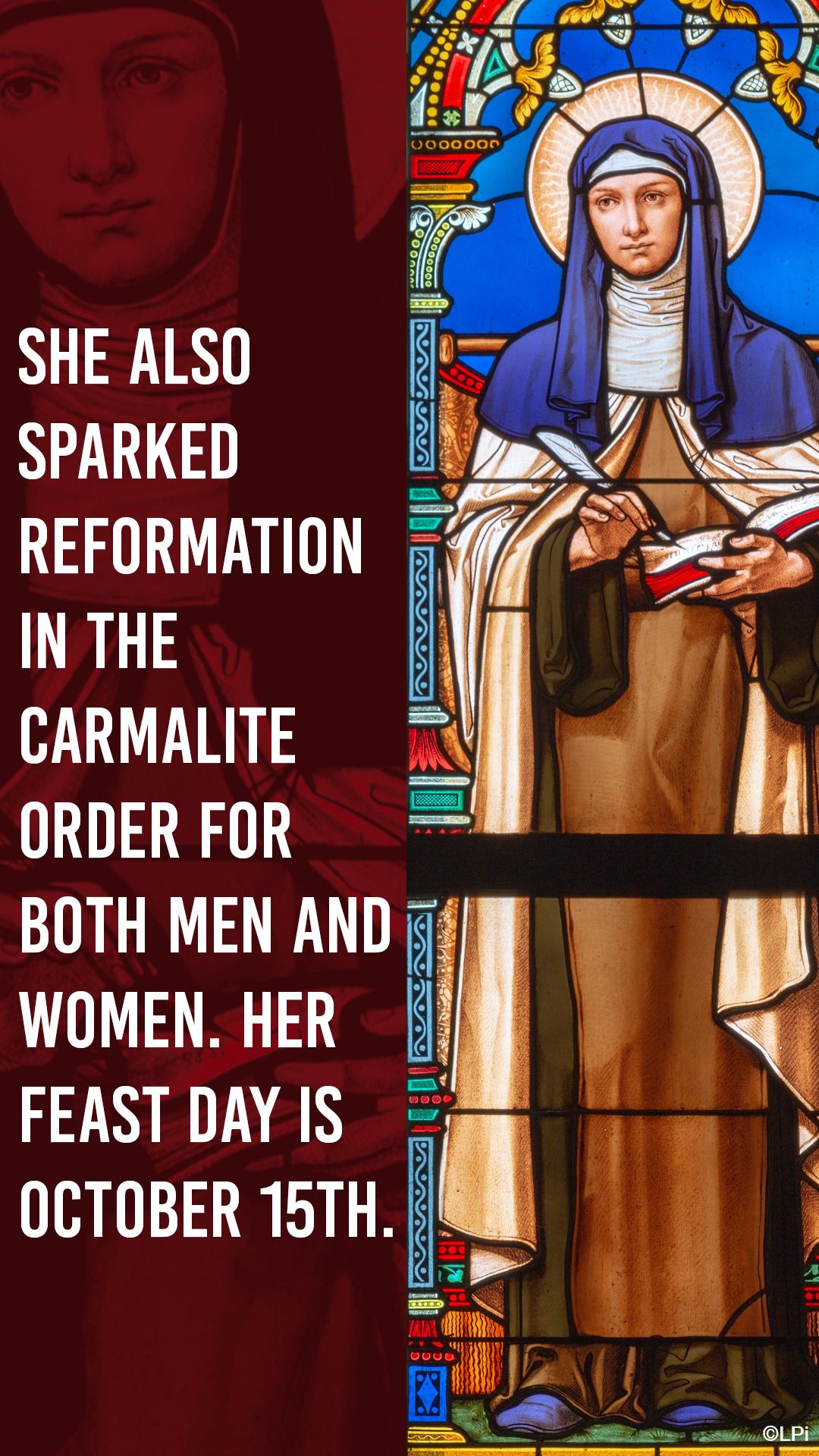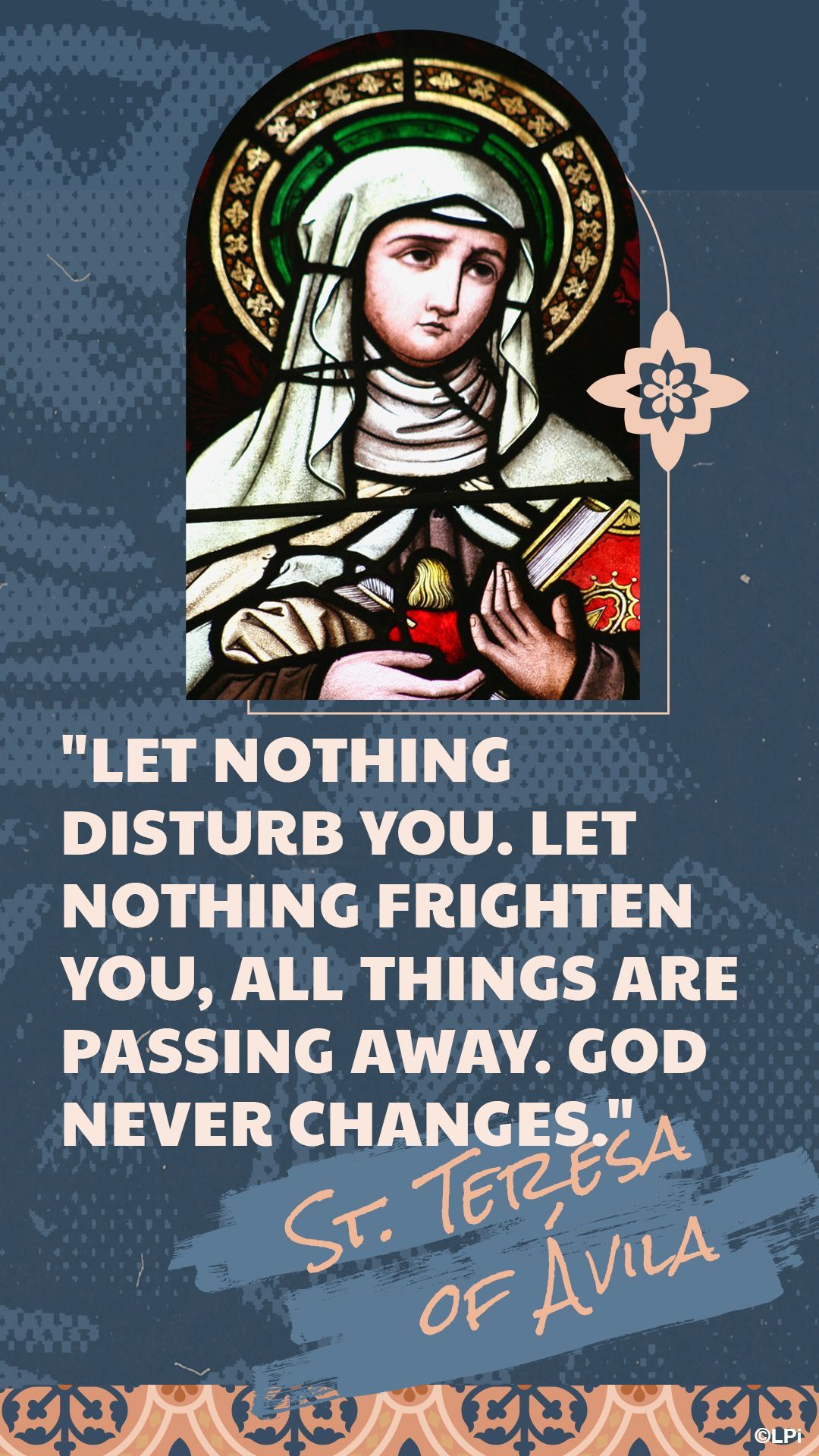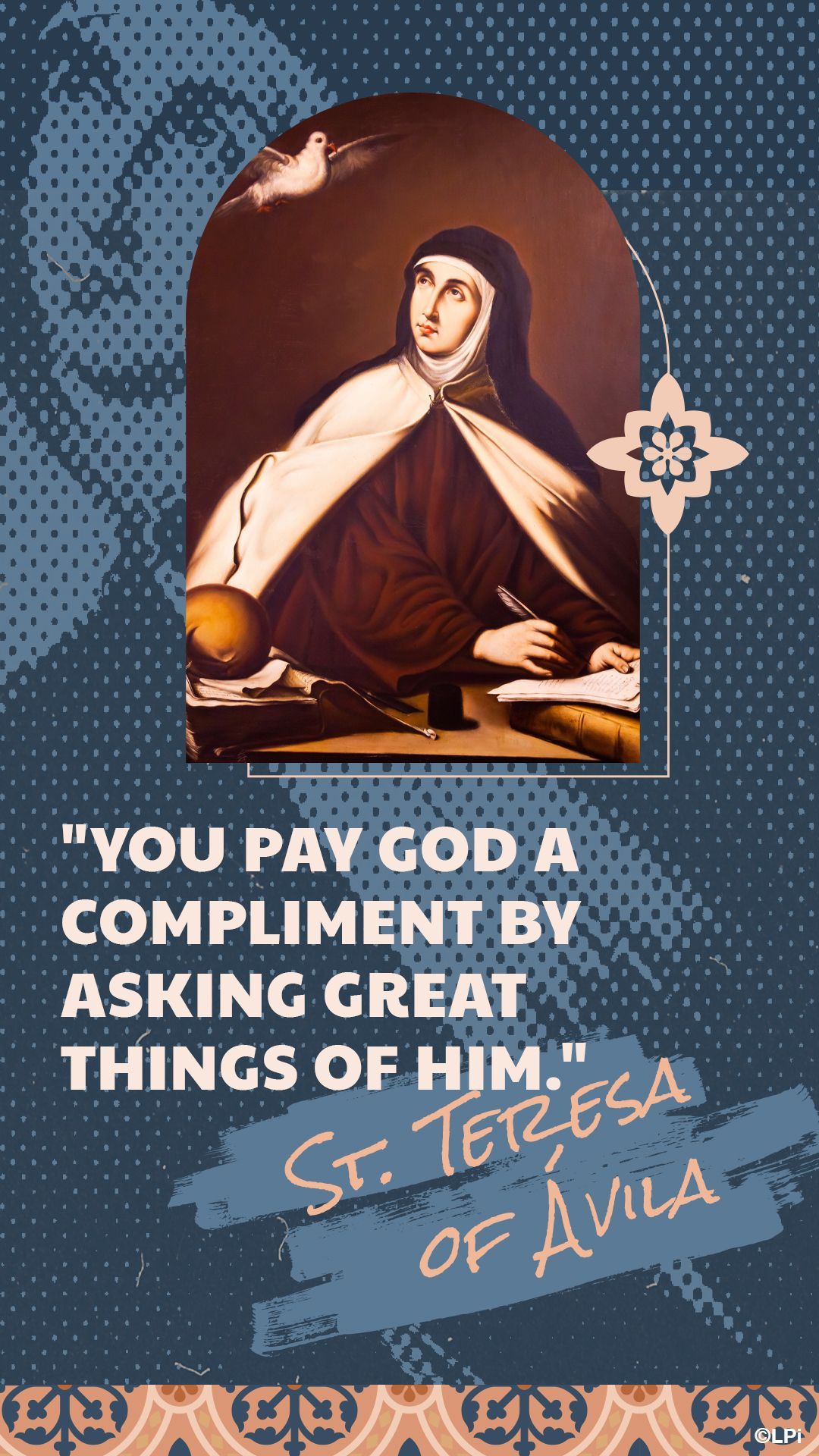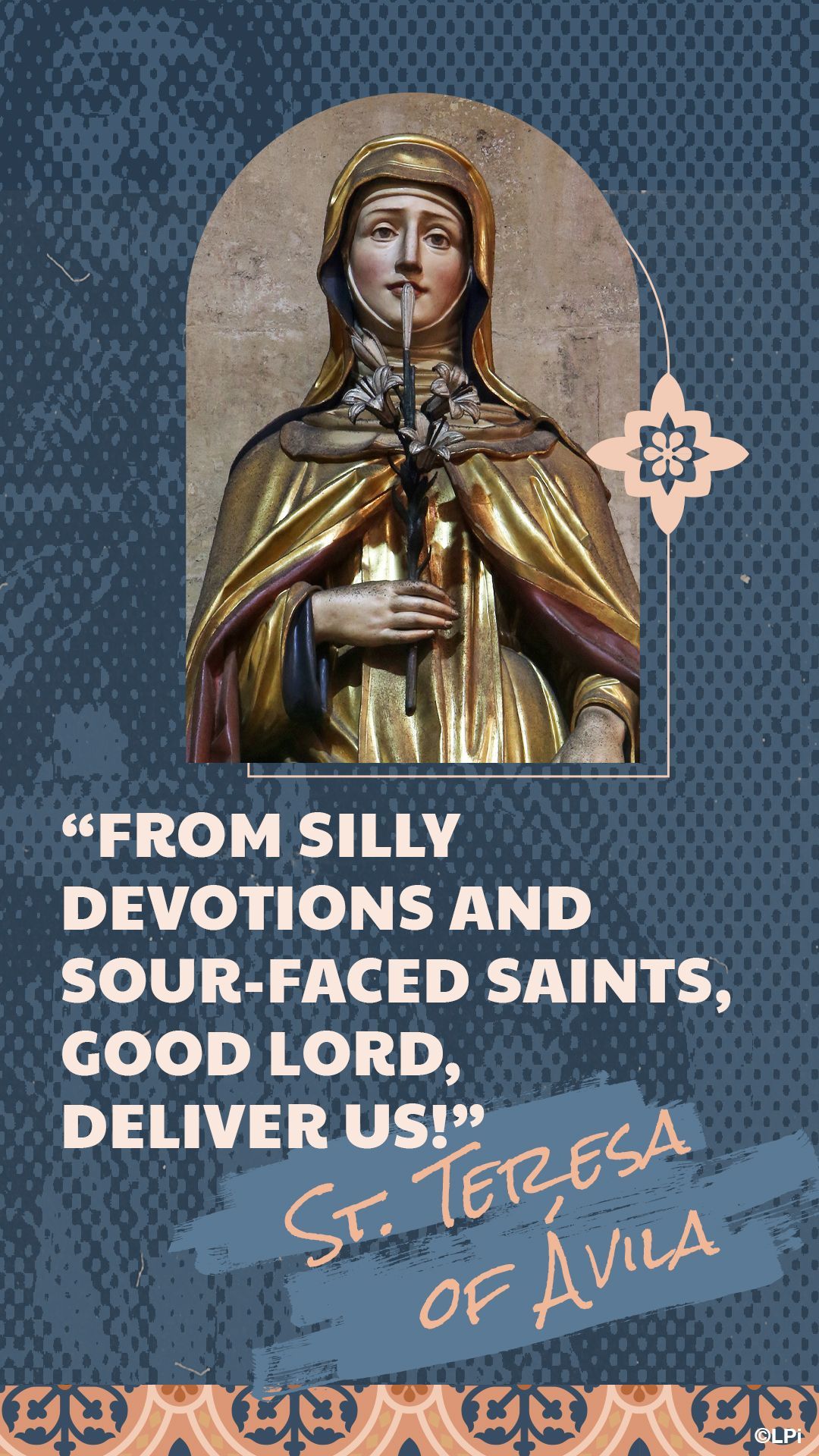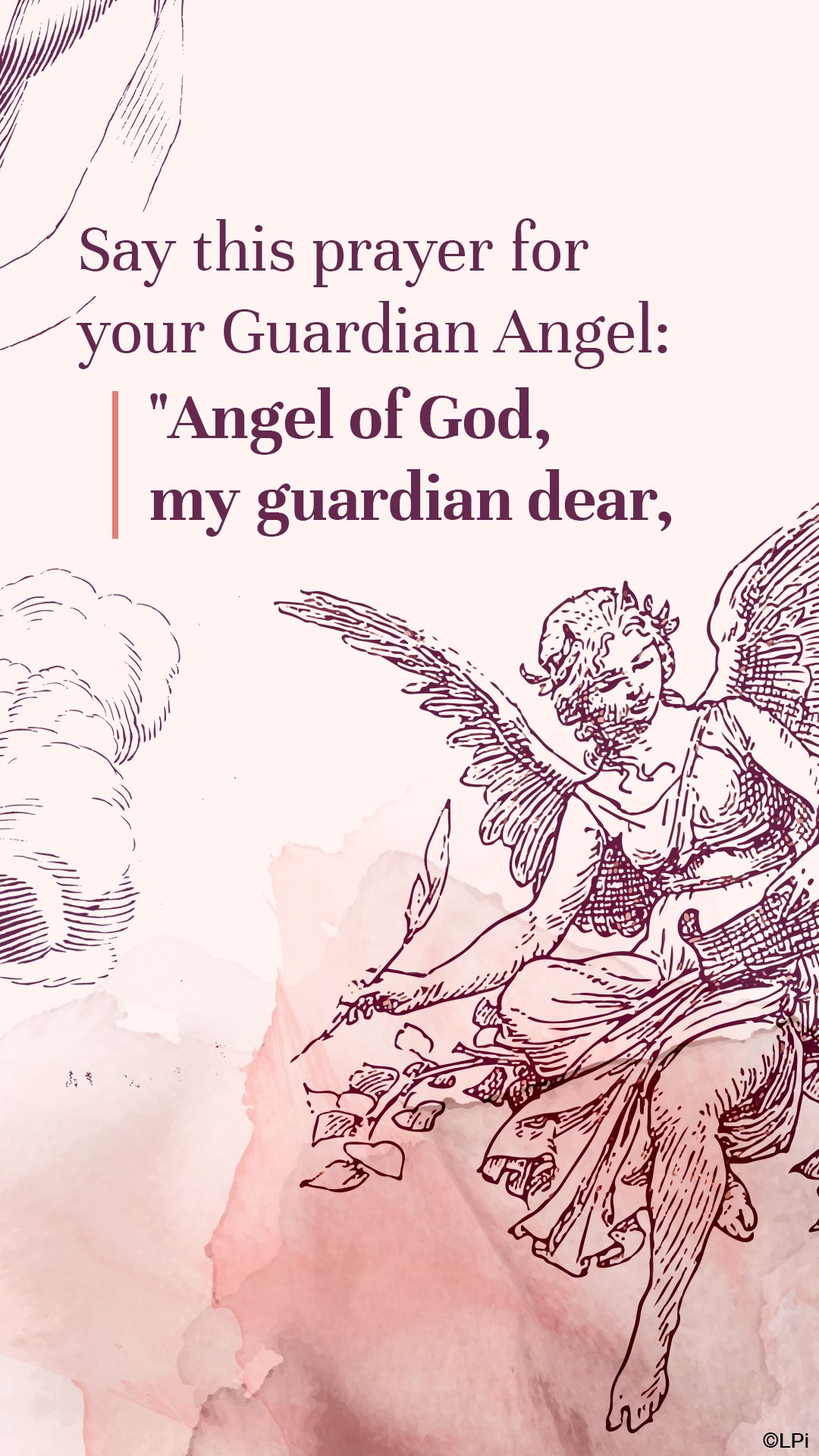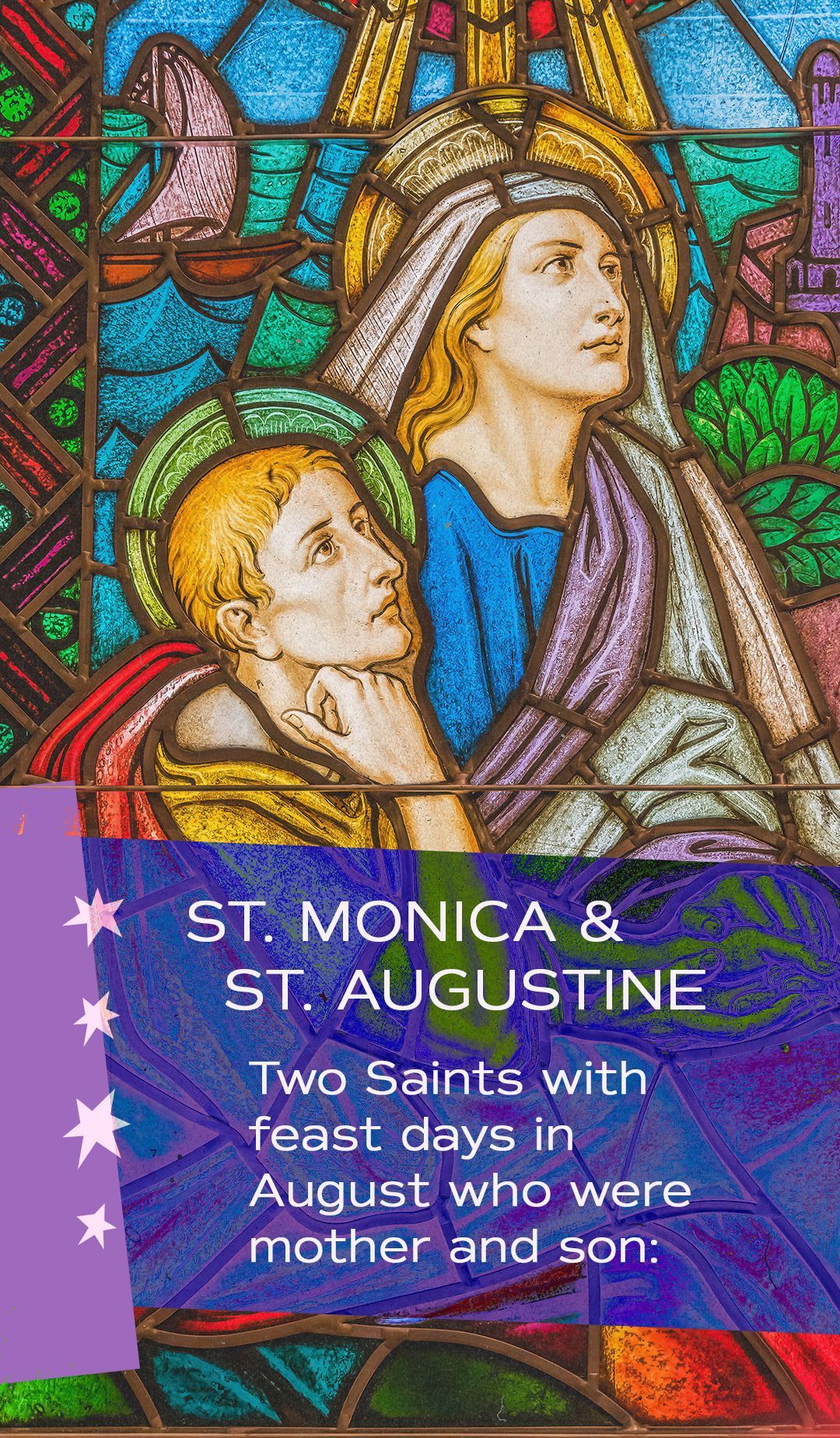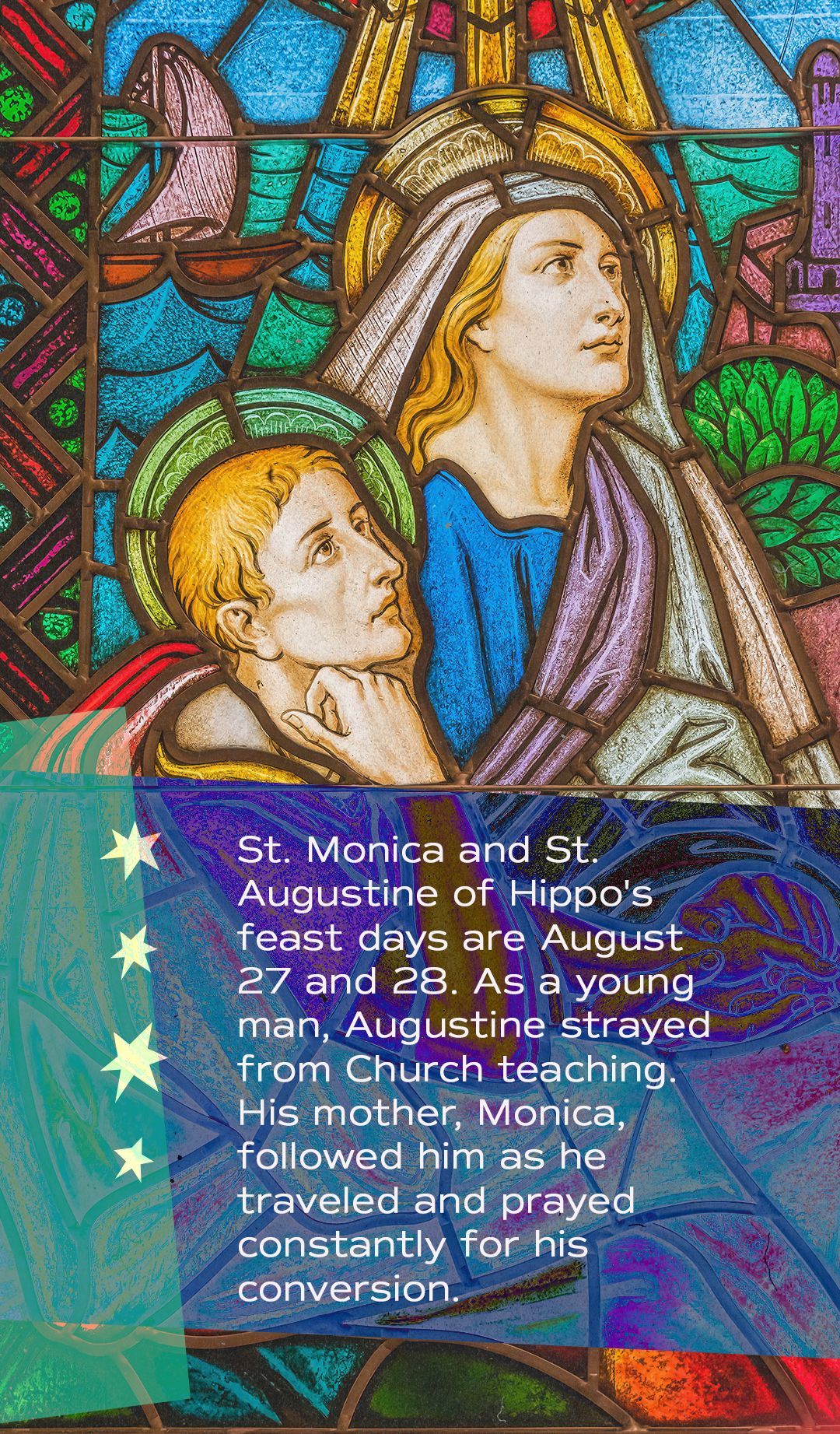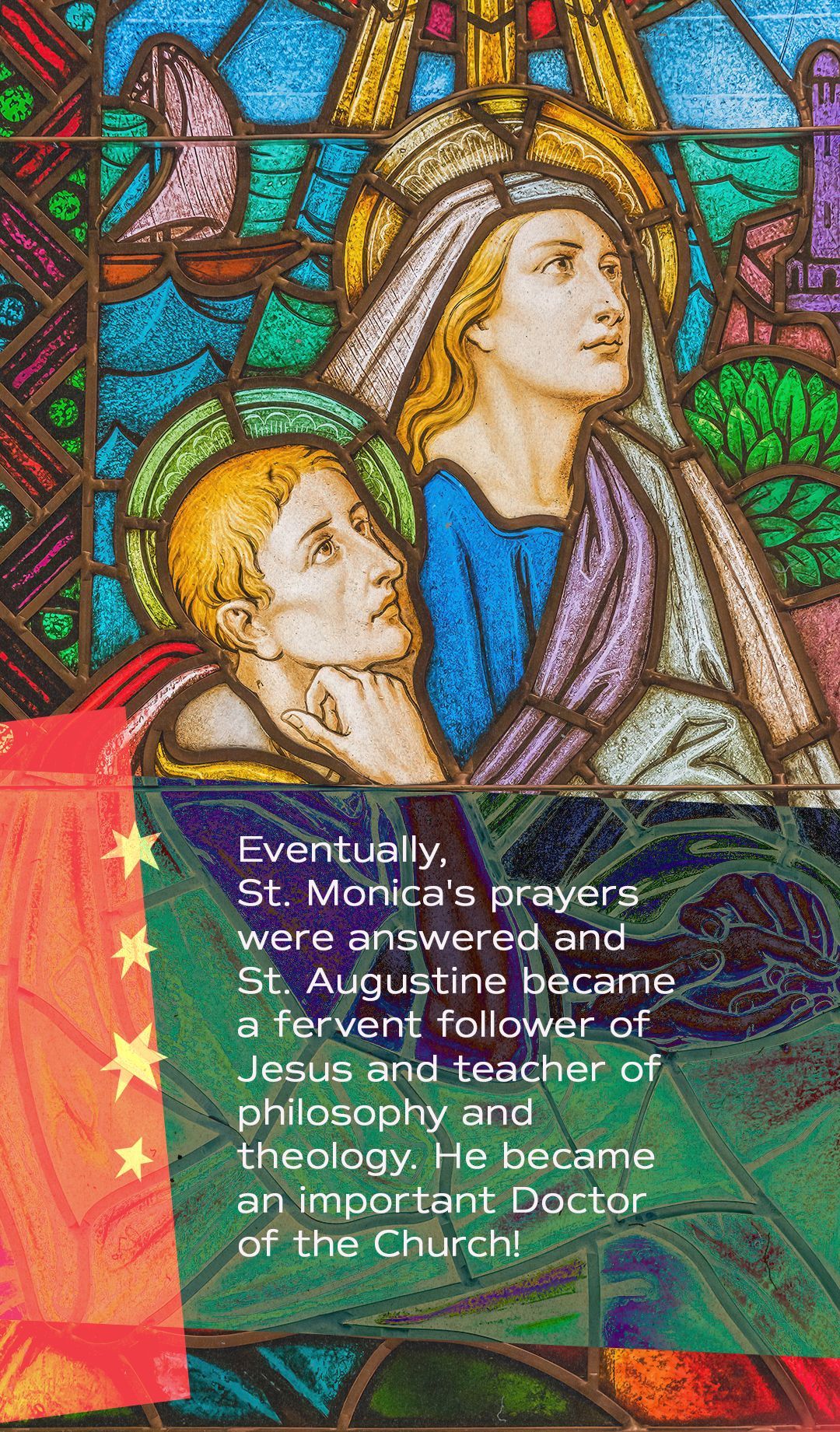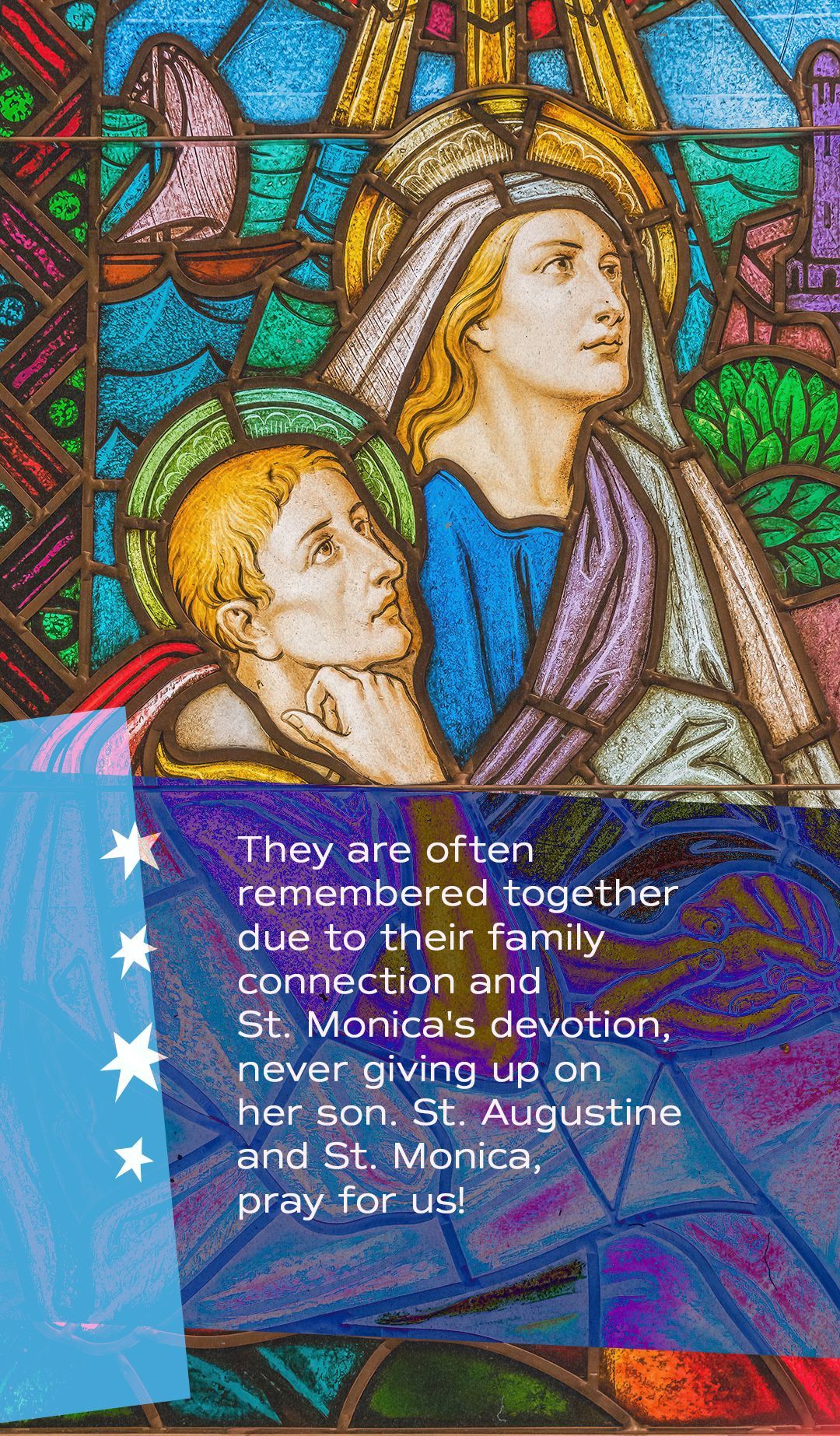SAINT OF THE WEEK
AND MANY MORE!
Visit the American Saint of the week page. Click the botton >>>>>
World Mission Sunday - October 19
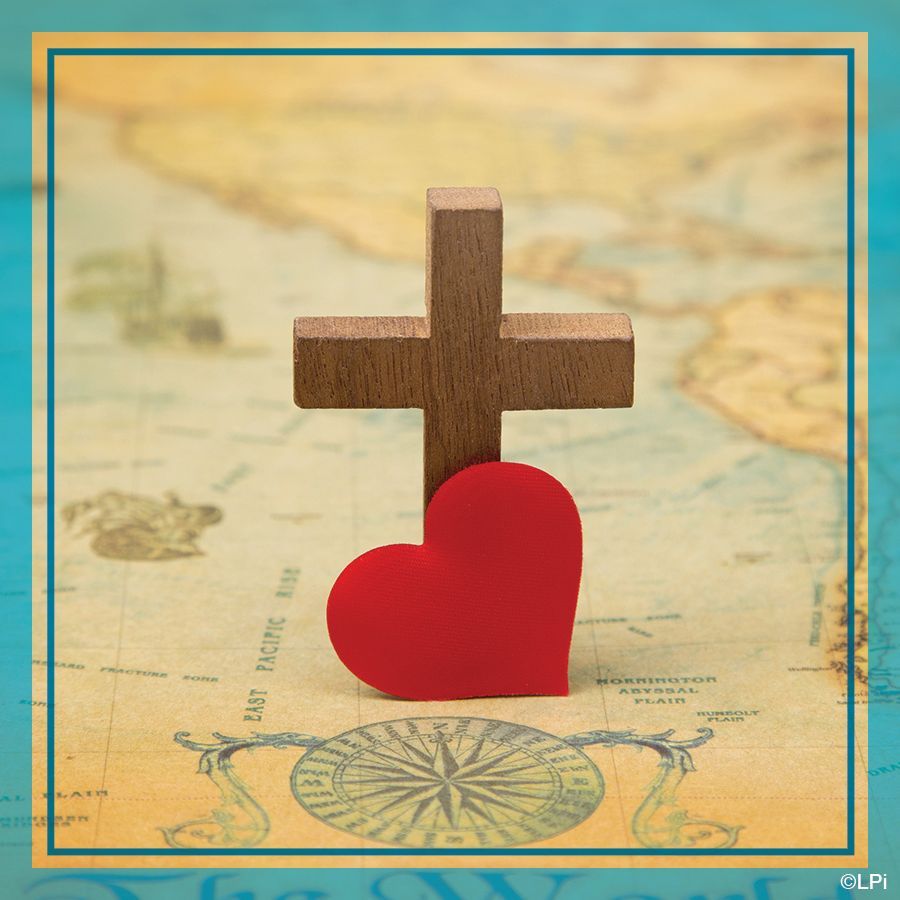

The North American Martyrs - October 19
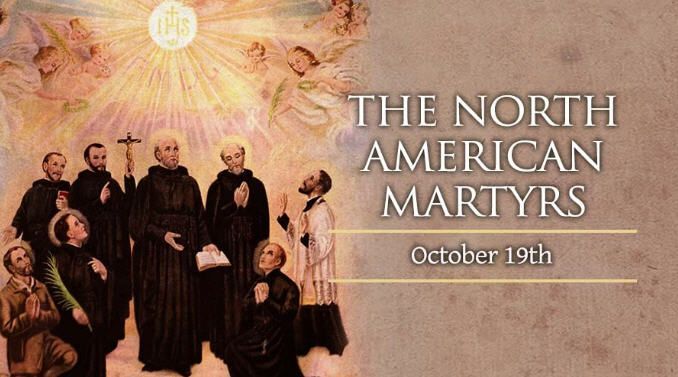
Also known as Canadian Martyrs; Isaac Jogues and Companions; Jesuit Martyrs of North America; Martyrs of New France.
Memorial: 19 October; 26 September (Canada)
The eight North American martyrs, also known as the Candian Martyrs, the Jesuit Martyrs of North America or the Martyrs of France, included six priests and two lay brothers. They were heroic members of the Society of Jesus who were martyred in North America in order to bring the Faith that is necessary for salvation to the Huron, the Iroquois and the Mohawk Indians. Five of the eight North American martyrs were put to death in what is now Canada, and three of them in New York State. There is a shrine to the United States' martyrs at Auriesville in New York, and there is a shrine to the Canadian martyrs at Fort Saint Mary near Midland, Ontario. The names of the eight North American martyrs are:
Saint Rene Goupil, a lay brother martyred in 1642 in New York State,
Saint Isaac Jogues, a priest,
Saint John de Lalande, a lay brother, martyred in 1646 in New York State,
Saint Anthony Daniel, a priest, martyred in Canada in 1648,
Saint John de Brebeuf,
Saint Charles Garnier,
Saint Noel Chabanel and
Saint Gabriel Lalemant, all priests, and all martyred in Canada in 1649.
Saint Isaac Jogues, after thirteen months' imprisonment by the Mohawks, had several fingers cut off of his hand. He went back to Europe, but returned again to North America and was killed by tomahawk blows at Ossernenon, now called Auriesville, in New York State. Saint John de Brebeuf declared before he died, "I have a strong desire to suffer for Jesus Christ." He was tortured terribly, and a burning torch was put into his mouth, which strangled him.
Saint Rene Goupil, thirty-five, was the youngest of the martyrs, and cried "Jesus, Jesus, Jesus!" as he died. Saint Noel Chabanel was thirty-six, and Saint Isaac Jogues and Saint Gabriel Lalemant were thirty-nine. The oldest of the eight North American martyrs, Saint John de Brebeuf, was fifty-six when the Indians killed him.
They were canonized June 29 of 1930 by Pope Pius XI. Their memorial is October 19, and Spetember 26 in Canada.
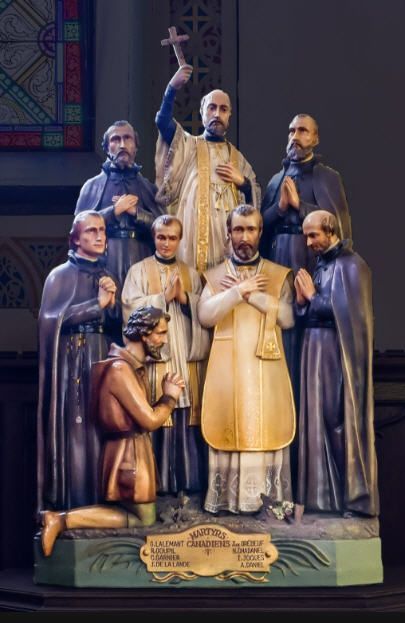
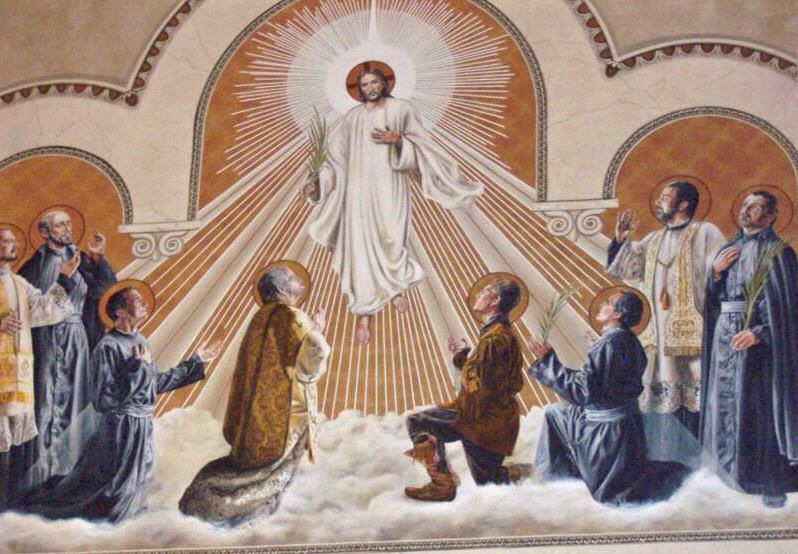
Saint Luke The Evangelist - October 18
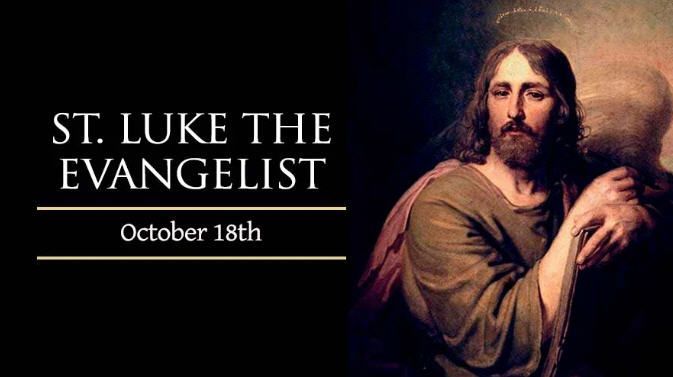
On October 18, Catholics and other Christians around the world will celebrate the feast of St. Luke, the physician and companion of St. Paul whose gospel preserved the most extensive biography of Jesus Christ.
Saint Luke, sometimes called The Evangelist, is the author of the third Gospel and the Acts of the Apostles and a physician. There is some debate about how he came to Christianity, though many believe he was a gentile convert. Tradition holds him to be a native of Antioch, Syria, possibly a slave.
Accounts of Luke’s death are conflicting, some say he was martyred shortly after Paul others that he lived a long life completing his Gospel in Greece and dying at 84. He is the patron saint of physicians.
St. Luke wrote a greater volume of the New Testament than any other single author, including the earliest history of the Church. Ancient traditions also acknowledge Luke as the founder of Christian iconography, making him a patron of artists as well as doctors and other medical caregivers.
Luke came from the large metropolitan city of Antioch, a part of modern-day Turkey. In Luke's lifetime, his native city emerged as an important center of early Christianity. During the future saint's early years, the city's port had already become a cultural center, renowned for arts and sciences. Historians do not know whether Luke came to Christianity from Judaism or paganism, although there are strong suggestions that Luke was a gentile convert.
Educated as a physician in the Greek-speaking city, Luke was among the most cultured and cosmopolitan members of the early Church. Scholars of archeology and ancient literature have ranked him among the top historians of his time period, besides noting the outstanding Greek prose style and technical accuracy of his accounts of Christ's life and the apostles' missionary journeys.
Other students of biblical history adduce from Luke's writings that he was the only evangelist to incorporate the personal testimony of the Blessed Virgin Mary, whose role in Christ's life emerges most clearly in his gospel. Tradition credits him with painting several icons of Christ's mother, and one of the sacred portraits ascribed to him – known by the title “Salvation of the Roman People”-- survives to this day in the Basilica of St. Mary Major.
Some traditions hold that Luke became a direct disciple of Jesus before his ascension, while others hold that he became a believer only afterward. After St. Paul's conversion, Luke accompanied him as his personal physician-- and, in effect, as a kind of biographer, since the journeys of Paul on which Luke accompanied him occupy a large portion of the Acts of the Apostles. Luke probably wrote this text, the final narrative portion of the New Testament, in the city of Rome where the account ends.
Luke was also among the only companions of Paul who did not abandon him during his final imprisonment and death in Rome. After the martyrdom of St. Paul in the year 67, St. Luke is said to have preached elsewhere throughout the Mediterranean, and possibly died as a martyr. However, even tradition is unclear on this point. Fittingly, the evangelist whose travels and erudition could have filled volumes, wrote just enough to proclaim the gospel and apostolic preaching to the world.
Patronage: artists, bachelors, bookbinders, brewers, butchers, doctors, glass makers, glassworkers, gold workers, goldsmiths, lacemakers, lace workers, notaries, painters, physicians, sculptors, stained glass workers, surgeons.
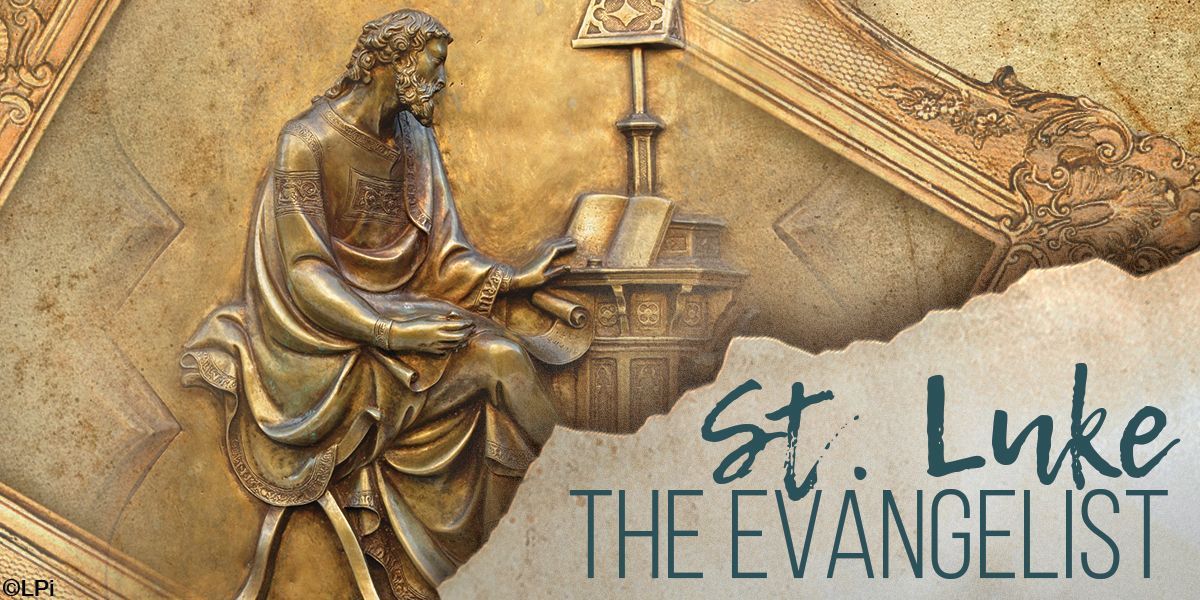
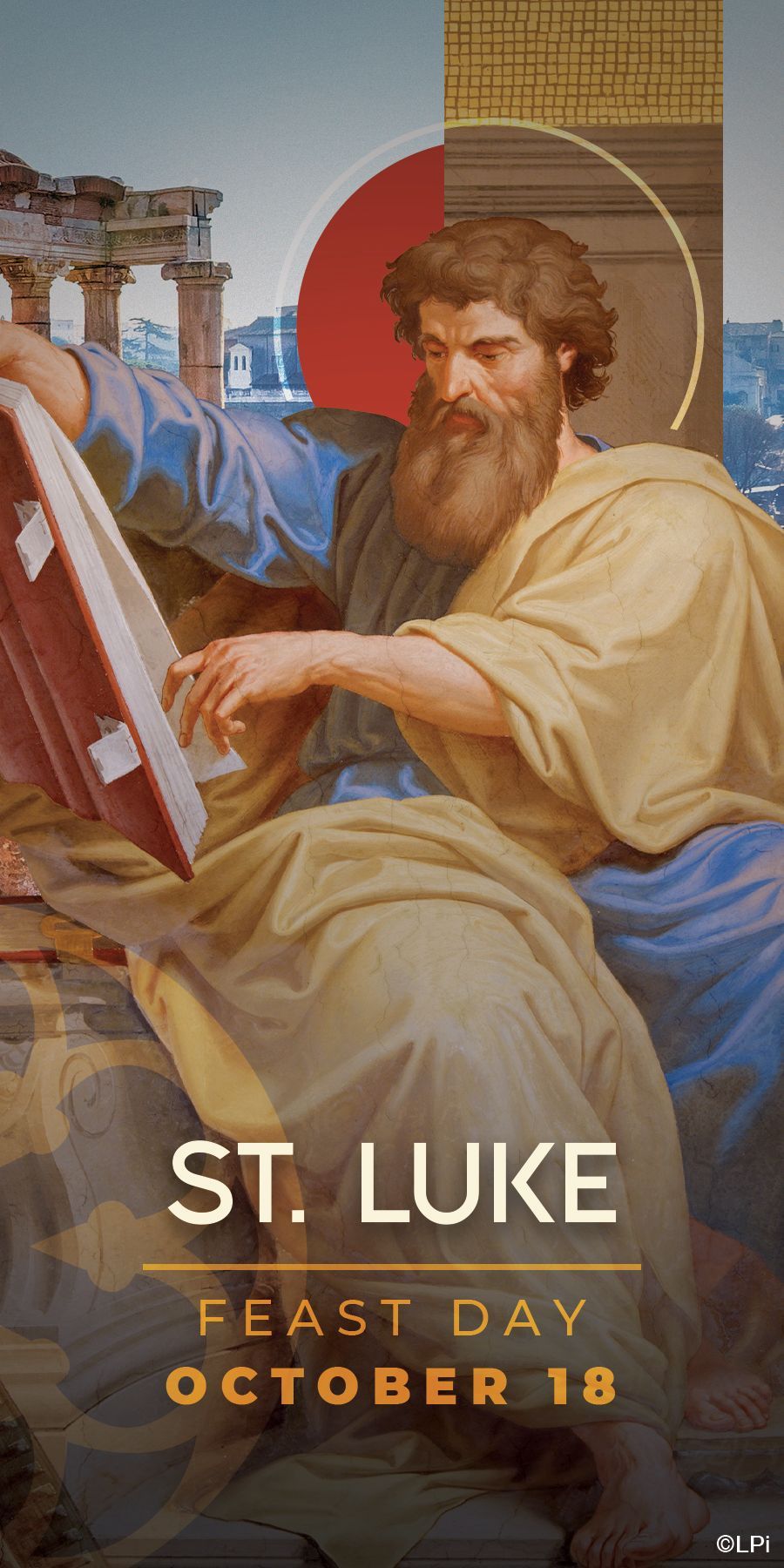
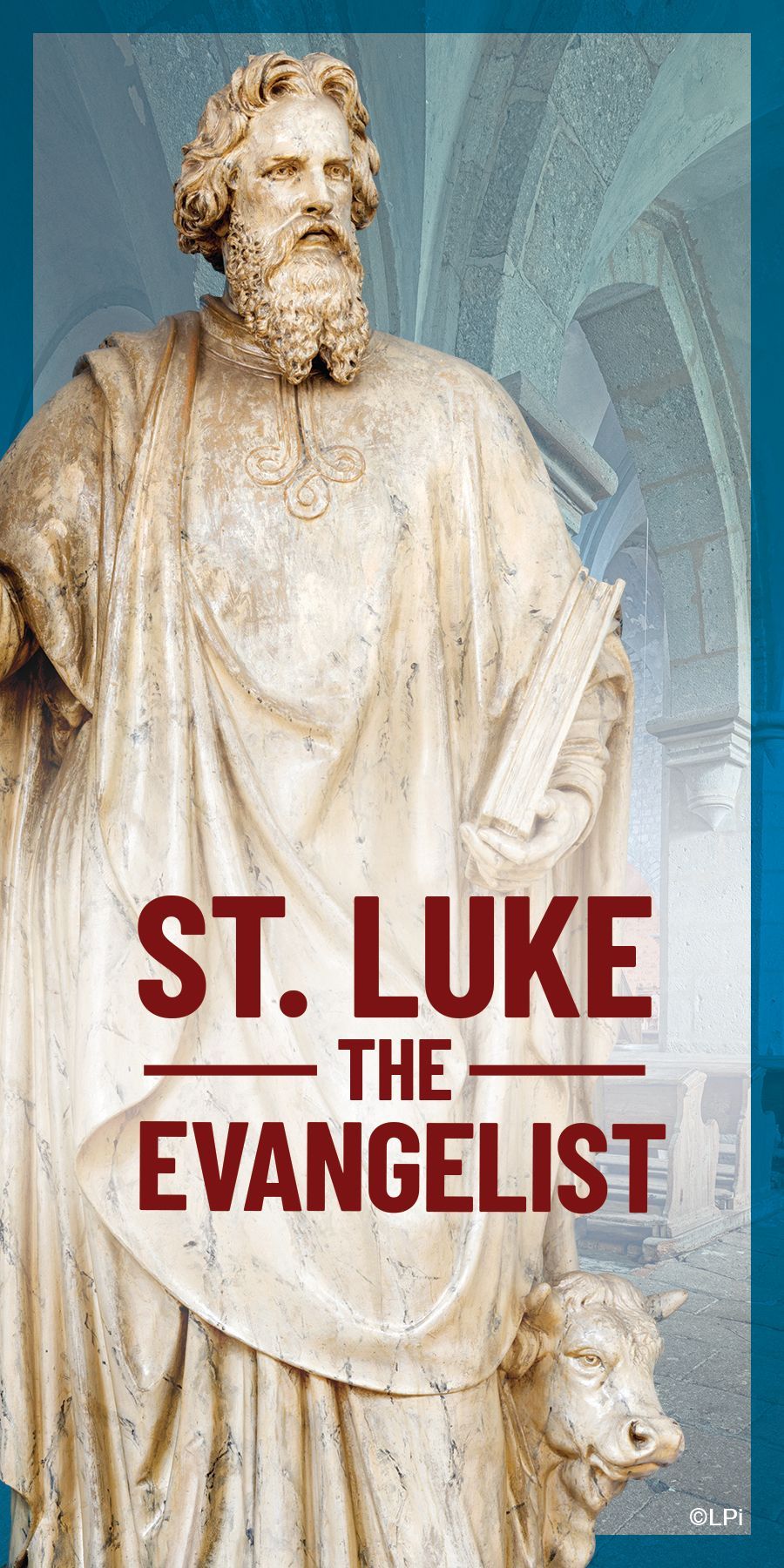
Saint Ignatius of Antioch - October 17
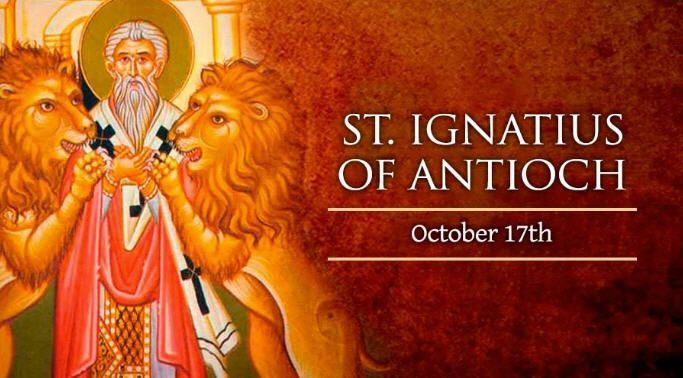
On Oct. 17, the Roman Catholic Church remembers the early Church Father, bishop, and martyr Saint Ignatius of Antioch, whose writings attest to the sacramental and hierarchical nature of the Church from its earliest days. Eastern Catholics and Eastern Orthodox Christians celebrate his memory on Dec. 20.
In a 2007 general audience on St. Ignatius of Antioch, Pope Benedict XVI observed that “no Church Father has expressed the longing for union with Christ and for life in him with the intensity of Ignatius.” In his letters, the Pope said, “one feels the freshness of the faith of the generation which had still known the Apostles. In these letters, the ardent love of a saint can also be felt.”
Born in Syria in the middle of the first century A.D., Ignatius is said to have been personally instructed – along with another future martyr, Saint Polycarp – by the Apostle Saint John. When Ignatius became the Bishop of Antioch around the year 70, he assumed leadership of a local church that was, according to tradition, first led by Saint Peter before his move to Rome.
Although St. Peter transmitted his Papal primacy to the bishops of Rome rather than Antioch, the city played an important role in the life of the early Church. Located in present-day Turkey, it was a chief city of the Roman Empire, and was also the location where the believers in Jesus' teachings and his resurrection were first called “Christians.”
Ignatius led the Christians of Antioch during the reign of the Roman Emperor Domitian, the first of the emperors to proclaim his divinity by adopting the title “Lord and God.” Subjects who would not give worship to the emperor under this title could be punished with death. As the leader of a major Catholic diocese during this period, Ignatius showed courage and worked to inspire it in others.
After Domitian's murder in the year 96, his successor Nerva reigned only briefly, and was soon followed by the Emperor Trajan. Under his rule, Christians were once again liable to death for denying the pagan state religion and refusing to participate in its rites. It was during his reign that Ignatius was convicted for his Christian testimony and sent from Syria to Rome to be put to death.
Escorted by a team of military guards, Ignatius nonetheless managed to compose seven letters: six to various local churches throughout the empire (including the Church of Rome), and one to his fellow bishop Polycarp who would give his own life for Christ several decades later.
Ignatius' letters passionately stressed the importance of Church unity, the dangers of heresy, and the surpassing importance of the Eucharist as the “medicine of immortality.” These writings contain the first surviving written description of the Church as “Catholic,” from the Greek word indicating both universality and fullness.
One of the most striking features of Ignatius' letters, is his enthusiastic embrace of martyrdom as a means to union with God and eternal life. “All the pleasures of the world, and all the kingdoms of this earth, shall profit me nothing,” he wrote to the Church of Rome. “It is better for me to die in behalf of Jesus Christ, than to reign over all the ends of the earth.”
“Now I begin to be a disciple,” the bishop declared. “Let fire and the cross; let the crowds of wild beasts; let tearings, breakings, and dislocations of bones; let cutting off of members; let shatterings of the whole body; and let all the dreadful torments of the devil come upon me: only let me attain to Jesus Christ.”
St. Ignatius of Antioch bore witness to Christ publicly for the last time in Rome's Flavian Amphitheater, where he was mauled to death by lions. “I am the wheat of the Lord,” he had declared, before facing them. “I must be ground by the teeth of these beasts to be made the pure bread of Christ.” His memory was honored, and his bones venerated, soon after his death around the year 107.
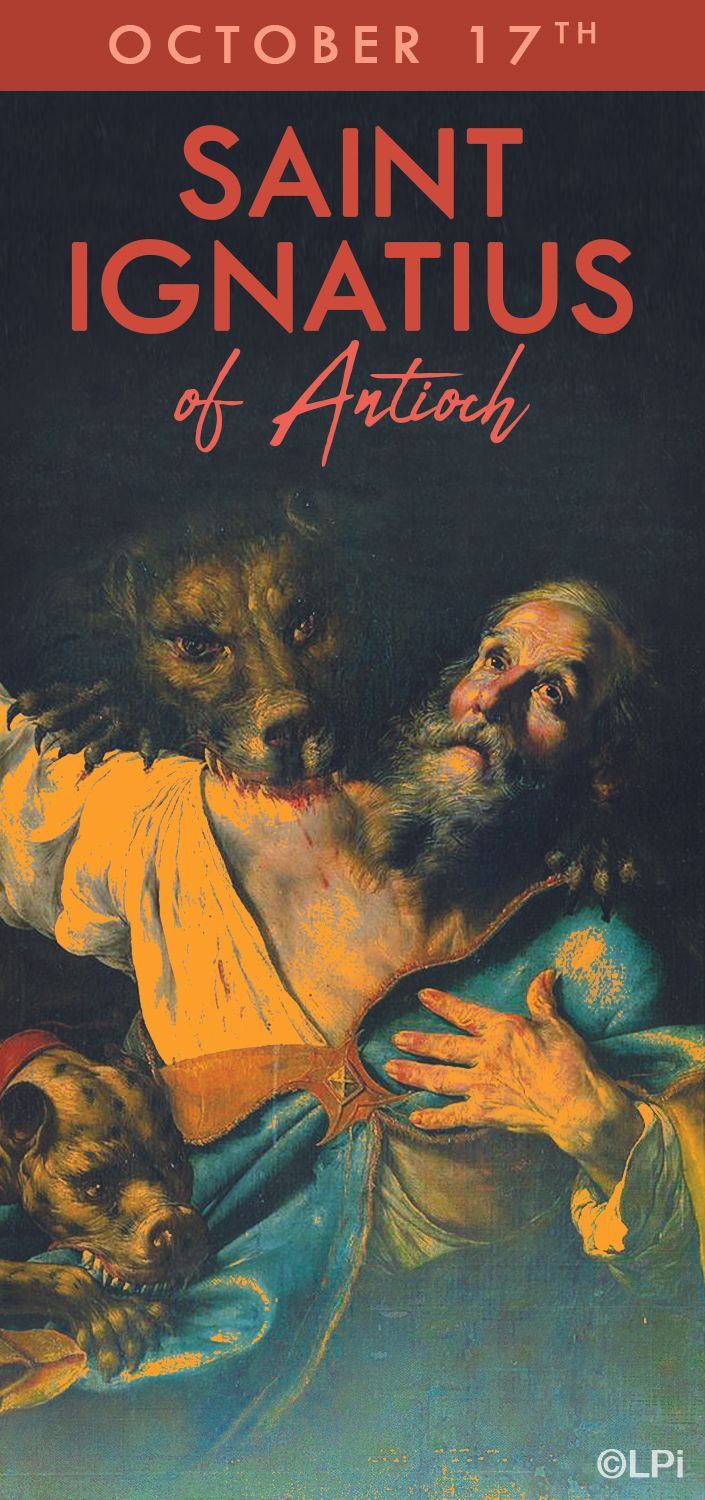
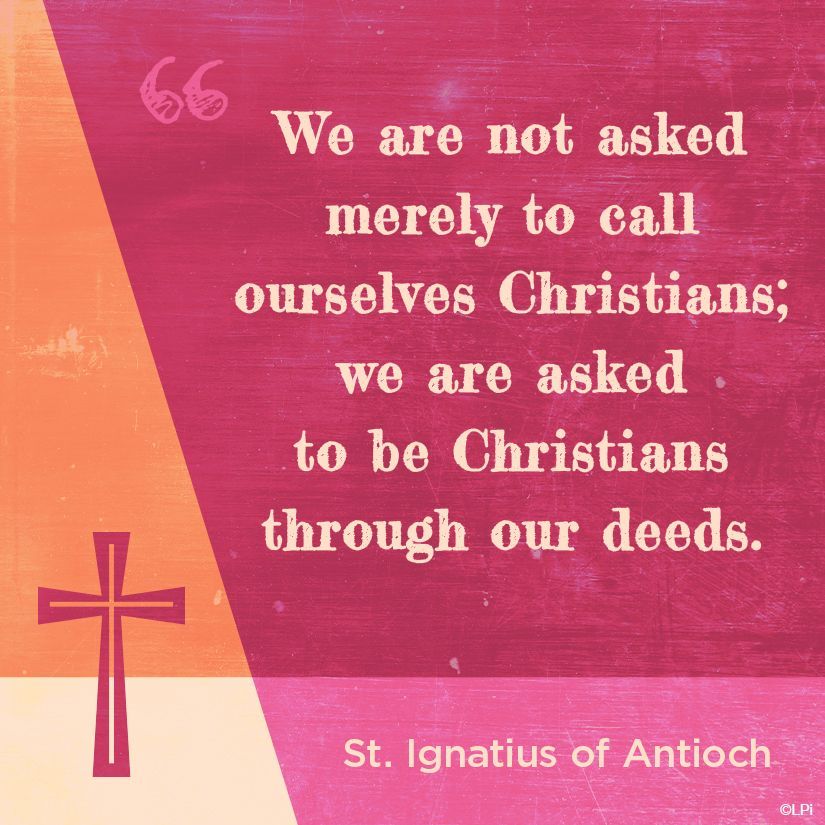
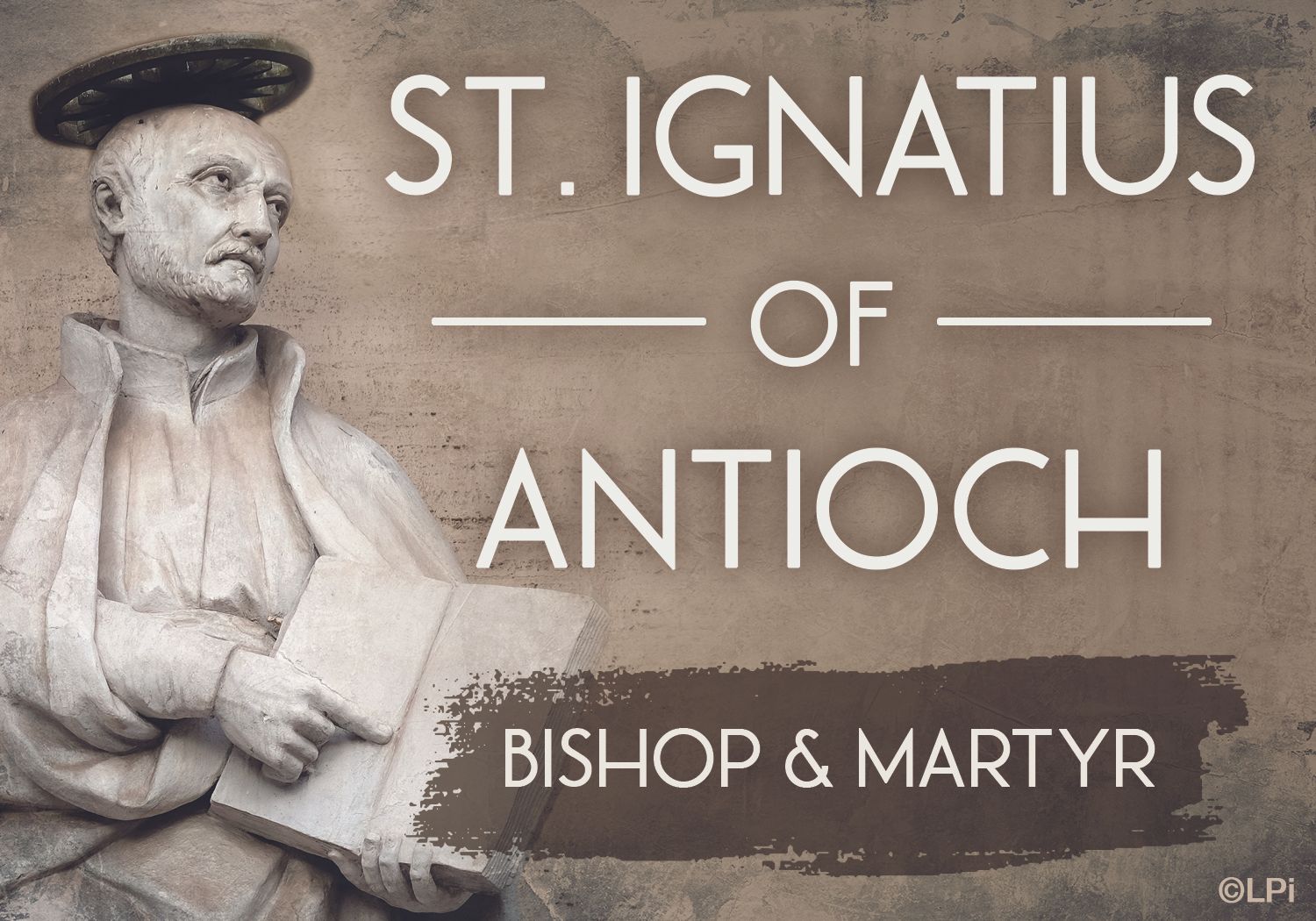
Saint Margaret Mary Alacoque - October 16
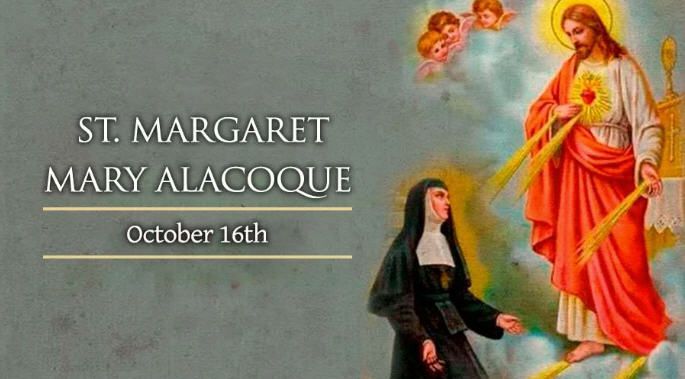
On Oct. 16, Roman Catholics celebrate the life of St. Margaret Mary Alacoque, the French nun whose visions of Christ helped to spread devotion to the Sacred Heart throughout the Western Church.
Margaret Mary Alacoque was born in July of 1647. Her parents Claude and Philiberte lived modest but virtuous lives, while Margaret proved to be a serious child with a great focus on God. Claude died when Margaret was eight, and from age 9-13 she suffered a paralyzing illness. In addition to her father's death as well as her illenss, a struggle over her family's property made life difficult for Margaret and her mother for several years.
During her illness, Margaret made a vow to enter religious life. During adolescence, however, she changed her mind. For a period of time she lived a relatively ordinary life, enjoying the ordinary social functions of her day and considering the possibility of marriage.
However, her life changed in response to a vision she saw one night while returning from a dance, in which she saw Christ being scourged. Margaret believed she had betrayed Jesus, by pursuing the pleasures of the world rather than her religious vocation, and a the at the age of 22, she decided to enter a convent.
Two days after Christmas of 1673, Margaret experienced Christ's presence in an extraordinary way while in prayer. She heard Christ explain that he desired to show his love for the human race in a special way, by encouraging devotion to “the heart that so loved mankind.”
She experienced a subsequent series of private revelations regarding the gratitude due to Jesus on the part of humanity, and the means of responding through public and private devotion, but the superior of the convent dismissed this as a delusion.
This dismissal was a crushing disappointment, affecting the nun's health so seriously that she nearly died. In 1674, however, the Jesuit priest Father Claude de la Colombiere became Margaret's spiritual director. He believed her testimony, and chronicled it in writing.
Fr. de la Colombiere – later canonized as a saint – left the monastery to serve as a missionary in England. By the time he returned and died in 1681, Margaret had made peace with the apparent rejection of her experiences. Through St. Claude's direction, she had reached a point of inner peace, no longer concerned with the hostility of others in her community.
In time, however, many who doubted her would become convinced as they pondered what St. Claude had written about the Sacred Heart. Eventually, her own writings and the accounts of her would face a rigorous examination by Church officials.
By the time that occurred, however, St. Margaret Mary Alacoque had already gained what she desired: “To lose myself in the heart of Jesus.” She faced her last illness with courage, frequently praying the words of Psalm 73: “What have I in heaven, and what do I desire on earth, but Thee alone, O my God?”
She died on October 17, 1690, and was canonized by Pope Benedict XV in 1920.
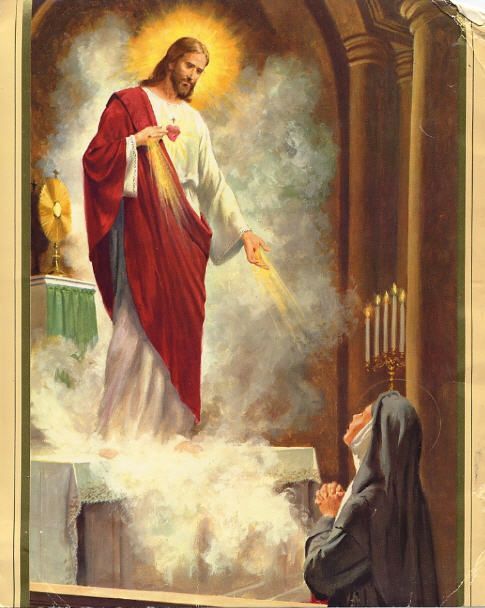
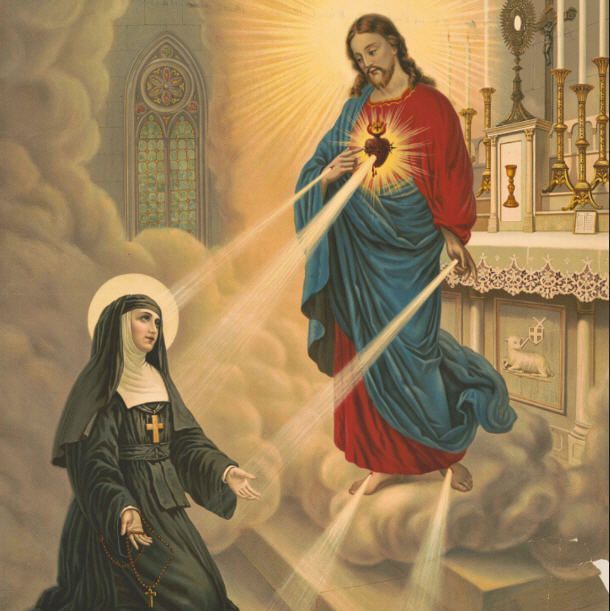
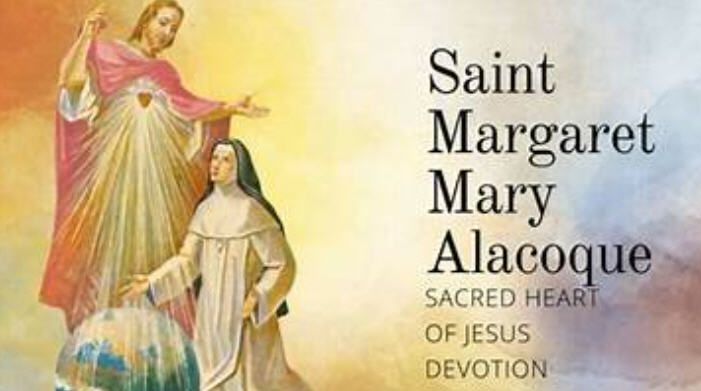
Saint Hedwig Religious - October 16
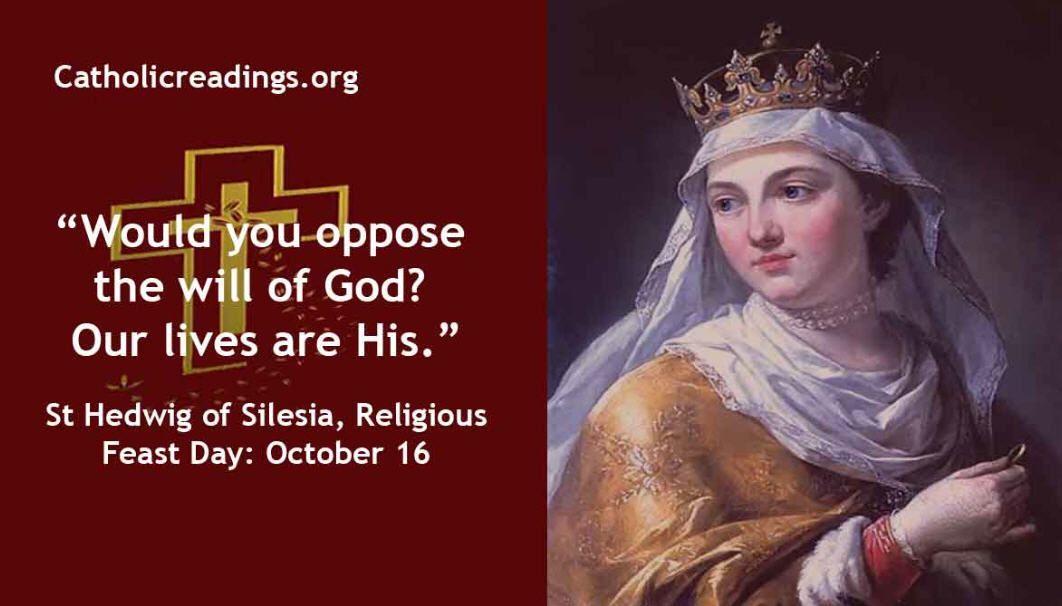
Reflection:
Hedwig of Andechs, later known as Hedwig of Silesia, was born at Andechs Castle in the Duchy of Bavaria within the Holy Roman Empire, in what is modern-day Germany. She was the daughter of Berthold IV, Count of Andechs and later Duke of Merania and Margrave of Istria and Carniola, and his wife, Agnes. Hedwig had at least six siblings who led influential lives: Ekbert became the Bishop of Bamberg; Berthold became the Archbishop of Kalocsa and Patriarch of Aquileia; Otto I became Duke of Merania and Margrave of Istria and Carniola; Agnes became Queen of France; Matilda became the abbess of the Benedictine Abbey of Kitzingen; and Gertrude became Queen of Hungary. Gertrude’s daughter and Hedwig’s niece was Saint Elizabeth of Hungary.
Raised by noble and faith-filled parents, Hedwig received a cultured and pious upbringing, along with an excellent education. Her early education might have taken place at the Benedictine Abbey of Kitzingen, where her sister would later become abbess. The Catholic faith was central to her family’s life, making her devout from a young age. Around the age of twelve, Hedwig married Henry I the Bearded, Duke of Silesia, thereby becoming the Duchess of Silesia. Their marriage was a political arrangement to form an alliance between two powerful ruling families. Silesia, in modern-day Poland, was almost 500 miles from Hedwig’s hometown of Andechs, which is in modern-day Germany.
Duke Henry and Duchess Hedwig were both deeply faithful. They had at least seven children together, four of whom survived to adulthood. Understanding well that the Church and state needed to be united, they used their authority and wealth primarily for advancing the Gospel, particularly through charitable works. They not only governed their lands effectively but also built hospitals and monasteries, lived out their Catholic faith, cared for the poor, led a life of daily prayer, and centered their primary mission around sharing the love of Christ with everyone.
After their seventh child was born, Henry and Hedwig took mutual vows of chastity in the presence of the local bishop to more fully devote themselves to the service of the Church. Hedwig moved close to a convent they had founded in Trebnitz, in present-day Wrocław, Poland. Hedwig’s faith and charity continued to blossom. She engaged in severe penances, cared for the poor, visited prisoners, and even washed the feet of lepers on Holy Thursday. She attended Mass daily and took joy in supplying bread and wine for the Eucharist. One of her greatest joys was caring for monasteries, including supplying them with food and clothing.
In 1238, when Hedwig was sixty-four, her husband Henry died. Her son, Henry II the Pious, succeeded his father as Duke of Silesia. Hedwig chose to spend her later years in greater solitude at the monastery in Trebnitz where her daughter was abbess. She did not take formal vows but lived as a lay sister, giving her the freedom to continue her abundant charitable works.
Hedwig died five years after her husband and was buried next to him in the Cistercian monastery of Trzebnica.
She was canonized twenty-four years after her death. During the canonization ceremony, it is said that Pope Clement IV called upon her intercession for the cure of a blind girl, and the cure was immediate.
As we honor this holy woman, we are reminded that earthly
wealth and power do not have to be obstacles to a deep love of God. Saint Hedwig shows us that our greatest temptations can also be the things that draw us closer to God if used rightly. As Jesus said, “Again I say to you, it is easier for a camel to pass through the eye of a needle than for one who is rich to enter the kingdom of God” (Matthew 19:24).
Saint Hedwig is among those who were both rich and powerful, yet entered through that eye of the needle and achieved great holiness. Ponder your own temptations in life. You might not have power or wealth to tempt you, but whatever it is, God can use every good thing and every cross we carry as a means of greater holiness. Allow Saint Hedwig to inspire you by her example.
Prayer: Saint Hedwig, you were born of noble and wealthy lineage, yet you never allowed that to deter you from holiness. Instead, you used all you had for the glory of God and the advancement of the Church. Please pray for me, that I may use all I have been given in life for God’s glory and never for selfish or vain purposes. Saint Hedwig, pray for me. Jesus, I trust in You.
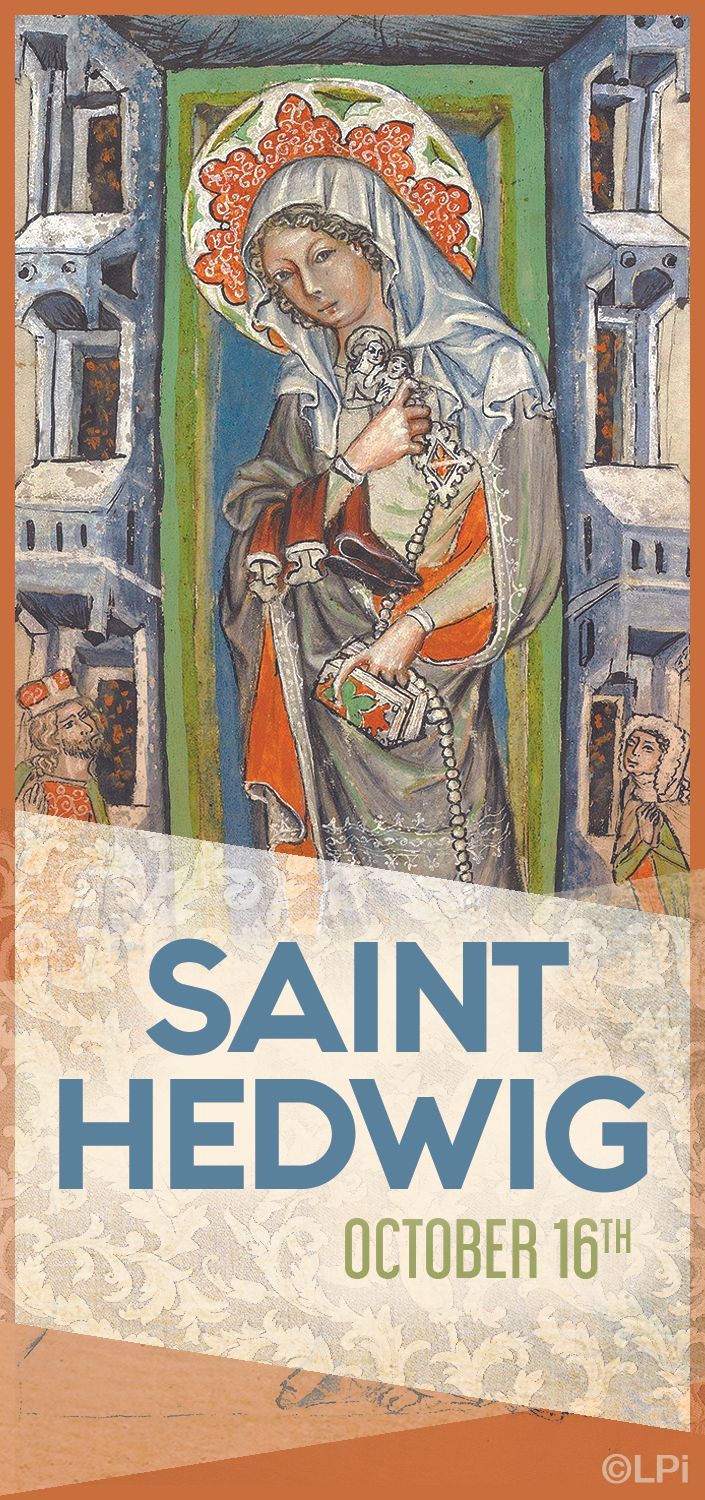
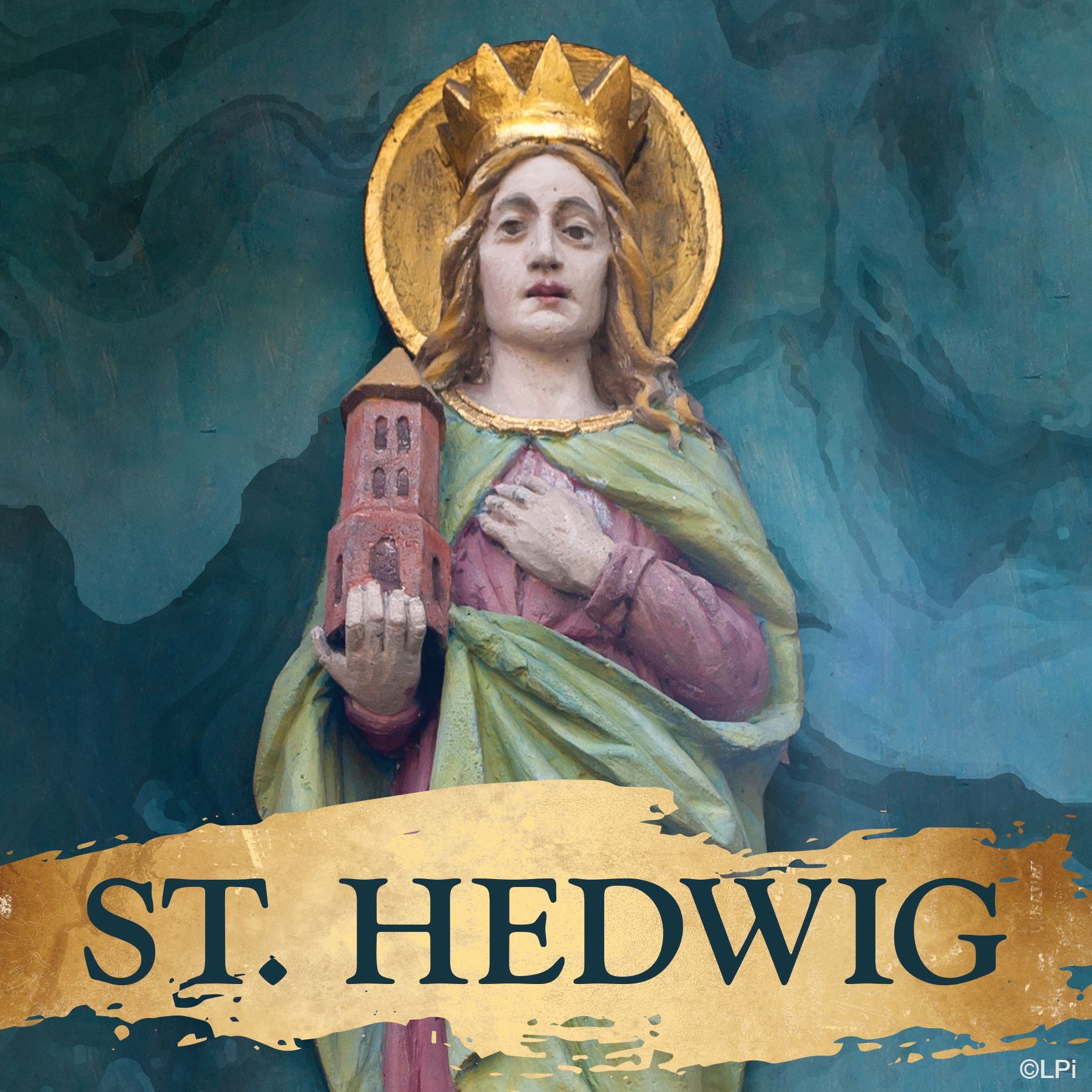
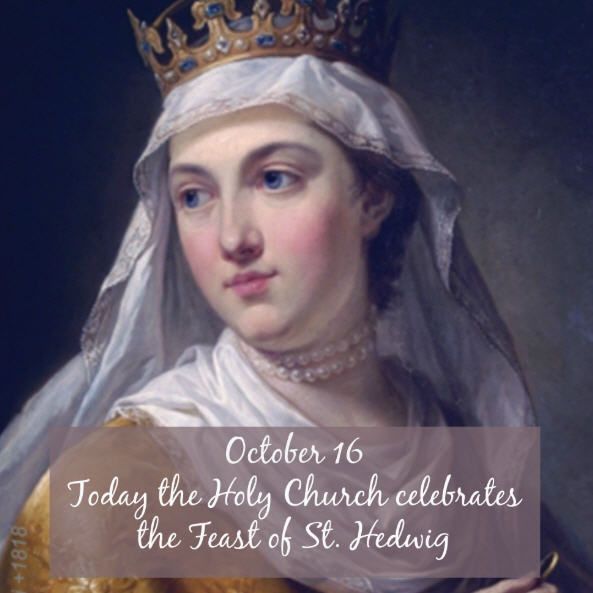
Quote:
The greater one is by birth, the greater one must be in virtue, and the more distinguished we are in station, the more we must distinguish ourselves by our conduct, in order to be a bright example to others. ~Maxim attributed to Saint Hedwig
Saint Gerard Majella - October 16
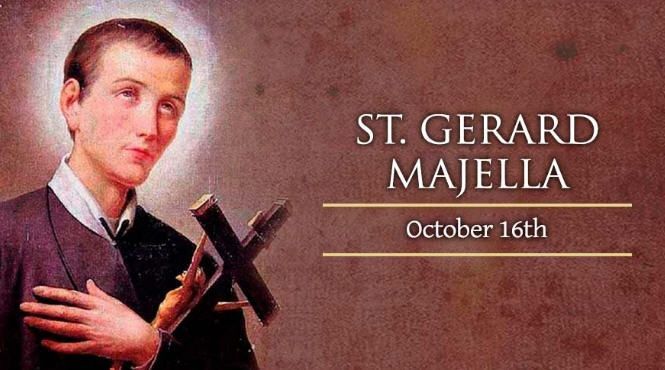
On October 16, we celebrate the feast of St. Gerard Majella. St. Gerard was born the son of a tailor on April 6, 1726. He grew up about fifty miles south of Naples in Muro Lucano, Italy in a large, poor family. When St. Gerard was only 12, his father Dominic Majella entered eternal rest. Upon the death of his father, his mother, beholden to poverty, sent St. Gerard away to live with his uncle. St. Gerard thereafter became an apprentice to a tailor. This tailor treated him well; however, the foreman treated him poorly. After serving as a sewing apprentice for a couple years, he instead became a servant in the household of the bishop of Lacedonia, who was a cantankerous master. Upon the death of the bishop in 1745, he returned home. At the age of 21, he became a journeyman. He split his earnings for his mother and the poor, and made offerings for the holy souls in purgatory. Afterwards, he opened his own tailor shop.
At a young age, St. Gerard tried to join the local Capuchins, but he was turned down twice due to his youth and poor health. He also tried to become a hermit, but that too was not God's will for him. He then entered the Congregation of the Most Holy Redeemer in 1749 and professed of perpetual vows under the Redemptorist's founder, Saint Alphonsus Liguori, in 1751.
He served as tailor and infirmarian and became known for his extraordinary supernatural gifts of bilocation, prophecy, ecstasies, visions, and infused knowledge. Though not ordained to the holy order of priest, his spiritual direction and advice were sought by many among the clergy and communities of nuns, to which he also gave conferences. He was most successful in converting sinners, and was widely known for his sanctity and charity.
In 1754, he was calumniated and accused of lechery by a woman named Neria Caggiano. Caggiano later admitted her charge was a lie. Even before she admitted to her falsehood, St. Gerard did not deny her charges. As these charges were still up in the air, his superiors became suspicious, so they put him under surveillance and excluded him from communion for months until the girl admitted that she had lied. When asked by Saint Alphonsus why he had kept silent in such circumstances, St. Gerard replied that he thought such patience was required in the face of unjust accusations. As St. Gerard bore this calumny with such humility and patience, Saint Alphonsus said, "Brother Gerard is a saint."
St. Gerard was sent to Naples soon after, but when the house was inundated by visitors wanting to see him, he was sent to Caposele a few months later. He served as the porter there and ministered to the poor of the town. St. Gerard spent the last few months of his life raising funds for new buildings at Caposele.
Just prior to his death, St. Gerard visited his friends, the Pirofalo family. One of the daughters ran and called after him as he left the home, as he dropped his handkerchief. Speaking through the gift of prophecy, he replied, "Keep it. It will be useful to you someday." Years down the road, when this young women was in danger of childbirth, she recalled these words of St. Gerard, and requested the handkerchief. The handkerchief was applied to her, thus a miracle: her pain immediately ceased and she gave birth to a healthy child.
St. Gerard died of tuberculosis on October 16, 1755 at the age of 29 in Caposele. He was beatified by Pope Leo XIII on January 29, 1893, and was canonized on December 11, 1904 by Pope Saint Pius X. He is the patron saint of mothers, motherhood, expectant mothers, childbirth, children, pregnant women, unborn children, the pro-life movement, the falsely accused, good confessions, and lay brothers.
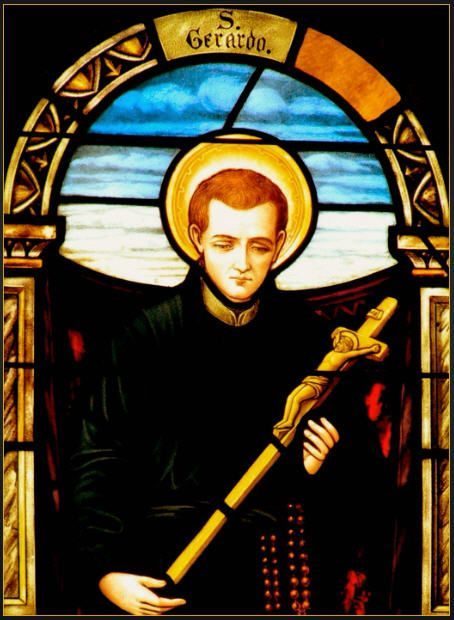
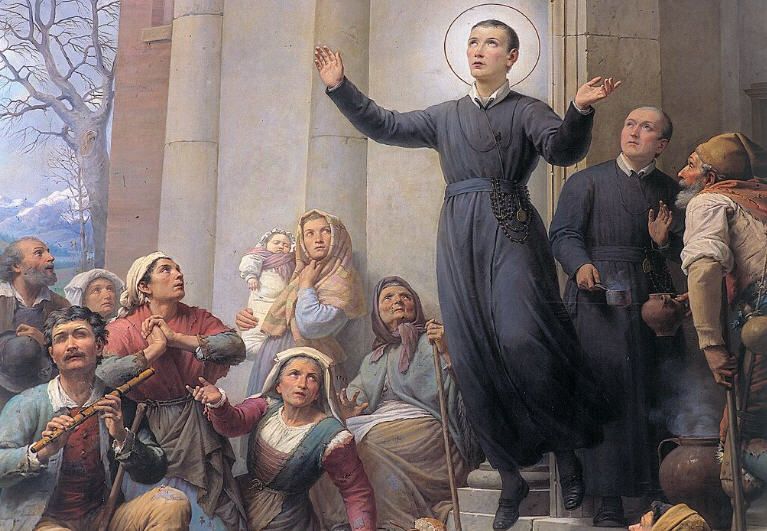
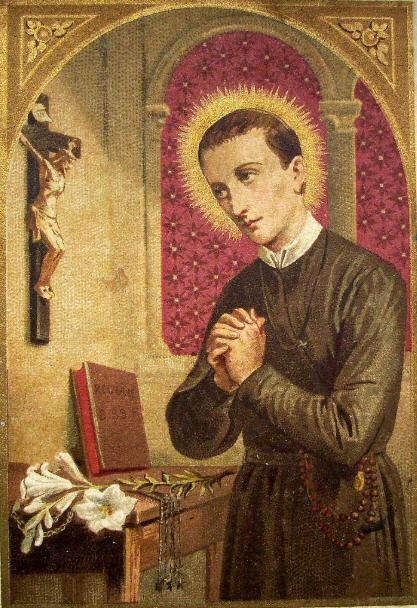
Saint Teresa of Avila - October 15
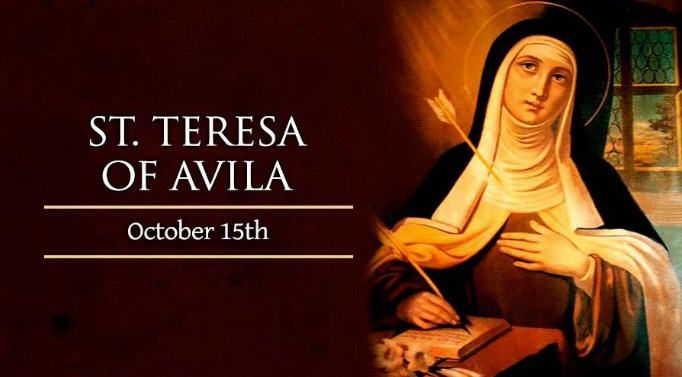
On Oct. 15, Roman Catholics celebrate the Spanish Carmelite reformer and mystic St. Teresa of Avila, whose life of prayer enriched the Church during the 16th century counter-reformation.
Teresa Sanchez Cepeda Davila y Ahumada was born in the Castilian city of Avila during the year 1515, the third child in a family descended from Jewish merchants who had converted to Christianity during the reign of King Ferdinand and Queen Isabella. Her father Alphonsus had become an ardent Catholic, with a collection of spiritual books of the type his daughter would later compose herself.
As a child, Teresa felt captivated by the thought of eternity and the vision of God granted to the saints in heaven. She and her younger brother Rodrigo once attempted to run away from home for the sake of dying as martyrs in a Muslim country, though they soon ran into a relative who sent them back to their mother Beatrice.
When Teresa was 14, her mother died, causing the girl a profound grief that prompted her to embrace a deeper devotion to the Virgin Mary as her spiritual mother. Along with this good resolution, however, she also developed immoderate interests in reading popular fiction (consisting, at that time, mostly of medieval tales of knighthood) and caring for her own appearance.
Though Teresa's spiritual directors in later life would judge these faults to be relatively minor, they still represented a noticeable loss of her childhood zeal for God. Alphonsus decided his teenage daughter needed a change of environment, and sent her to be educated in a convent of Augustinian nuns. Teresa found their life dull at first, but soon came to some understanding of its spiritual advantages.
Illness forced her to leave the convent during her second year. But the influence of her devout uncle Peter, along with her reading of the letters of the monk and Church Father St. Jerome, convinced Teresa that the surest road to salvation lay in forsaking marriage, property, and worldly pleasures completely. Against the will of her father, who wanted her to postpone the decision, she joined the Carmelite Order.
Teresa became a professed member of the order at age 20, but soon developed a serious illness that forced her to return home. She experienced severe pain and physical paralysis for two years, and was expected to die when she went into a coma for four days. But she insisted on returning to the Carmelite monastery as soon as she was able, even though she remained in a painful and debilitated state.
For the next three years the young nun made remarkable progress in her spiritual life, developing the practice of recalling herself into the presence of God through quiet contemplation. As her health returned, however, Teresa lapsed into a more routine prayer life. While she remained an obedient Carmelite, she would not re-establish this close personal connection to God for almost twenty years.
When she was nearly 40, however, Teresa found herself dramatically called back to the practice of contemplative mental prayer. She experienced profound changes within her own soul, and remarkable visions that seemed to come from God. Under the direction of her confessors, Teresa wrote about some of these experiences in an autobiography that she completed in 1565.
Teresa had always been accustomed to contemplate Christ's presence within her after receiving him in the sacrament of Holy Communion. Now, however, she understood that the presence she received did not simply fade: God was, in fact, with her always, and had been all along. It was simply a matter of putting herself in his presence, with love and attention – as one could do at any moment.
This revolution in her spiritual life enabled Teresa to play a significant role in the renewal of the Church that followed the Council of Trent. She proposed a return of the Carmelites to their original rule of life, a simple and austere form of monasticism – founded on silence and solitude – that had received papal approval in the 12th century and was believed to date back to the Old Testament prophet Elijah.
Together with her close collaborator, the priest and writer later canonized as Saint John of the Cross, she founded what is known today as the Order of Discalced Carmelites – “discalced,” meaning barefoot, symbolizing the simplicity to which they chose to return the order after a period of corruption. The reform met with fierce opposition, but resulted in the founding of 30 monasteries during her life.
Teresa's health failed her for the last time while she was traveling through Salamanca in 1582. She accepted her dramatic final illness as God's chosen means of calling her into his presence forever.
“O my Lord, and my spouse, the desired hour is now come,” she stated. “The hour is at last come, wherein I shall pass out of this exile, and my soul shall enjoy in thy company what it hath so earnestly longed for.”
St. Teresa of Avila died on Oct. 15, 1582. She was canonized on March 22, 1622, along with three of her greatest contemporaries: St. Ignatius Loyola, St. Francis Xavier, and St. Philip Neri.
In 1970, Pope St. Paul VI proclaimed St. Teresa as one of the first two woman Doctors of the Church, along with 14th century Dominican St. Catherine of Siena.
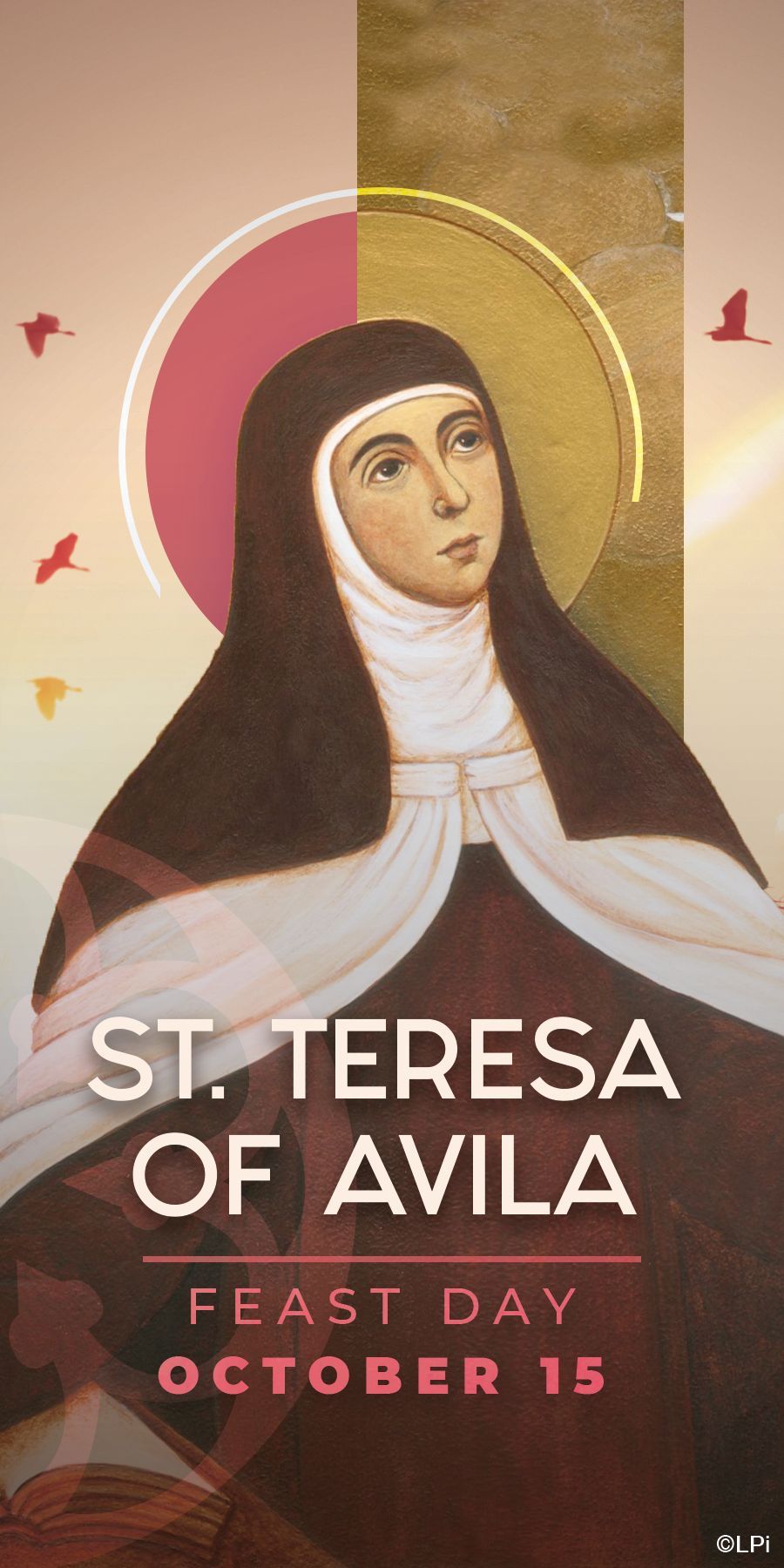
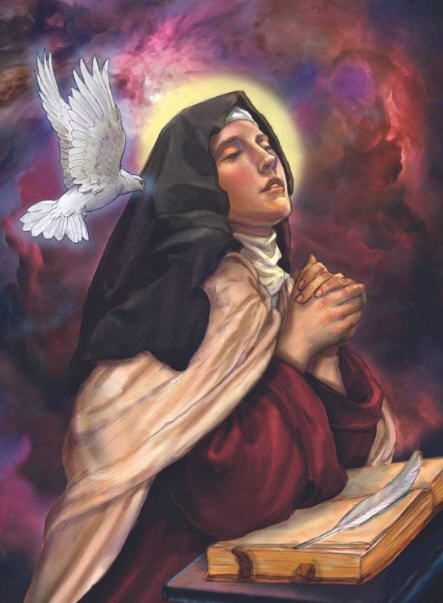
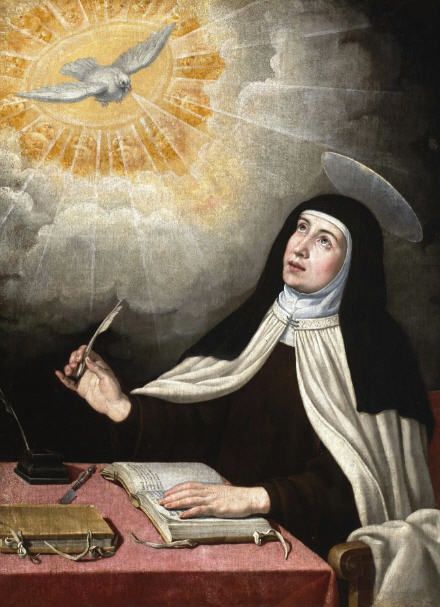
Saint Callistus I - October 14
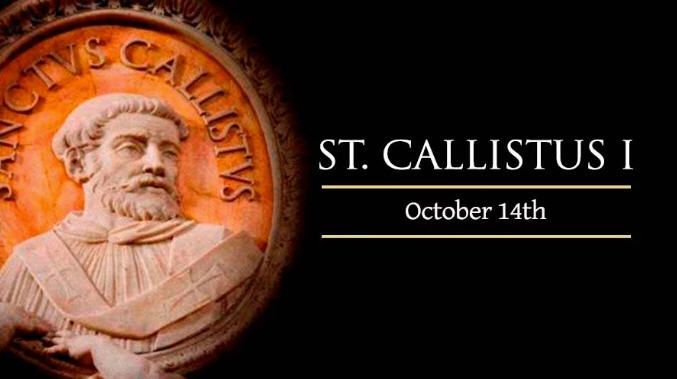
Pope Callistus I is celebrated in churches throughout the world as a saint and martyr on October 14. The saint caused a major controversy, including a schism that lasted almost two decades, by choosing to emphasize God's mercy in his ministry. However, the early Pope's model of leadership has endured, and his martyrdom in the year 222 confirmed his example of holiness.
Because no completely trustworthy biography of Pope Callistus I exists, historians have been forced to rely on an account by his contemporary Hippolytus of Rome. Although Hippolytus himself was eventually reconciled to the Church and canonized as a martyr, he vocally opposed the pontificate of Callistus and three of his successors, to the point of usurping papal prerogatives for himself (as the first “antipope”). Nevertheless, his account of Callistus' life and papacy provides important details.
According to Hippolytus' account, Callistus – whose year of birth is not known - began his career as a highly-placed domestic servant, eventually taking responsibility for his master's banking business. When the bank failed, Callistus received the blame, and attempted to flee from his master. Being discovered, he was demoted to serve as a manual laborer in Rome. Thus, under inauspicious circumstances, Callistus came as a slave to the city where he would later serve as Pope.
Matters went from bad to worse when he was sent to work in the mines, possibly for causing a public disturbance, if Hippolytus' account is to be trusted. However, Callistus may also simply have been sentenced due to a persecution of Christians, as he was among the many believers eventually freed on the initiative of Pope St. Victor I.
During the subsequent reign of Pope Zephyrinus, Callistus became a deacon and the caretaker of a major Roman Christian cemetery (which still bears his name as the “Cemetery of St. Callistus”), in addition to advising the Pope on theological controversies of the day. He was a natural candidate to follow Zephyrinus, when the latter died in 219.
Hippolytus, an erudite Roman theologian, accused Pope Callistus of sympathizing with heretics, and resented the new Pope's clarification that even the most serious sins could be absolved after sincere confession. The Pope's assertion of divine mercy also scandalized the North African Christian polemicist Tertullian, already in schism from the Church in Carthage, who also erroneously held that certain sins were too serious to be forgiven through confession.
Considered in light of this error, Hippolytus' catalogue of sins allegedly “permitted” by Callistus – including extramarital sex and early forms of contraception - may in fact represent offenses which the Pope never allowed, but which he was willing to absolve in the case of penitents seeking reconciliation with the Church.
Even so, Callistus could not persuade Hippolytus' followers of his rightful authority as Pope during his own lifetime. The Catholic Church, however, has always acknowledged the orthodoxy and holiness of Pope St. Callistus I, particularly since the time of his martyrdom – traditionally ascribed to an anti-Christian mob - in 222.
St. Callistus' own intercession after death may also have made possible the historic reconciliation between his opponent Hippolytus, and the later Pope Pontian. The Pope and former antipope were martyred together in 236, and both subsequently canonized.
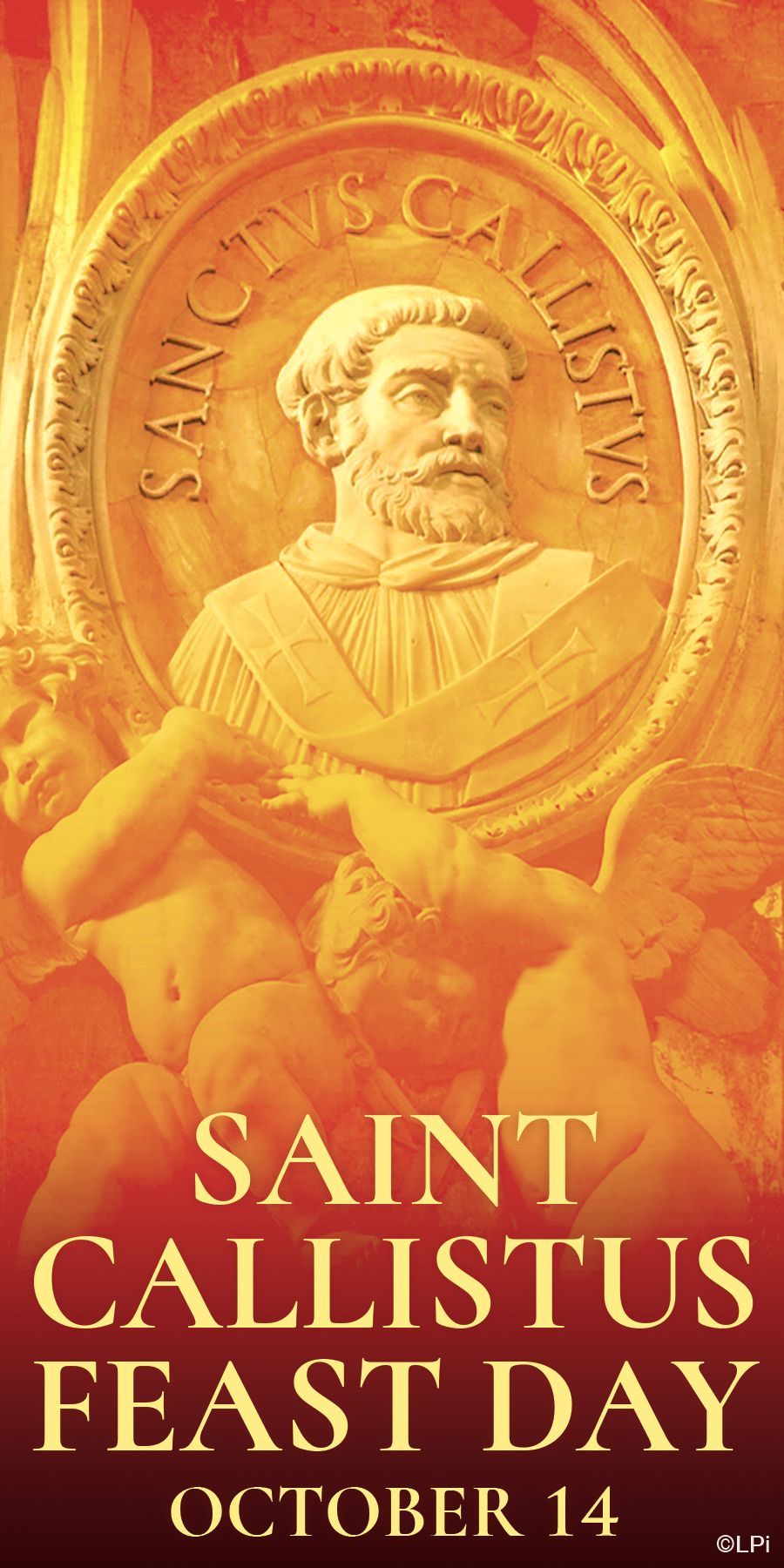
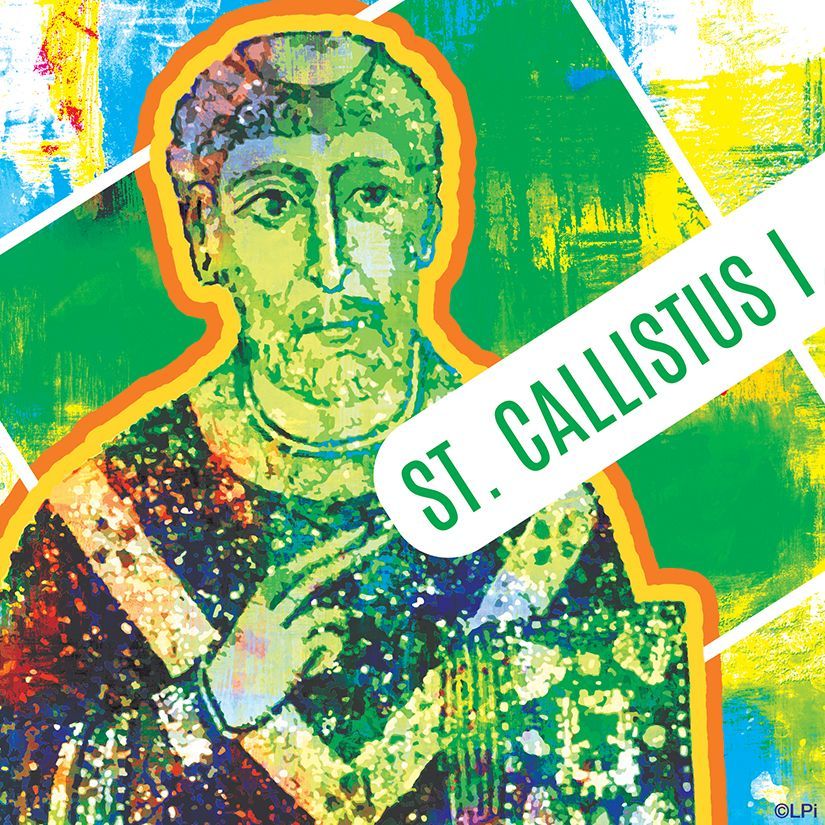
Happy Columbus Day and Indigenous People's Day - October 13


Saint Edward The Confessor - October 13
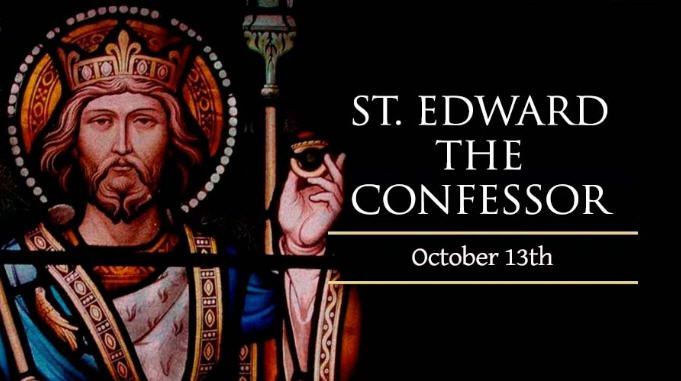
St. Edward was born in 1003 as the son of the Duke of Normandy and nephew of King Edmund Ironside of England. He grew up in exile in Normandy from the age of 10 when the Danes gained control of England, and the early experience of loss, coupled with his earnest religious piety, caused him to renounce worldly ambition and devote himself to the love of God.
On the death of the Danish king, Canute, in 1042, he was called to the throne of England, which he accepted dutifully and held until 1066. His saintly bearing made him a popular sovereign, and his actions even more so. He abolished an unjust tax and was known to cure people with his touch.
Having made a vow of chastity, he accepted marriage for the sake of his kingdom, but lived with his queen in celibacy, as brother and sister.
Unable to fulfill a vow to embark on a pilgrimage to Saint Peter’s tomb without leaving his subjects vulnerable to attack, his vow was commuted by the pope to the rebuilding of Saint Peter’s Abbey in Westminister, where he was buried upon his death a week after it’s dedication.
Edward died on January 5, 1066, and was canonized by Pope Alexander III in 1161.
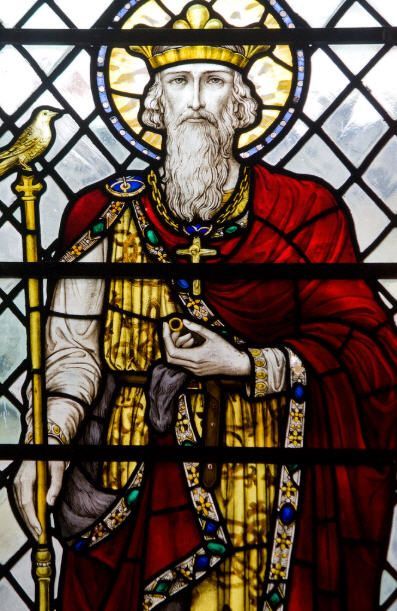
Our Lady of the Pillar - October 12
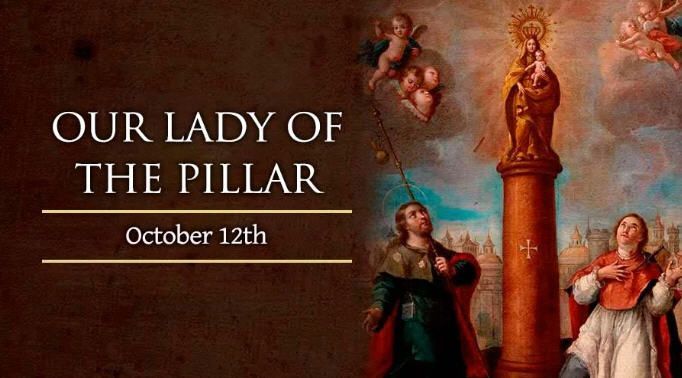
The first Marian apparition in history appeared to Saint James the Apostle, the brother of Saint John the Evangelist, on the bank of the river Ebro in Saragossa, Spain. Unlike every other recorded apparition, this one took place during the earthly life of the Mother of God.
According to tradition, she had promised Saint James that when he needed it most in his difficult mission to the pagans in today's Spain, she would appear to him to encourage him.
In the year 40 A.D., while praying one night on the tobrt bank, the Virgin appeared with the Child Jesus standing on a pillar and asked Saint James and his eight disciples to build a church on the site, promising that “it will stand from that moment until the end of time in order that God may work miracles and wonders through my intercession for all those who place themselves under my patronage.”
The church of Our Lady of the Pilar in Zaragoza, is the first church dedicated to Mary in history and it remains standing to this day, having survived invasions and wars – in the Spanish Civil War of 1936-1939 three bombs were dropped on the church and none of them exploded.
Our Lady is also said to have given the small wooden statue of the apparition to Saint James which now stands on a pillar in the church.
Nuestra Señora del Pilar is the patron of Spain and all Hispanic peoples. October 12, 1492, the feast of the Virgin of the Pillar, is the day Christopher Colombus first sighted American land, and when the first Mass in the Americas was celebrated.
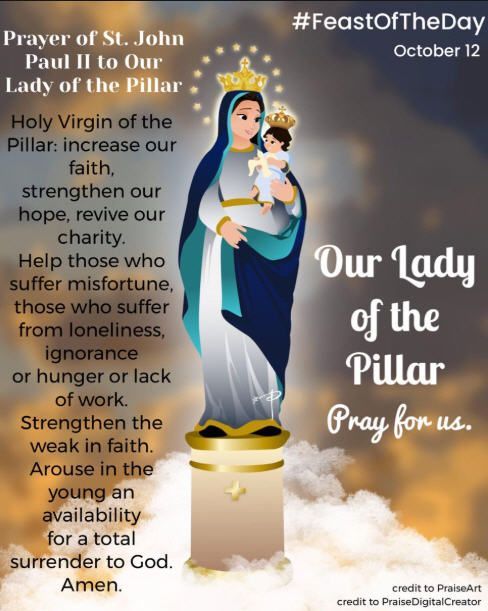
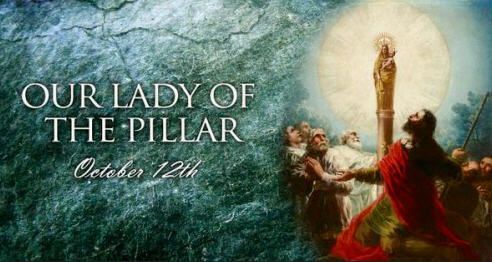
Pope Saint John XXIII - October 11
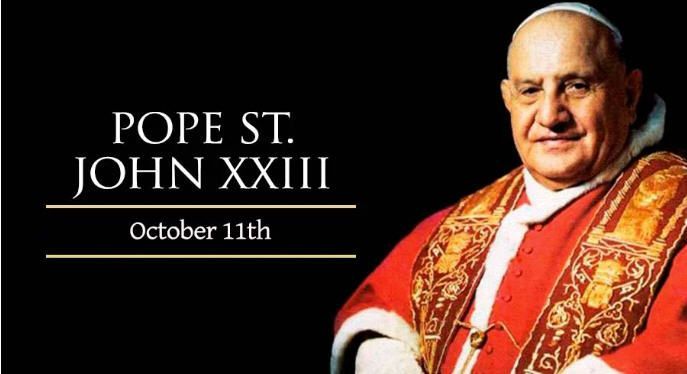
Saint John XXIII, Pope | October 11
Saint John XIII was born Angelo Giuseppe Roncalli on November 25, 1881, in a small village in Italy. He was ordained in 1904 and later earned a doctorate in canon law. During World War I he served as a stretcher-bearer and chaplain for the Italian army. Beginning in 1925 he served as a Vatican diplomat, first in Bulgaria, then in Greece and Turkey. From 1935 through the Second World War he helped save thousands of Jewish people. In 1944 he was named papal nuncio to France. He was named cardinal and appointed patriarch of Venice in 1953. A quiet pastoral life passing into retirement, however, was not in God’s plan for the saint.
Angelo Giuseppe Roncalli was elected Pope in 1958 and took the name John. His papacy was short, but full of action. He transformed the Vatican, calling for openness, a spirit of ecumenism, and the setting aside of politics. He called the Second Vatican Council in the fall of 1962, the first meeting of its kind in almost a century, setting the agenda to work for the spiritual regeneration of the Church. His efforts changed the face of the Catholic Church. At the same time worked diligently and publicly to ease tensions during the Cuban missile crisis, pleading with leaders for the end of the Cold War.
Saint John XXIII’s kindness, sense of pastoral care, and works of reconciliation and peacemaking made him beloved not only to Catholics but to people around the world. He died on June 3, 1963. He was beatified in 2000 by St. John Paul II, and canonized by Pope Francis in 2014.
The Feast of St. John XXIII
On October 11th, we celebrate John XXIII, the pope who was first a pastor. Born in Italy at the turn of the 19th century, he was ordained in 1904. His priestly assignments brought him in close contact with the faithful time and time again. He served as a seminary professor, an assistant to the bishop leading pilgrimages and social programs, and a medic and chaplain during World War I. After his ordination as a bishop, he served in Bulgaria, Turkey, and Greece to assist the Church there in her dialogue with Muslims and other Christian communities. John XXIII would bring this concern for personal dialogue into his papacy. He convened the Second Vatican Council to promote renewal in the Church as it faced the challenges of the modern world. St. John XXIII, pray for us!
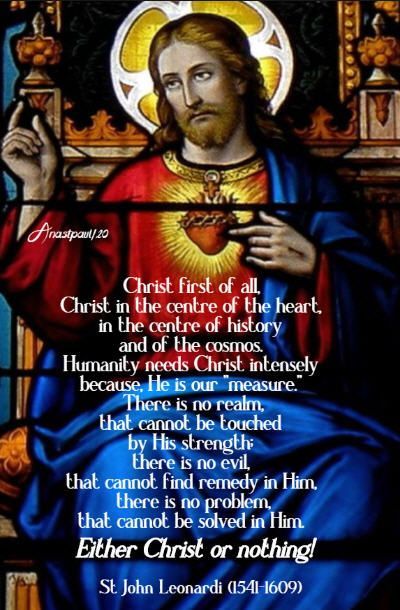
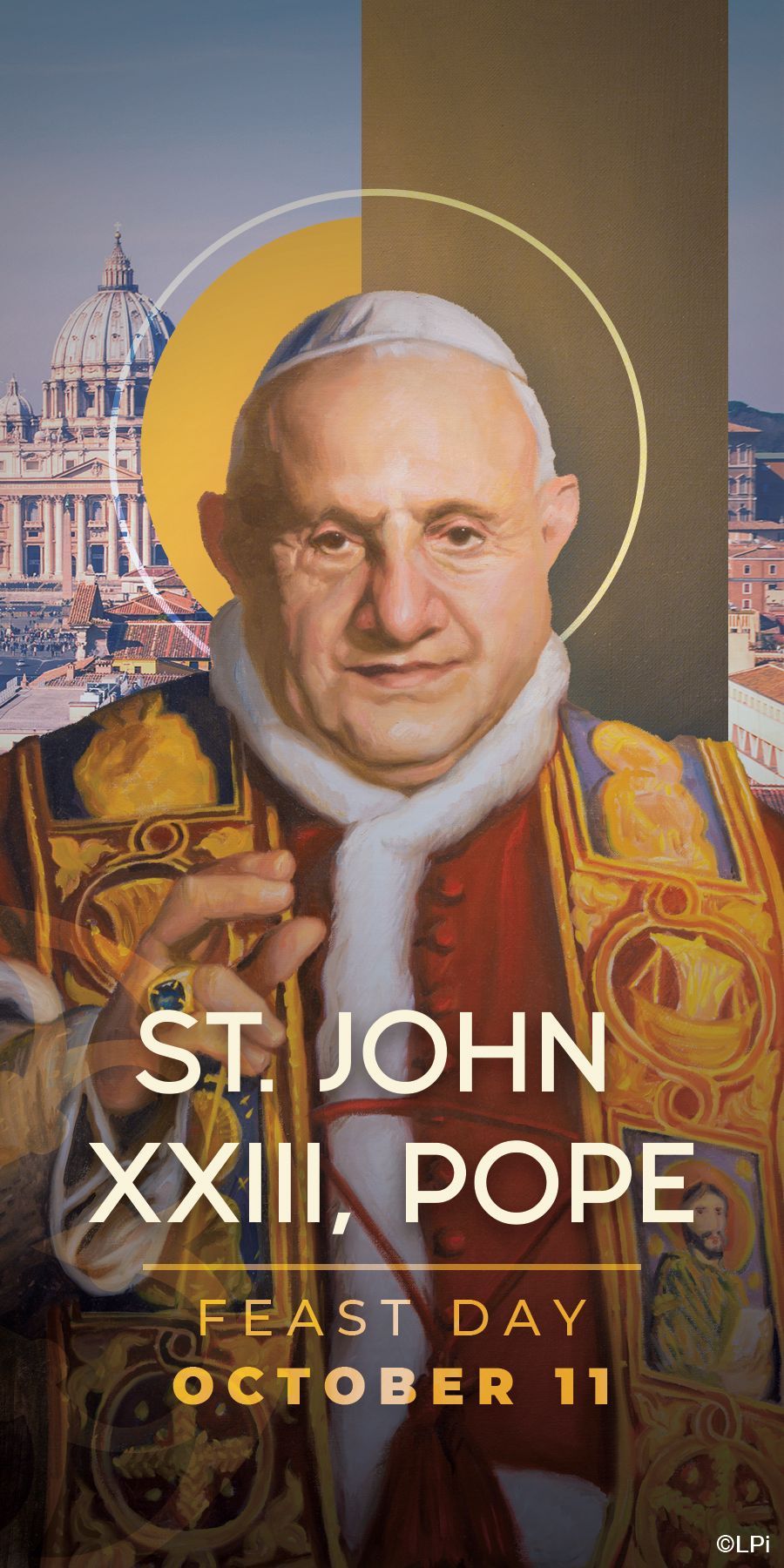

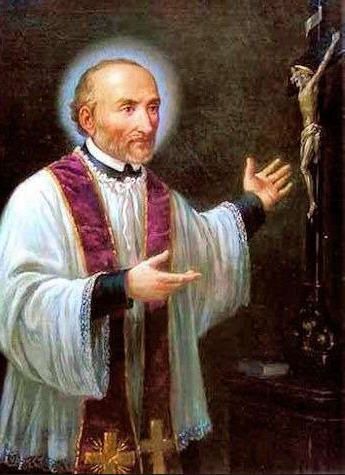
Saint Frances Borgia - October 10
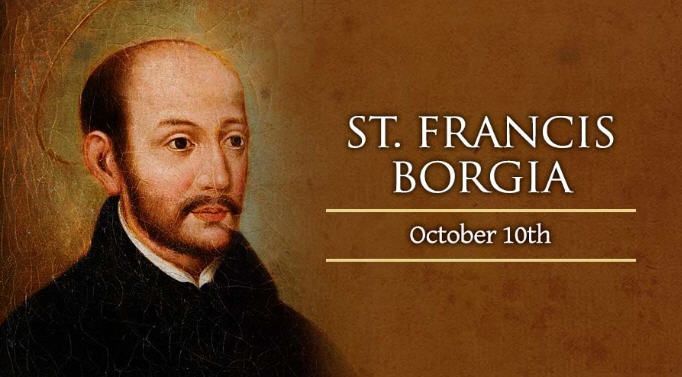
Francis Borgia was born October 28, 1510 in Gandia, Valencia, Spain as the son of the Duke of Gandia, the great grandson, from his father’s side, of Pope Alexander VI, the notorious Borgia pope, and from his mother’s side, the great grandson of King Ferdinand of Aragon.
Francis’ grandmother joined her daughther in a convent of Poor Clares after the death of her husband and held a pious influence in the court of the Borgia, to which Francis is indebted. It was with these two women that holiness penetrated into the scandalous lineage of the Borgia family.
Francis grew to be a pious young man, posessed of many natural gifts and a favorite at the court of Charles V. It is recounted that one day Francis passed through Alcalá, followed by his escort, and exchanged an emotional glance with a poor man being escorted to prison by the Inquisition. This man was Ignatius of Loyola, and at this moment Francis could not have had any idea what an important role this man would play in his destiny.
In 1539 Francis was appointed Viceroy of Catalonia, and four years later, upon the death of his father, the Duke of Gandia. He built a university there, received the degree of Doctor in Theology, and invited the Jesuits to his duchy.
His wife died in 1546, and Francis entered the Society of Jesus in 1548, but was ordered by the Pope to remain in the world until he had fulfilled his obligations to his ten children and his duchy.
Two years later he left Gandia, never to return, and joined the Jesuits in Rome. He immediately set about initiating grand projects – he convinced Ignatius to found the Roman College, and a year later he left for Spain, where his preaching and example sparked a renewal of religious fervour in the country, drawing pilgrims from far and wide to hear him preach.
In 1556 he was placed in charge of all the missions of the Society, and his energetic work transformed them. He also initiated the missions to Peru, New Spain and Brazil.
He was elected as general on July 2, 1565, and although in poor health for his last years, he executed the governance and initiated projects of the Society with great energy. He introduced so many reforms to the society of Jesus that he was considered in some ways to be its second founder. Francis was a man of contemplation and action in the fullest sense, and clearly drew much strength from the silence of his prayer.
He died in Rome on September 30, 1572, in Ferrara, Spain, two days after returning from an apostolic journey to Spain.
Saint Francis Borgia is one of the great saints of the Catholic Reformation, and was cannonized by Pope Clement X in 1670.
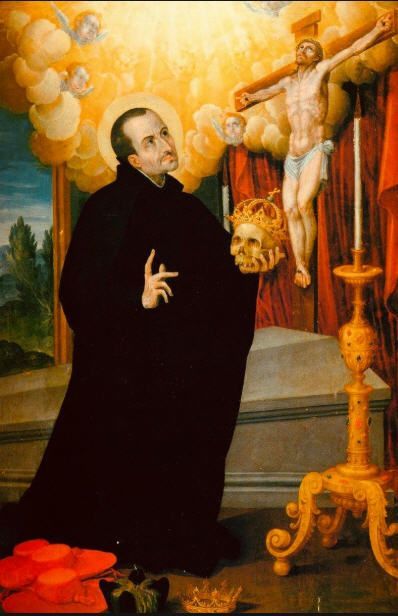
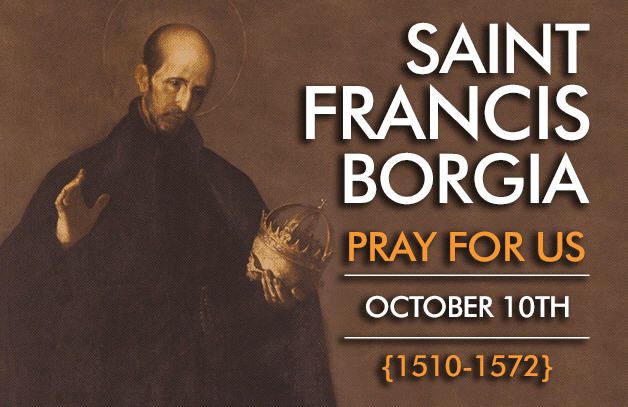
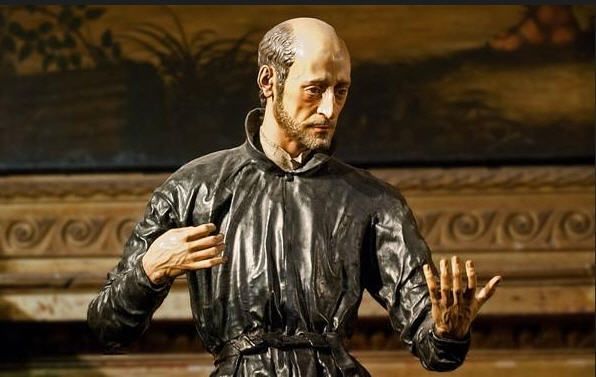
Saint Denis - October 9
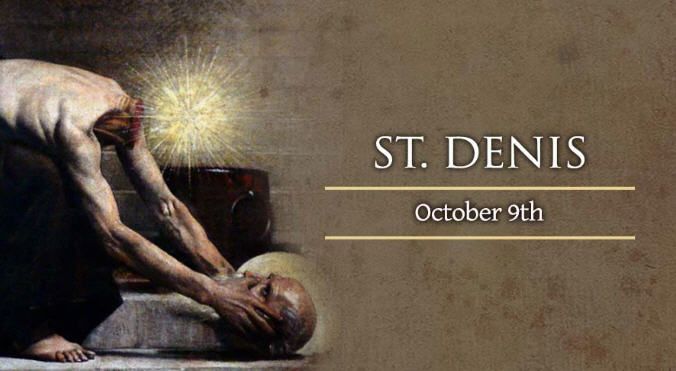
Denis of Paris (Latin: Dionysius) was a 3rd-century Christian martyr and saint. According to his hagiographies, he was bishop of Paris (then Lutetia) in the third century and, together with his companions Rusticus and Eleutherius, was martyred for his faith by decapitation. Some accounts placed this during Domitian's persecution and incorrectly identified St Denis of Paris with the Areopagite who was converted by Paul the Apostle and who served as the first bishop of Athens. Assuming Denis's historicity, it is now considered more likely that he suffered under the persecution of the emperor Decius shortly after AD 250.[3]
Denis is the most famous cephalophore in Christian history, with a popular story claiming that the decapitated bishop picked up his head and walked several miles while preaching a sermon on repentance. He is venerated in the Catholic Church as a patron saint of both France and Paris and is one of the Fourteen Holy Helpers. A chapel was raised at the site of his burial by a local Christian woman; it was later expanded into an abbey and basilica, around which grew up the French city of Saint-Denis, now a suburb of Paris.
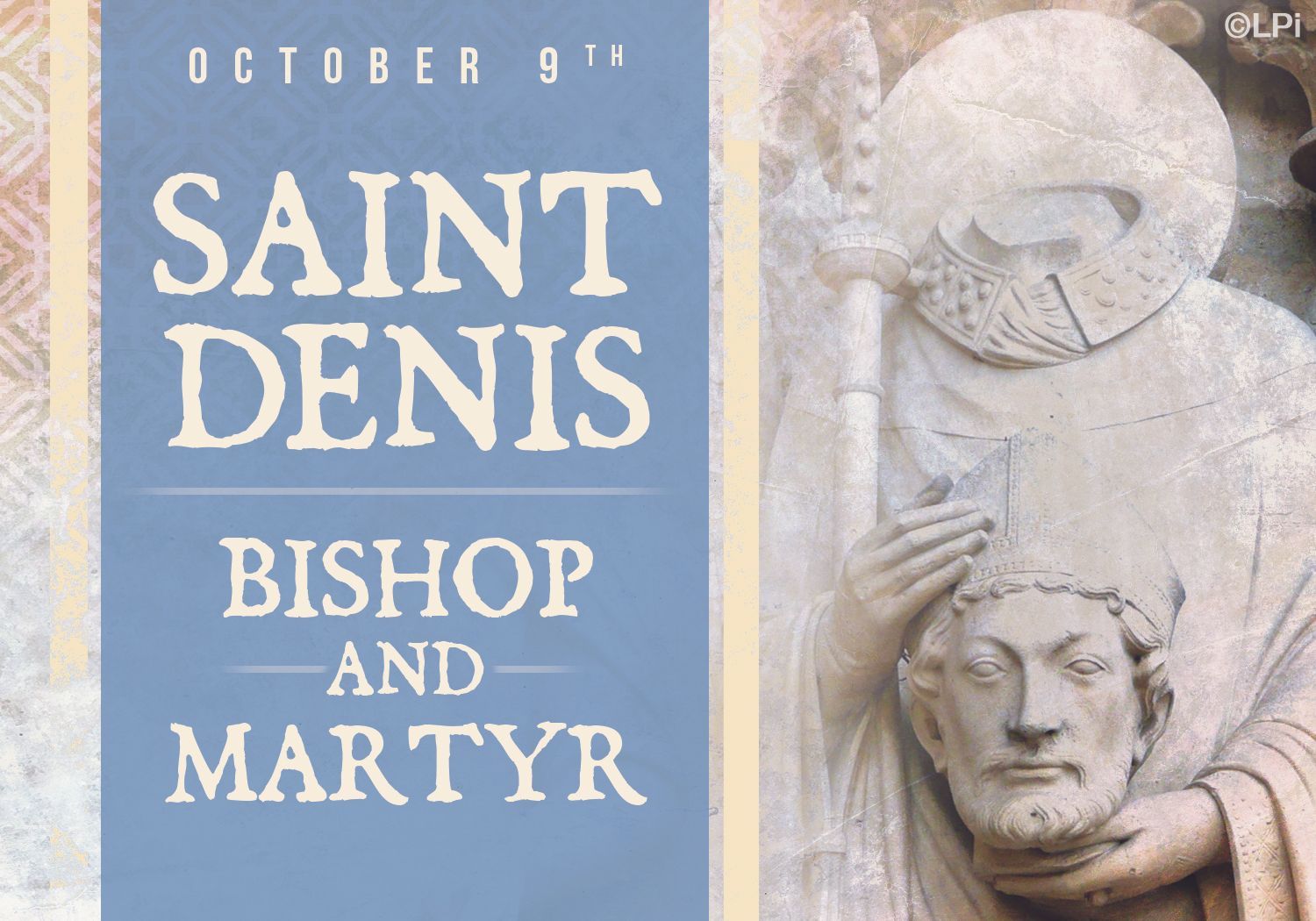

Saint John Leonardi - October 9
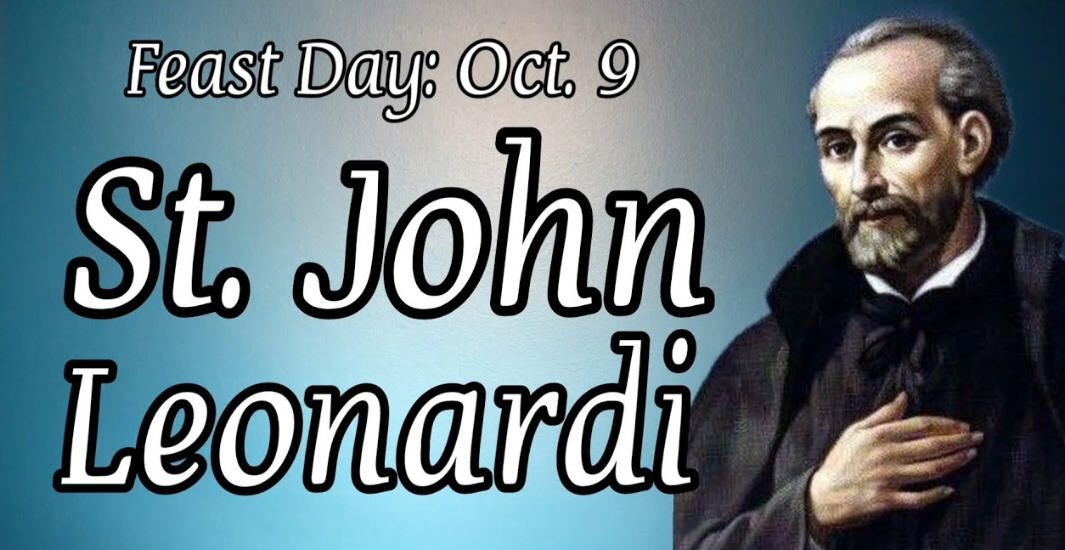
On Oct. 9, the Catholic Church honors the memory of Saint John Leonardi, who studied to become a pharmacist but eventually chose the life of the priesthood. He founded a religious order, and helped establish the Vatican department now known as the Congregation for the Evangelization of Peoples.
Declared the patron of pharmacists in 2006 because of his original career path, St. John Leonardi was hailed by Pope Benedict XVI during a 2009 general audience as a “luminous priestly figure” whose life offers a model for contemporary clergy. In that address, the Pope highlighted the saint's Christ-centered approach to the social and spiritual problems of his day.
The 16-century Italian priest saw that humanity “stands in extreme need of Christ,” Pope Benedict recalled. Thus, St. John Leonardi's apostolate proceeded in the knowledge that “there is no area that cannot be touched by his power; there is no evil that cannot find a remedy in him, no problem that is not resolved” in the person of Jesus Christ.
Born to middle-class parents during 1541 in the Tuscan region of Lucca, John (or Giovanni) Leonardi was the youngest of seven children. He enrolled at age 17 in courses to become a pharmacist, studied diligently for 10 years and became certified to practice the trade. But the young apothecary had long been interested in the priesthood, and soon turned to the study of theology to prepare for ordination.
Ordained in 1572, John soon became the spiritual director to a small group of young men looking to pursue vocations to the priesthood. They organized a communal form of life near a local church, and began the process that would lead to the formation of the present day Order of the Mother of God (also known as the Clerks Regular of the Mother of God).
Civic leaders in Lucca opposed the formation of a new religious order, however, and acted to stop its formation. While ultimately ineffective, their efforts forced John Leonardi to spend most of the remainder of his life outside Lucca, with special exceptions granted by its government under the influence of the Pope.
In keeping with the spirit of the Catholic Counter-Reformation launched by the Council of Trent, John Leonardi and his congregation of priests sought to deepen the knowledge and practice of the faith among clergy and lay Catholics. In a letter written to Pope Paul V during the early 17th century, he stressed the universal call to holiness of life for all members of the Church.
“As regards the remedies required by the Church as a whole, its reformation must be undertaken among high and low alike, among its leaders as well as its children,” he told the Pope. But he believed that priority should be given to the formation of pastors, “so that reform begins among those from whom it should be communicated to others.”
John received Papal approval for the Order of the Mother of God in 1595, and he was also appointed to oversee the reform of two important monasteries. Although the order's work was largely limited to Italy, John followed the suggestions of his spiritual director St. Philip Neri by founding a seminary for foreign missionaries, which became the present-day College for the Propagation of the Faith.
St. John Leonardi died in Rome on Oct. 9, 1609, having contracted a deadly illness while caring for victims of a plague outbreak. Pope Pius XI canonized him in 1938.
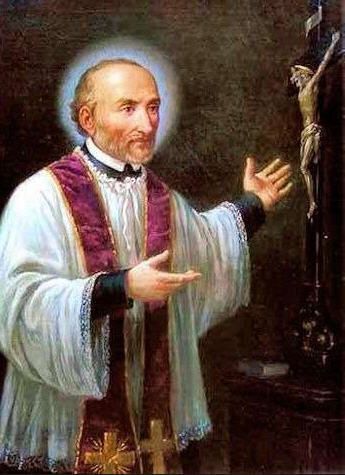
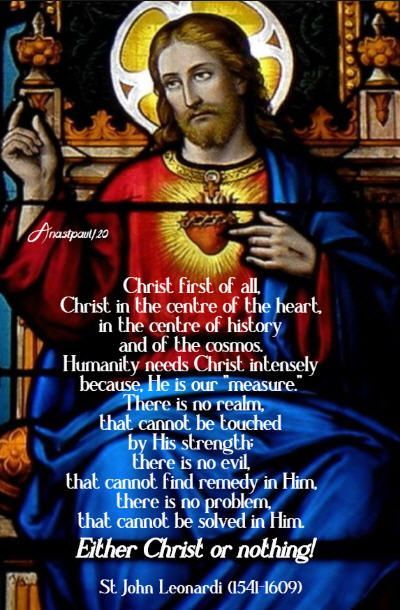
Saint Pelagia - October 8
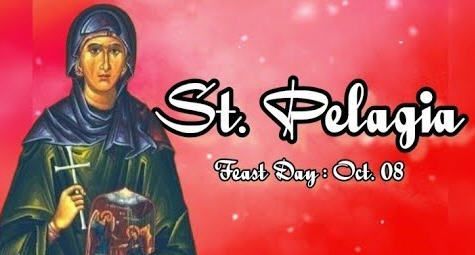
St. Pelagia was head of a dance troupe in Palestinian Antioch, and lived a life of frivolity and prostitution. One day while she was still a dancer, Pelagia was passing by a church dressed with her very elegant and provocative clothing. Bishop Nonnus of Edessa was preaching at that moment. Even though the parishioners turned their faces away from the sinner, the Bishop noticed her great outer beauty and spiritual greatness. Later that day, he prayed in his cell for the sinner and learned that as she took care of the adornment of her body to appear beautiful, he and his fellow priests should put more work in adorning their wretched souls.
The following day Pelagia went to hear St. Nonnos preach. He was talking about the Last Judgement and its consequences. She was so moved and impressed with the sermon, that with tears of repentance in her eyes, she asked the Bishop to baptize her. Seeing the sincerity of her wishes and repentance, he agreed.
That same night the devil appeared to Pelagia urging her to return to her former life. She started praying and signed herself with the Sign of the Cross, after which the devil vanished.
She gave all her wealth and valuables to St. Nonnos so that he could distribute them and give them to aid the poor. The bishop then ordered their distribution and said: "Let this be wisely dispersed, so that these riches gained by sin may become a wealth of righteousness." She left Antioch dressed in man’s clothes.
After that, she journeyed to the Mount of Olives in Jerusalem, where she became a hermitess and lived in a cell disguised as the monk Pelagius. There she lived in great austerity, performing many penances in a ascetic seclusion which helped her attain many spiritual gifts. At her death she was buried in her cell. She was known as “the beardless monk” until her sex was discovered when she died.
Even though a young teenager existed and suffered martyrdom at Antioch back in the fourth century, the story described here is a pious fiction that eventually helped arise more similar stories but under different names.
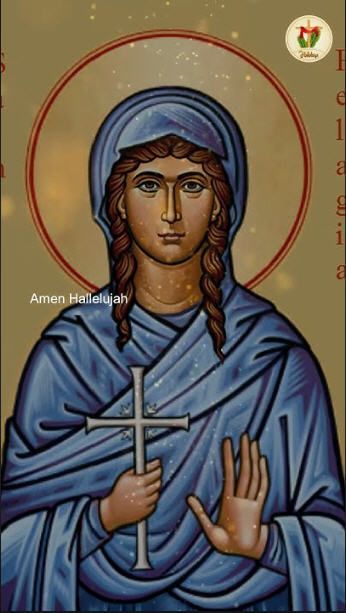
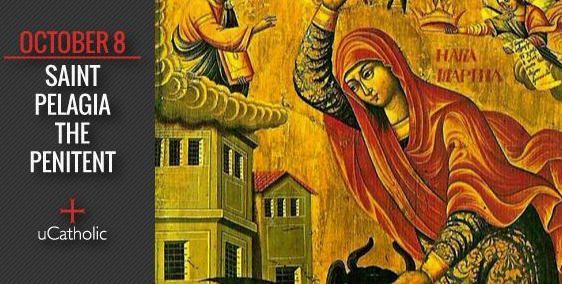
Our Thais - October 8
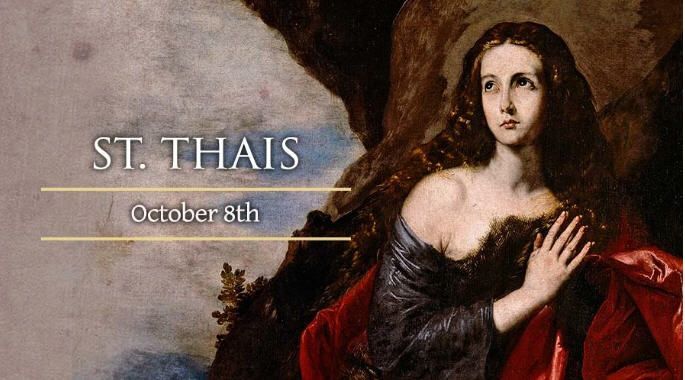
Saint Thais was a penitent woman of Egypt in the fourth century. While little is known of her life, she was a sinful woman converted by a monk, perhaps Paphnutius of Thebes, who then lived three years in a narrow cell in most profound penitence.
It is said that she was a courtesan, and the monk entered her chamber to convert her. She acknowledged belief in God, and the monk exhorted her to repentance. She burned all her worldly goods, and lived in an enclosed cell as a penance. After three years she was removed, and she died fifteen days later.
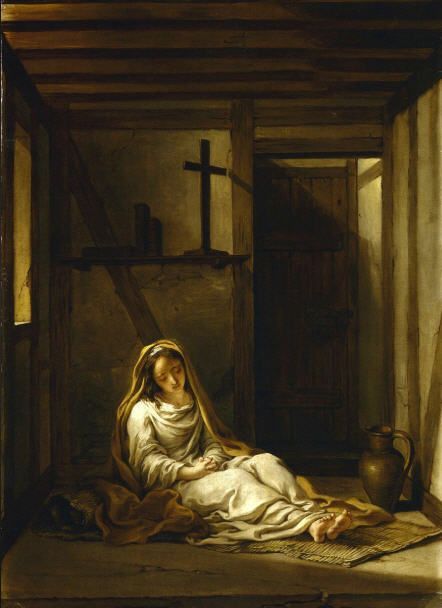
Our Lady of the Rosary - October 7
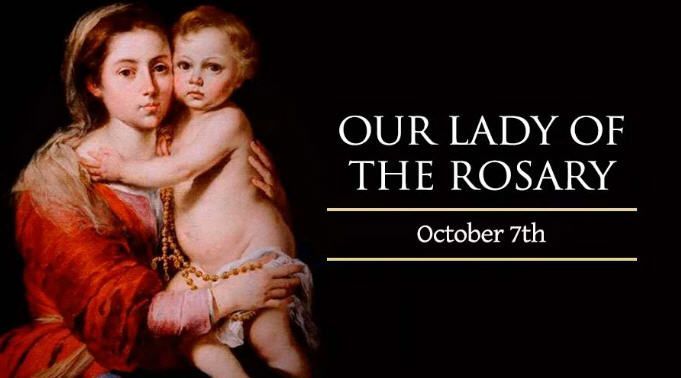
On October 7, the Roman Catholic Church celebrates the yearly feast of Our Lady of the Rosary. Known for several centuries by the alternate title of “Our Lady of Victory,” the feast day takes place in honor of a 16th century naval victory which secured Europe against Turkish invasion. Pope St. Pius V attributed the victory to the intercession of the Blessed Virgin Mary, who was invoked on the day of the battle through a campaign to pray the Rosary throughout Europe.
The feast always occurs one week after the similar Byzantine celebration of the Protection of the Mother of God, which most Eastern Orthodox Christians and Eastern Catholics celebrate on October 1 in memory of a 10th-century military victory which protected Constantinople against invasion after a reported Marian apparition.
Pope Leo XIII was particularly devoted to Our Lady of the Rosary, producing 11 encyclicals on the subject of this feast and its importance in the course of his long pontificate.
In the first of them, 1883's “Supremi Apostolatus Officio,” he echoed the words of the oldest known Marian prayer (known in the Latin tradition as the “Sub Tuum Praesidium”), when he wrote, “It has always been the habit of Catholics in danger and in troublous times to fly for refuge to Mary.”
“This devotion, so great and so confident, to the august Queen of Heaven,” Pope Leo continued, “has never shone forth with such brilliancy as when the militant Church of God has seemed to be endangered by the violence of heresy … or by an intolerable moral corruption, or by the attacks of powerful enemies.” Foremost among such “attacks” was the battle of Lepanto, a perilous and decisive moment in European and world history.
Troops of the Turkish Ottoman Empire had invaded and occupied the Byzantine empire by 1453, bringing a large portion of the increasingly divided Christian world under a version of Islamic law. For the next hundred years, the Turks expanded their empire westward on land, and asserted their naval power in the Mediterranean. In 1565 they attacked Malta, envisioning an eventual invasion of Rome. Though repelled at Malta, the Turks captured Cyprus in the fall of 1570.
The next year, three Catholic powers on the continent – Genoa, Spain, and the Papal States - formed an alliance called the Holy League, to defend their Christian civilization against Turkish invasion. Its fleets sailed to confront the Turks near the west coast of Greece on October 7, 1571.
Crew members on more than 200 ships prayed the Rosary in preparation for the battle - as did Christians throughout Europe, encouraged by the Pope to gather in their churches to invoke the Virgin Mary against the daunting Turkish forces.
Some accounts say that Pope Pius V was granted a miraculous vision of the Holy League's stunning victory. Without a doubt, the Pope understood the significance of the day's events, when he was eventually informed that all but 13 of the nearly 300 Turkish ships had been captured or sunk. He was moved to institute the feast now celebrated universally as Our Lady of the Rosary.
“Turkish victory at Lepanto would have been a catastrophe of the first magnitude for Christendom,” wrote military historian John F. Guilmartin, Jr., “and Europe would have followed a historical trajectory strikingly different from that which obtained.”
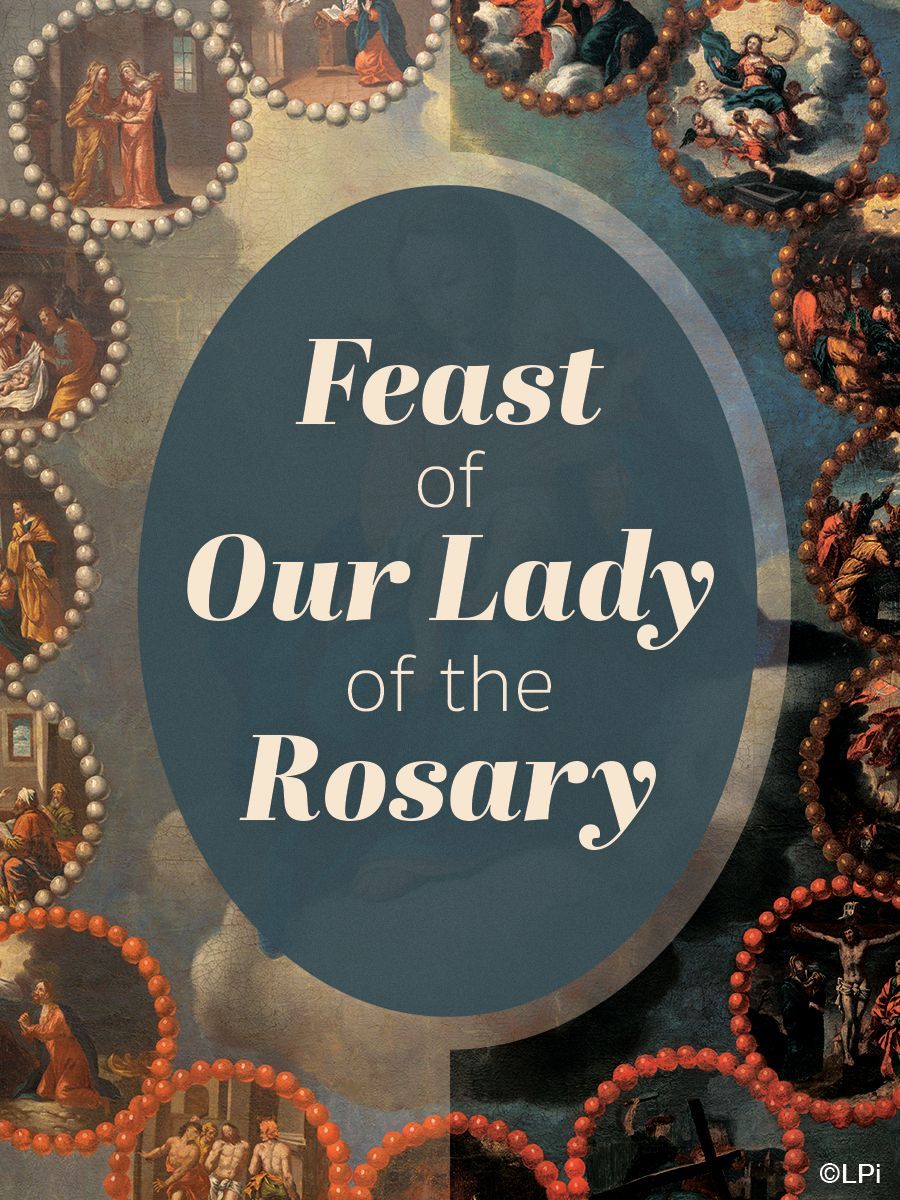
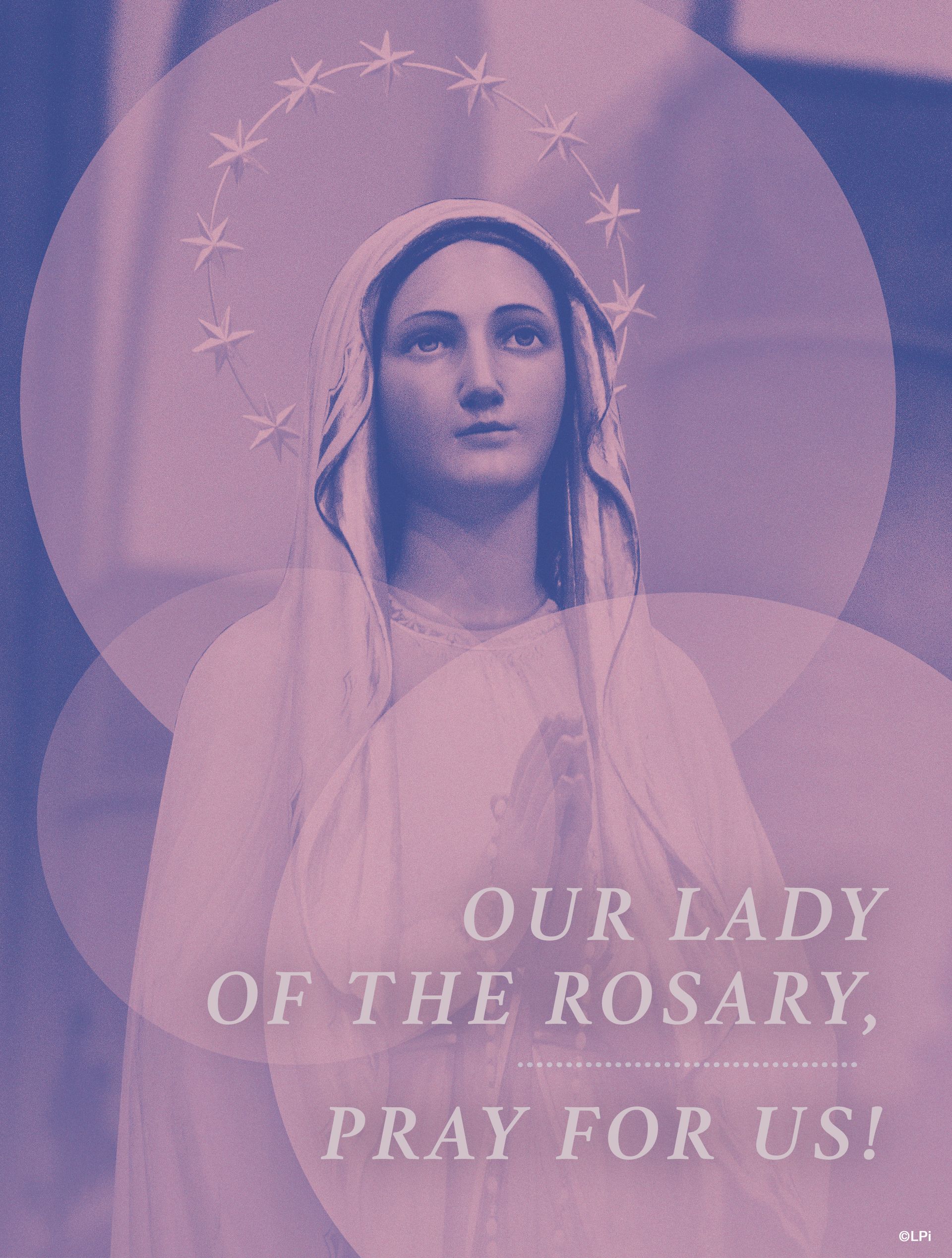
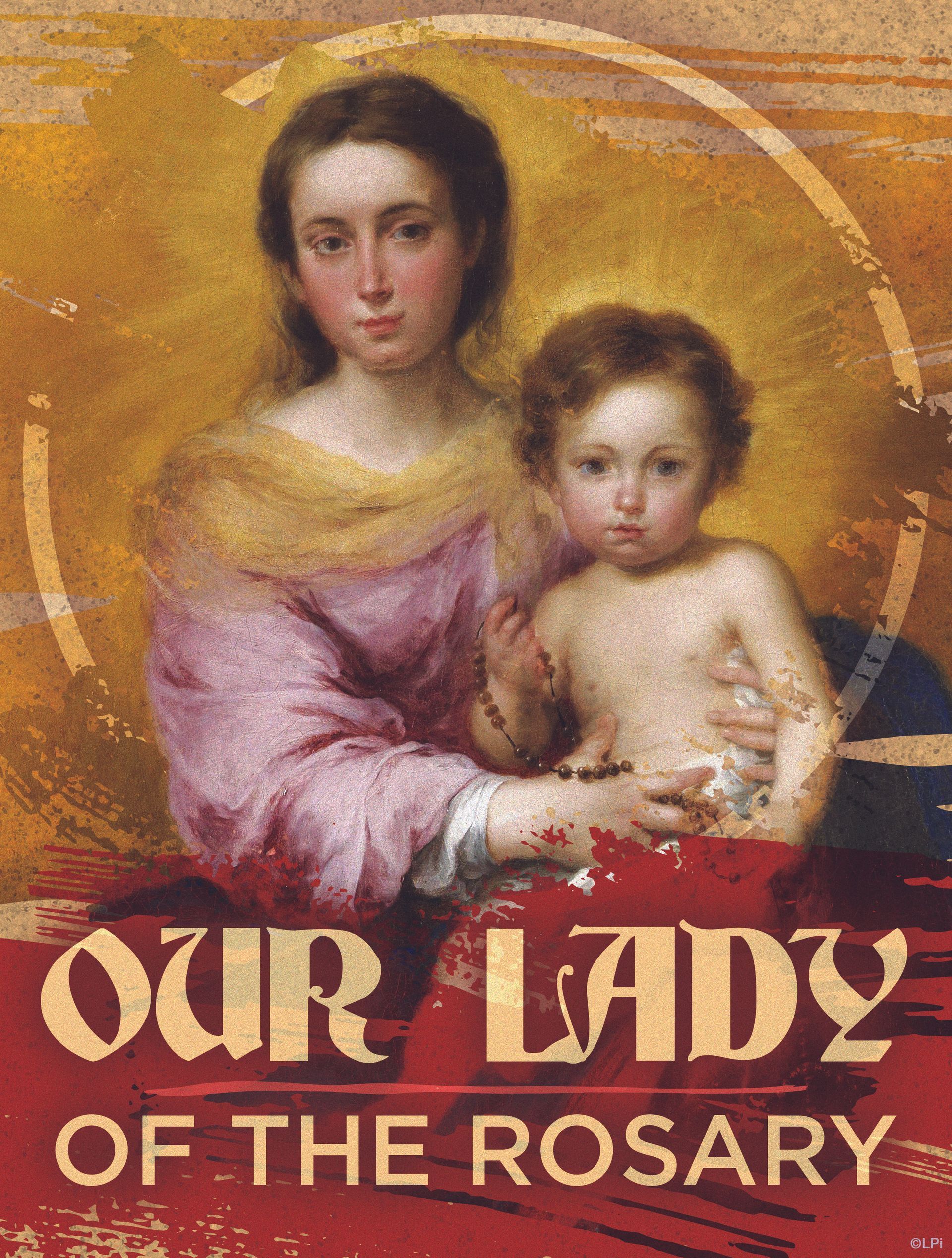
Saint Bruno - October 6
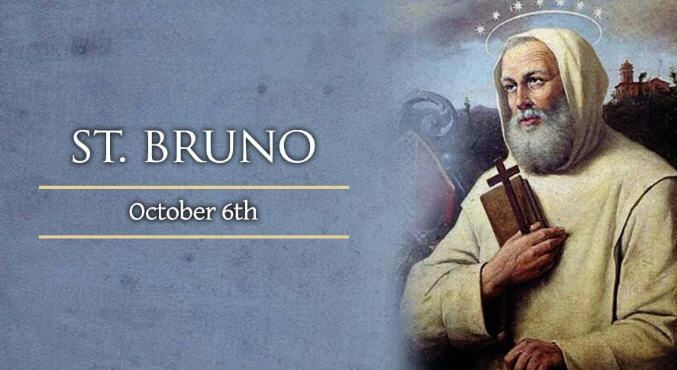
On Oct. 6, the Catholic Church commemorates Saint Bruno of Cologne, founder of the Carthusian order of monks who remain notable for their strictly traditional and austere rule of contemplative life.
Born in 1030, Bruno is said to have belonged to a prominent family in the city of Cologne. Little is known of his early years, except that he studied theology in the present-day French city of Reims before returning to his native land, where he was most likely ordained a priest in approximately 1055.
Returning to Reims the following year, he soon became head of the school he had attended there, after its director Heriman left to enter consecrated religious life in 1057. Bruno led and taught at the school for nearly two decades, acquiring an excellent reputation as a philosopher and theologian, until he was named chancellor of the local diocese in 1075.
Bruno's time as chancellor coincided with an uproar in Reims over the behavior of its new bishop Manasses de Gournai. Suspended by the decision of a local council, the bishop appealed to Rome while attacking and robbing the houses of his opponents. Bruno left the diocese during this period, though he was considered as a possible successor to Manasses after the bishop's final deposition in 1080.
The chancellor, however, was not interested in leading the Church of Reims. Bruno and two of his friends had resolved to renounce their worldly goods and positions and enter religious life. Inspired by a dream to seek guidance from the bishop later canonized as Saint Hugh of Grenoble, Bruno settled in the Chartreuse Mountains in 1084, joined by a small group of scholars looking to become monks.
In 1088, one of Bruno's former students was elected as Pope Urban II. Six years into his life as an alpine monk, Bruno was called to leave his remote monastery to assist the Pope in his struggle against a rival papal claimant as well as the hostile Holy Roman Emperor Henry IV.
Bruno served as a close adviser to the Pope during a critical period of reform. Around this time, he also rejected another chance to become a bishop, this time in the Italian region of Calabria. While he obtained the Pope's permission to return to monastic life, Bruno was required to remain in Italy to help the Pope periodically, rather than returning to his monastery in France.
During the 1090s Bruno befriended Count Roger of Sicily and Calabria, who granted land to his group of monks and enabled the founding of a major monastery in 1095. The monks were known, then as now, for their strict practice of asceticism, poverty, and prayer; and for their unique organizational form, combining the solitary life of hermits with the collective life of more conventional monks.
St. Bruno died on October 6, 1101, after making a notable profession of faith which was preserved for posterity. In this final testimony, he gave particular emphasis to the doctrine of Christ's Eucharistic presence, which had already begun to be questioned in parts of the Western Church.
“I believe,” he attested, “in the sacraments that the Church believes and holds in reverence, and especially that what has been consecrated on the altar is the true Flesh and the true Blood of our Lord Jesus Christ, which we receive for the forgiveness of our sins and in the hope of eternal salvation.”
Veneration of St. Bruno was given formal approval in 1514, and extended throughout the Latin Rite in 1623. More recently, his Carthusian Order was the subject of the 2006 documentary film “Into Great Silence,” chronicling the life of monks in the Grand Chartreuse monastery.
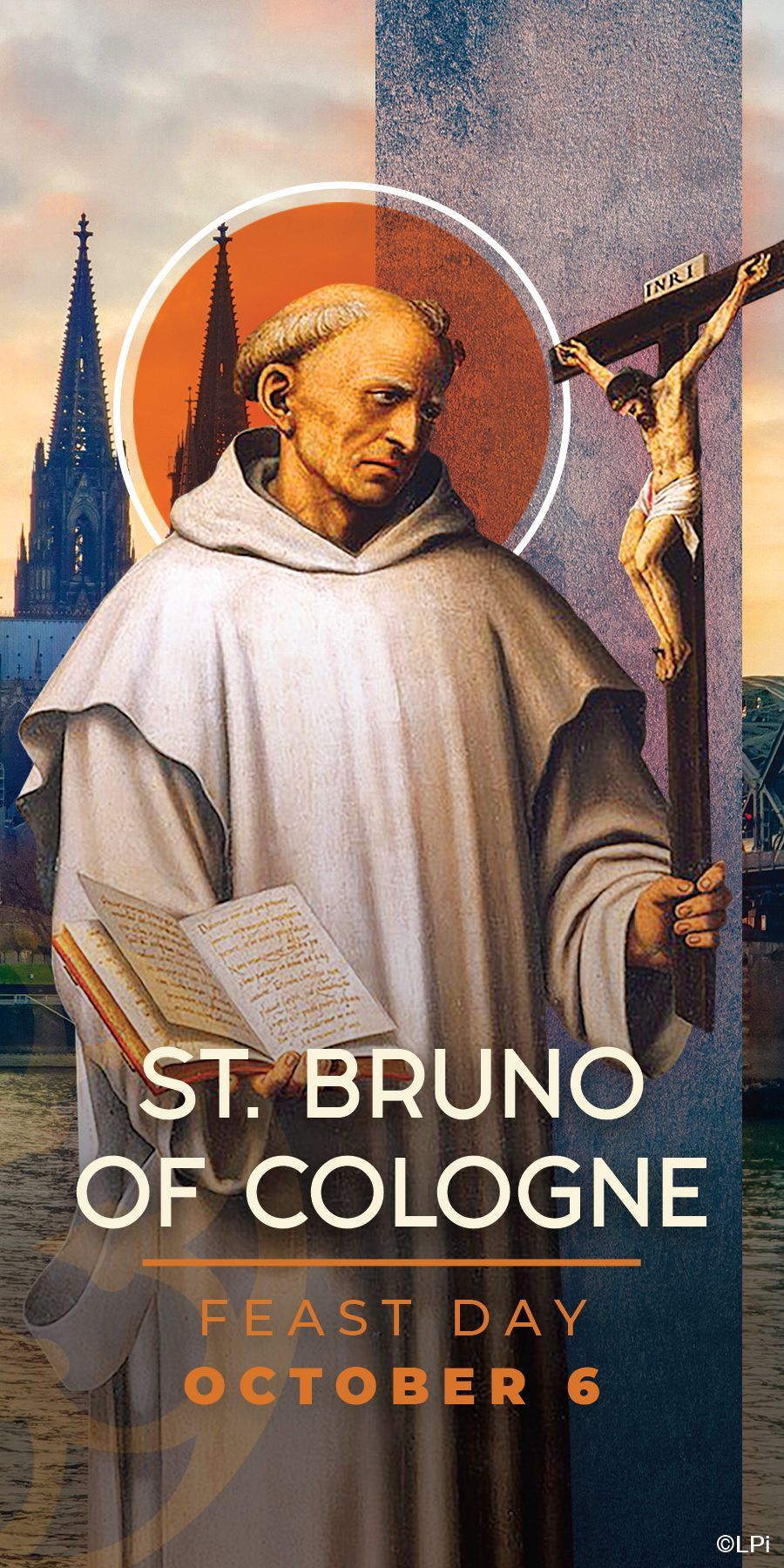
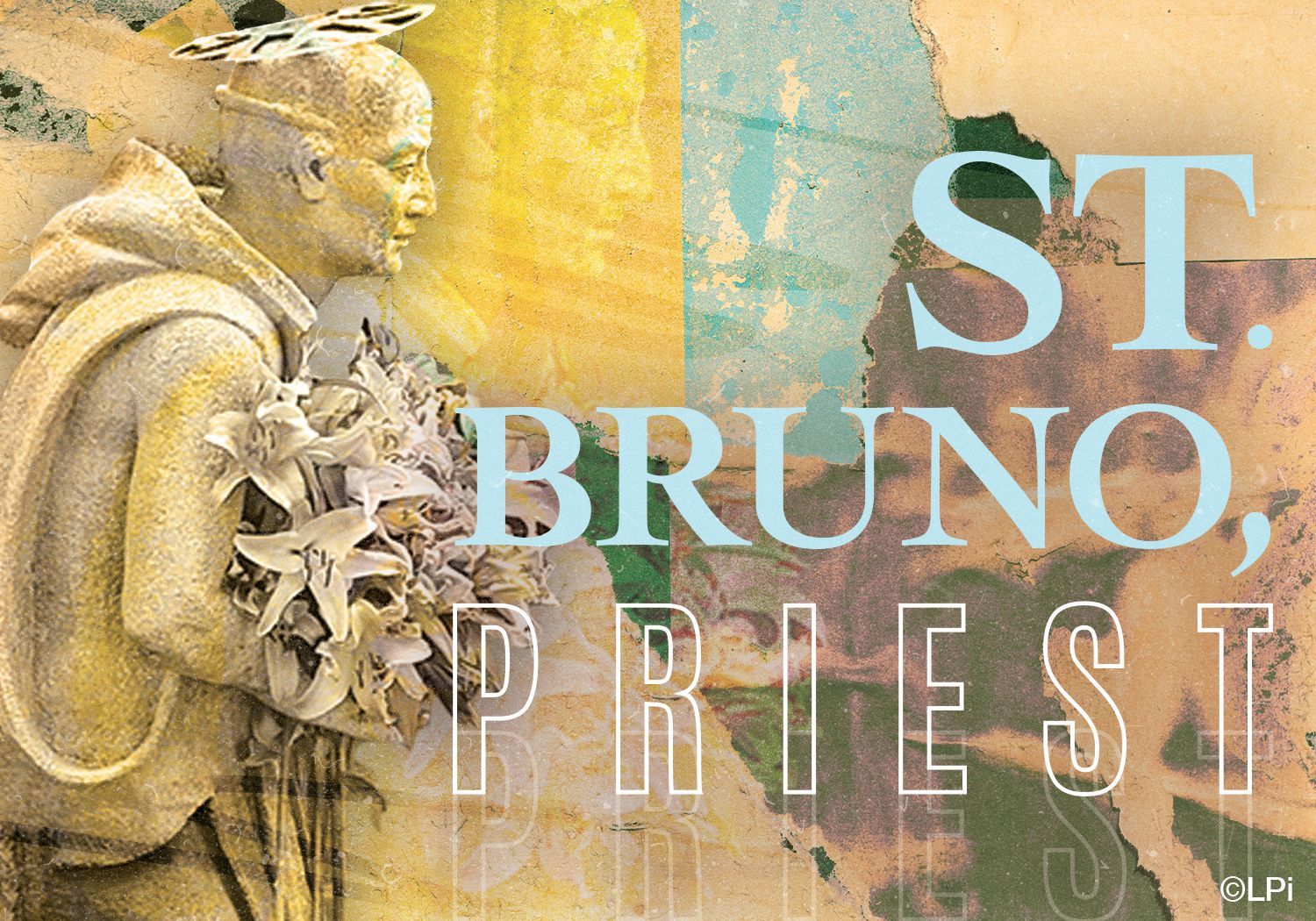
Blessed Marie-Rose Durocher - October 6
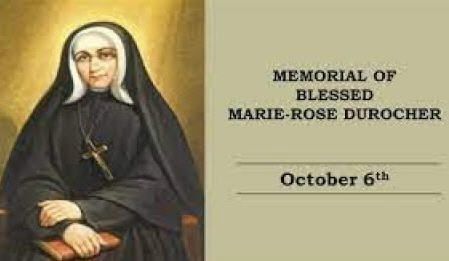
Eulalie Durocher was born on October 6, 1811, at St. Antoine in Quebec, Canada. She was the youngest of ten children. After her education at the hands of the Sisters of Notre Dame, she helped her brother, a parish priest, and in the process established the first Canadian parish Sodality for young women.
In 1841, Louis-Moïse Brassard, parish priest of Longueuil, entered discussions with Charles-Joseph-Eugène de Mazenod, Bishop of Marseille, France, for the establishment of a mission to Quebec by a French religious congregation known as the Sœurs des Saints-Noms de Jésus et de Marie. Durocher learned of the proposed mission through Brassard. Along with her friend Mélodie Dufresne, Durocher applied in advance to join the novitiate of the new congregation upon its arrival in Canada. However, the mission ultimately did not go ahead, and Mazenod instead advised Ignace Bourget, Bishop of Montreal, whom Mazenod had met during Bourget's European visit of that year, to establish a similar congregation in Canada, based upon the two women who had been eager to be part of the French group.
In 1843, she was invited by Bishop Bourget to found a new congregation of women dedicated to Christian education. Accordingly she founded the Sisters of the Holy Names of Jesus and Mary and took the religious name of Marie Rose. Under her saintly and wise leadership, her community flourished in spite of all kinds of obstacles, including great poverty and unavoidable misunderstandings.
On 28 February 1844, in a ceremony conducted by Bishop Bourget, the three postulants began their novitiate, assumed the religious habit and received their religious names. Durocher took the name Sister Marie-Rose, Dufresne became Sister Marie-Agnes and Céré became known as Sister Marie-Madeleine. Bishop Bourget gave the newly founded community diocesan approval[5] and named it the Sisters of the Holy Names of Jesus and Mary, after the French community Durocher had hoped to join.[1] The sisters adopted the rule and constitutions of their French namesakes, as well as a modified version of their habit. On 8 December 1844, Durocher, Dufresne, and Céré professed religious vows in the church at Longueuil. Bourget named Durocher as mother superior, mistress of novices, and depositary of the new congregation.
She remained unswerving in her concern for the poor. Worn out by her many labors, Marie Rose was called to her heavenly reward on October 6, 1849, at the age of thirty-eight. She was declared Blessed by Pope John Paul II on May 23, 1982. Her feast day is October 6.
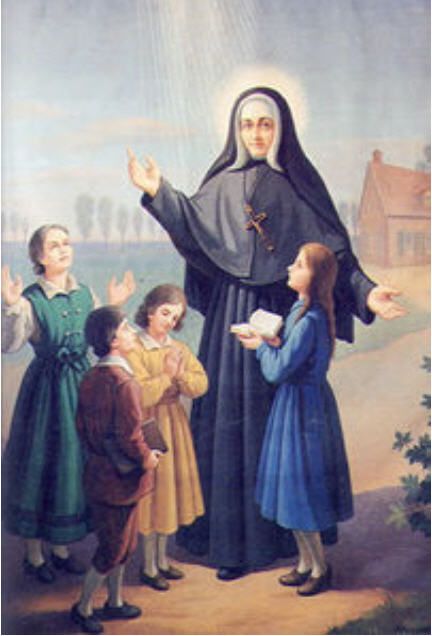
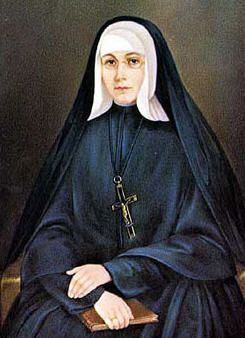
Saint Mary Faustina Kowalska - October 5
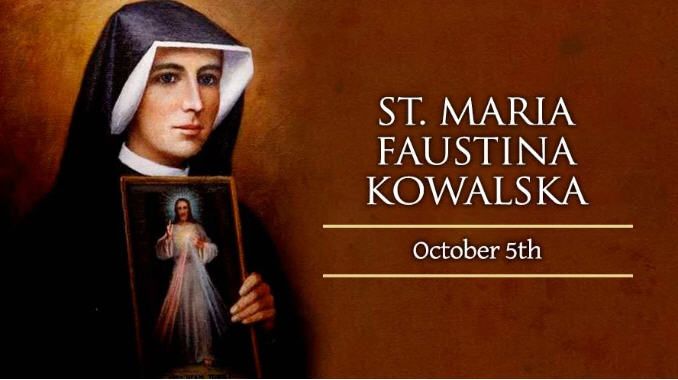
On October 5, the church celebrates the Memorial of St. Mary Faustina Kowalska, virgin.
St. Faustina was born Helena Kowalska on August 25, 1905 to a poor but devout Polish family in 1905. At the age of 20, with very little education, and having been rejected from several other convents because of her poverty and lack of education, Helen entered the Congregation of the Sisters of Our Lady of Mercy. There, she took the name Sr. Faustina and spent time in convents in both Poland and Lithuania.
Throughout her life, Jesus appeared to Sr. Faustina. He asked her to become an apostle and secretary of his mercy, by writing down his messages of Divine Mercy for the world in her diary. Jesus also asked Sr. Faustina to have an image painted of his Divine Mercy, with red and white rays issuing from his heart, and to spread devotion to the Divine Mercy novena.
Even before her death on October 5, 1938, devotion to Divine Mercy began to spread throughout Poland.This little nun and Jesus’ message of Divine Mercy impacted Karol Wojtyla greatly, which became obvious to the world when he was elected Pope.
“It is truly marvelous how her devotion to the merciful Jesus is spreading in our contemporary world and gaining so many human hearts! This is doubtlessly a sign of the times — a sign of our twentieth century. The balance of this century, which is now ending, in addition to the advances which have often surpassed those of preceding eras, presents a deep restlessness and fear of the future. Where, if not in the Divine Mercy, can the world find refuge and the light of hope? Believers understand that perfectly,” Pope St. John Paul II wrote.
On April 30, 2000, Pope John Paul II canonized St. Faustina in what he was widely reported as saying was “the happiest day of my life.”
“Today my joy is truly great in presenting the life and witness of Sr. Faustina Kowalska to the whole Church as a gift of God for our time. By divine Providence, the life of this humble daughter of Poland was completely linked with the history of the 20th century, the century we have just left behind. In fact, it was between the First and Second World Wars that Christ entrusted his message of mercy to her. Those who remember, who were witnesses and participants in the events of those years and the horrible sufferings they caused for millions of people, know well how necessary was the message of mercy,” the Pope said in his homily that day.
It was also on this day, the Sunday after Easter, that Pope John Paul II instituted the Feast of Divine Mercy, which Jesus had asked for in his messages to Sr. Faustina.
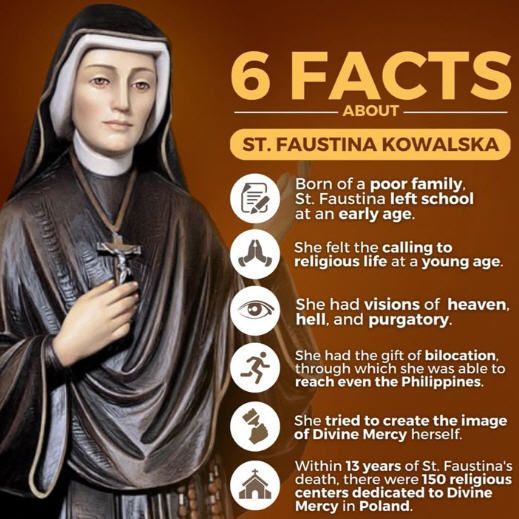

Saint Frances of Assisi - October 4
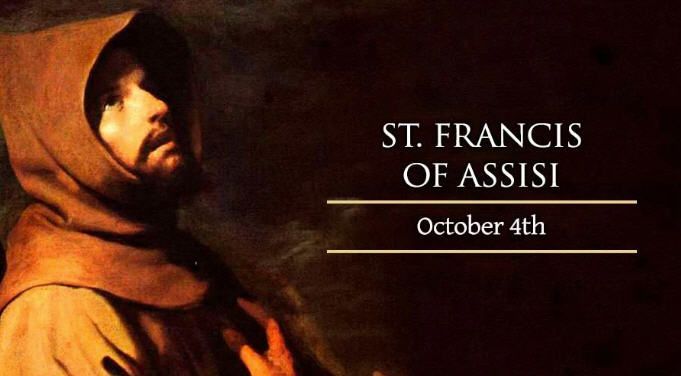
On Oct. 4, Roman Catholics celebrate the feast of St. Francis of Assisi, the Italian deacon who brought renewal to the Church through his decision to follow Jesus' words as literally as possible.
In a January 2010 general audience, Pope Benedict XVI recalled this “giant of holiness” as a “great saint and a joyful man,” who taught the Church that “the secret of true happiness” is “to become saints, close to God.”
The future Saint Francis was born on an uncertain date in the early 1180s, one of the several children born to the wealthy merchant Pietro Bernardone and his wife Pica. He originally received the name Giovanni (or John), but became known as Francesco (or Francis) by his father's choice.
Unlike many medieval saints, St. Francis was neither studious nor pious in his youth. His father's wealth gave him access to a lively social life among the upper classes, where he was known for his flashy clothes and his readiness to burst into song. Later a patron of peacemakers, he aspired to great military feats in his youth and fought in a war with a rival Italian city-state.
A period of imprisonment during that conflict turned his mind toward more serious thoughts, as did a recurring dream that suggested his true “army” was not of this world. He returned to Assisi due to illness in 1205, and there began consider a life of voluntary poverty.
Three major incidents confirmed Francis in this path. In Assisi, he overcame his fear of disease to kiss the hand of a leper. Afterward, he made a pilgrimage to Rome, where he deposited his money at Saint Peter's tomb and exchanged clothes with a beggar. Soon after he returned home, Francis heard Christ tell him in a vision: “Go, Francis, and repair my house, which as you see is falling into ruin.”
Francis began to use his father's wealth to restore churches. This led to a public quarrel in which the cloth-merchant's son removed his clothing and declared that he had no father except God. He regarded himself as the husband of “Lady Poverty,” and resolved to serve Christ as “a herald of the Great King.”
During the year 1208, the “herald” received the inspiration that would give rise to the Franciscan movement. At Mass one morning, he heard the Gospel reading in which Christ instructed the apostles to go forth without money, shoes, or extra clothing. This way of life soon became a papally-approved rule, which would attract huge number of followers within Francis' own lifetime.
Through his imitation of Christ, Francis also shared in the Lord's sufferings. He miraculously received Christ's wounds, the stigmata, in his own flesh during September of 1224. His health collapsed over the next two years, a “living sacrifice” made during two decades of missionary preaching and penance.
St. Francis of Assisi died on Oct. 3, 1226. Pope Gregory IX, his friend and devotee, canonized him in 1228.
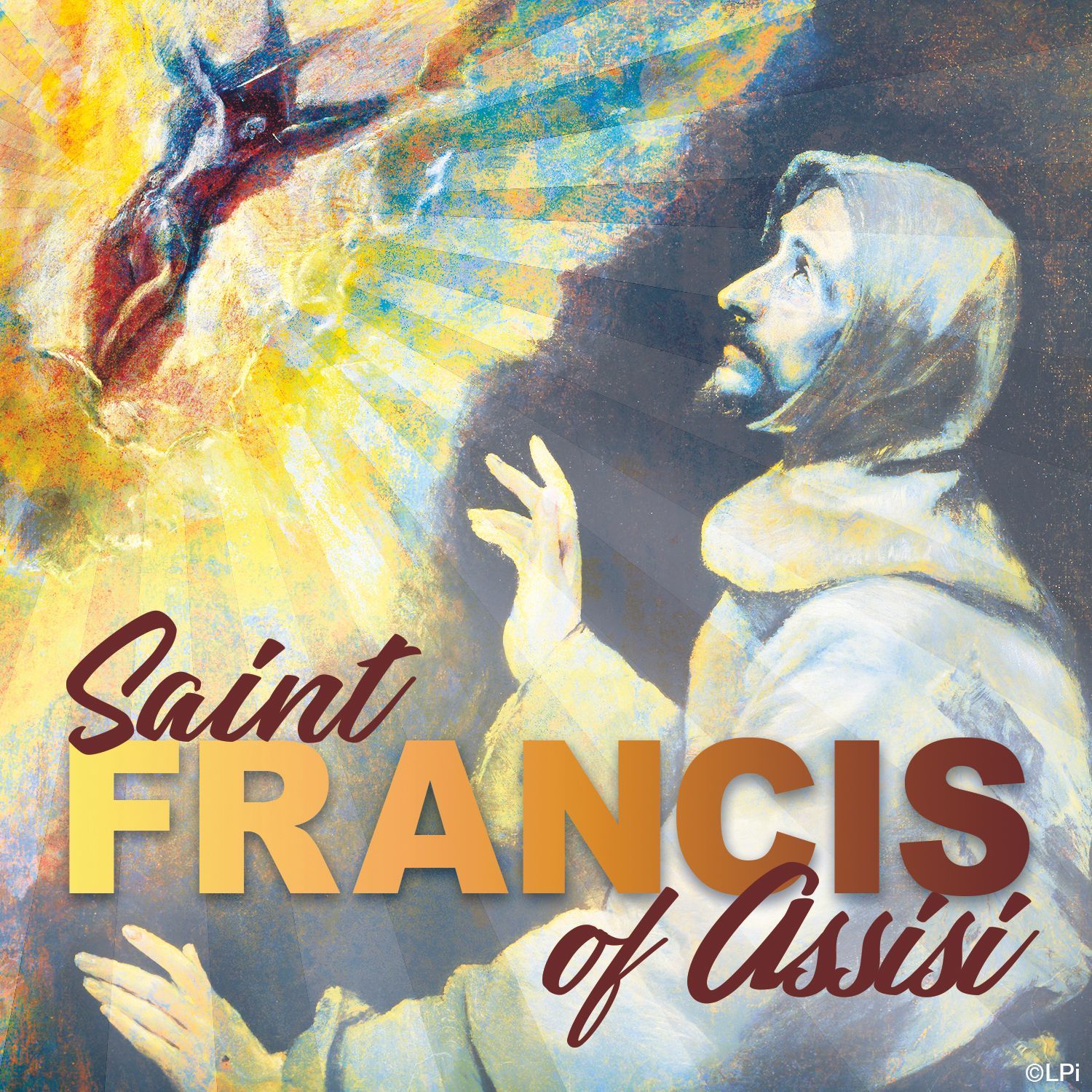
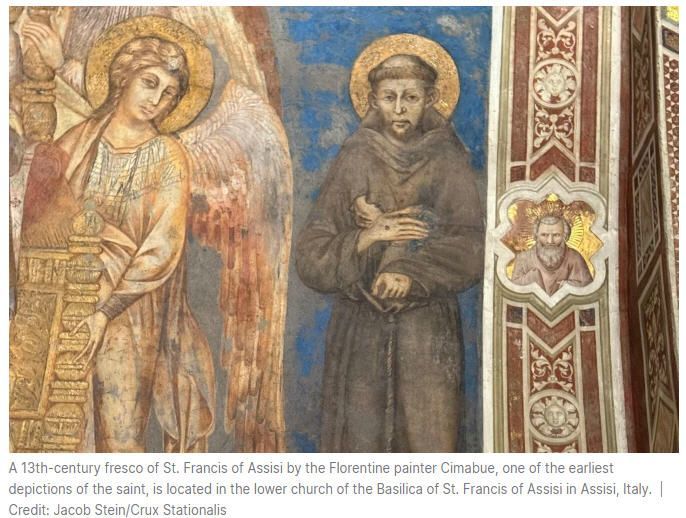
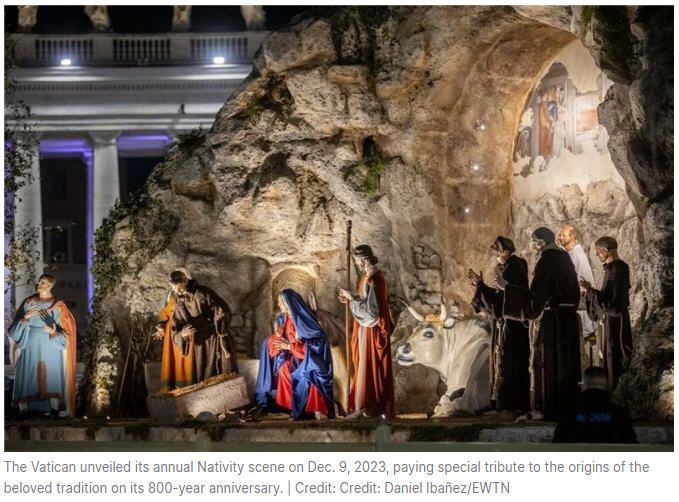
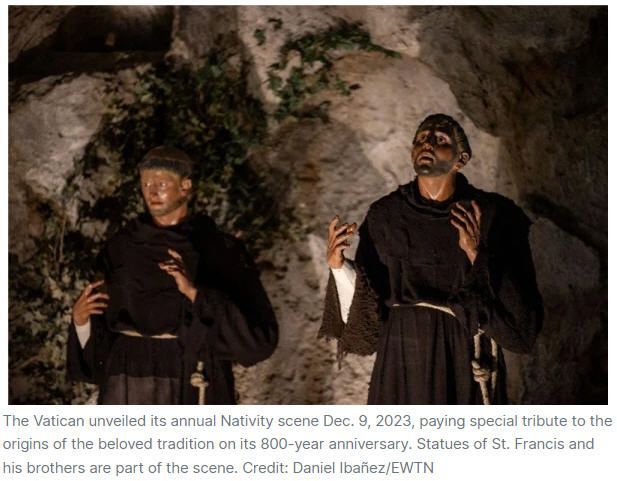
The Catholic Church celebrates the feast of St. Francis of Assisi every year on Oct. 4. Known as the patron saint of animals and ecology, the 13th-century Italian friar is often remembered for his deep humility, his life of prayer, and for founding the Franciscan order.
Here are seven things to know about this beloved saint:
1. Francis was a party-loving rich kid before his conversion.
Before giving his life completely over to the Lord, Francis lived a life of luxury. His father, Pietro di Bernardone, was a wealthy silk merchant in Assisi, and Francis lived a carefree, pleasure-seeking life in his youth. He was known for partying, fine clothes, and his dreams of glory on the battlefield. It wasn’t until he was captured during a war between Assisi and Perugia — and spending nearly a year in prison — that he began to reflect on a different path.
2. Francis voluntarily gave up his wealth.
After hearing God’s call to “rebuild my church,” Francis renounced his family’s wealth in a dramatic and public fashion. In front of the bishop and townspeople, he stripped off all his clothes — literally — and gave everything back to his father. He declared that from that point on, he would have no father but “Our Father who art in heaven.” It was at this moment that he completely rejected worldly goods and embraced a life of poverty.
3. Francis never became a priest.
Many assume that St. Francis was a priest, but he was never ordained beyond the role of deacon. Due to his great reverence for the Eucharist, he felt unworthy to become a priest. Therefore, he remained a friar and lived a life of poverty, charity, and devotion to God.
4. Francis was the first recorded person to receive the stigmata.
In 1224, while on retreat at Mount La Verna, Francis experienced a vision of a seraph bearing the image of Christ crucified. When the image ended, the wounds of Christ appeared on his body — piercings in his hands, feet, and side.
5. Francis wrote one of the first known works of Italian literature.
Francis’ “Canticle of the Sun,” written around 1225, is considered one of the earliest works in the Italian language. At the time, most literary pieces were written in Latin. However, Francis chose to write it in his native language so more people could understand it. “Canticle of the Sun” is a poem in which Francis encourages all of creation to praise the Creator and consists of 23 verses dedicated to different aspects of creation.
6. Francis created the first living Nativity scene.
In 1223, Francis staged the first-ever live Nativity scene in Greccio, Italy. He used real people and animals with the hope of helping people connect more with the birth of Christ. To this day, the people of Greccio stage a live, historical reenactment of St. Francis and the first Nativity scene every year at Christmas.
7. Francis’ order continues his legacy over 800 years later.
The Rule of St. Francis was approved in 1223, which marked the beginning of the Franciscan order. The order has three main branches: the First Order (Friars Minor), the Second Order (Poor Clares), and the Third Order (Secular Franciscan Order for laity). Franciscans take vows of poverty, chastity, and obedience. Today, Franciscans are active in over 100 countries and have roughly 650,000 members across its various branches.
Saint Mother Theodore Guerin - October 3
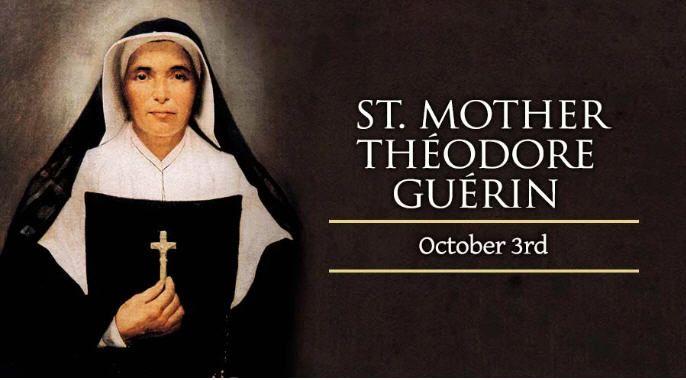
St. Théodore Guérin, SP, was born Anne-Therese Guerin at Etables, Brittany in France on October 2, 1798.
As she was growing up, the French government was virulently anti-clerical, closing down seminaries and churches and arresting priests and religious. Her cousin was a seminarian who lived in hiding in her parents’ devout Catholic home. He instructed her thoroughly in the faith and she displayed an advanced knowledge of theology, even at a young age.
Anne-Thérèse entered the Sisters of Providence at 26 and devoted herself to religious education. Her intellectual capacities were formidable, and she was even recognized by the French Academy for her acheivements.
In 1840 Mother Théodore Guérin was sent to Indiana, in the USA to found a convent of the Sisters of Providence in the diocese of Vincennes. There she pioneered Catholic education, opened the first girls’ boarding school in Indiana, and fought against the anti-Catholicism prevalent in the day.
She was well known for her heroic witness to faith, her hope, and her love of God. The fledgling years of the convent of Our Lady of the Woods were difficult, with the ever present danger of it being burned down by anti- Catholics. The persecution also came from within the Church, from her own bishop, who, on not being allowed to tamper with the order’s rule, excommunicated her. The excommunication was eventually lifted by his successor.
James Cardinal Gibbons said of her in 1904, that she was “a woman of uncommon valour, one of those religious athletes whose life and teachings effect a spiritual fecundity that secures vast conquests to Christ and His holy Church.”
She died on May 14, 1856 after a period of sickness, and her feast day is celebrated on October 3.
She was beatified by Pope John Paul II on October 25, 1998, and canonized a saint of the Roman Catholic church on October 15, 2006, by Pope Benedict XVI.
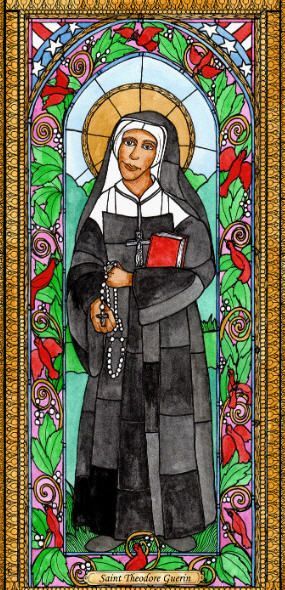
Guardian Angels - October 2

"For he hath given his angels charge over thee, to keep thee in all thy ways.” - Psalm 90:11
The truth that each and every human soul has a Guardian Angel who protects us from both spiritual and physical evil has been shown throughout the Old Testament, and is made very clear in the New.
It is written that the Lord Jesus was strengthened by an angel in the Garden of Gethsemane, and that an angel delivered St. Peter from prison in the Acts of the Apostles.
But Jesus makes the existence and function of guardian angels explicit when he says, "See that you despise not one of these little ones: for I say to you, that their angels in heaven always see the face of my Father who is in heaven." (Matthew 18:10).
In saying this Jesus points out that all people, even little children, have a guardian angel, and that the angels are always in Heaven, always looking at the face of God throughout their mission on earth, which is to guide and protect us throughout our pilgrimage to the house of our Father. As St. Paul says, "Are they not all ministering spirits, sent to minister for them, who shall receive the inheritance of salvation?" (Hebrews 1:14).
However, they guide us to Heaven only if we desire it. St. Thomas Aquinas wrote that angels cannot act directly upon our will or intellect, although they can do so on our senses and imaginations – thus encouraging us to make the right decisions. In Heaven our guardian angels, though no longer needing to guide us to salvation, will continually enlighten us.
Prayer to the guardian angels is encouraged, and the habit of remembering their presence and support leads to frienship with them. The prayer to the guardian angels has been present in the Church since at least the beginning of the 12th century:
Angel of God,
my Guardian dear,
to whom His love
commits me here,
ever this day
be at my side,
to light and guard,
to rule and guide.
Amen.
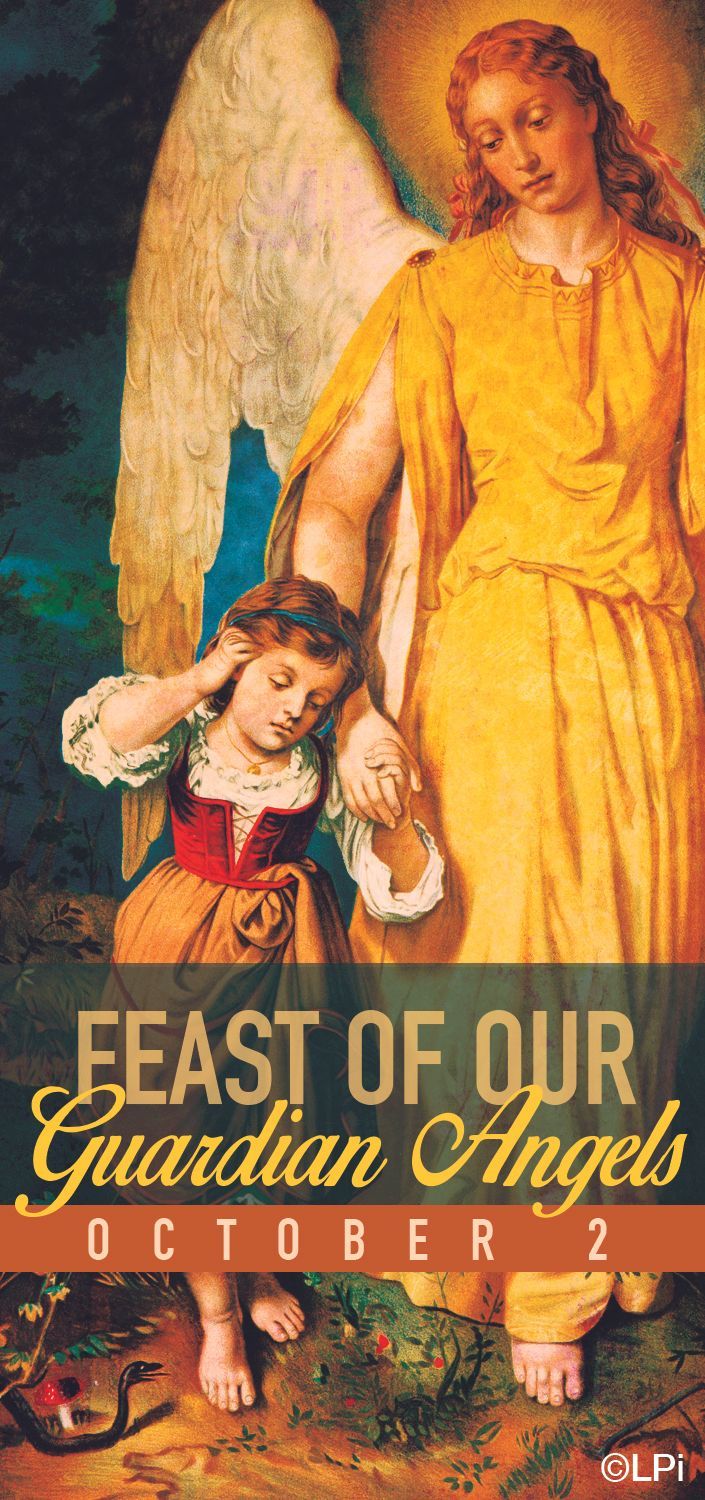

“Let us affectionately love His angels as counselors and defenders appointed by the Father and placed over us. They are faithful; they are prudent; they are powerful; Let us only follow them, let us remain close to them, and in the protection of the God of heaven let us abide.” St. Bernard of Clairvaux
Saint Therese - October 1
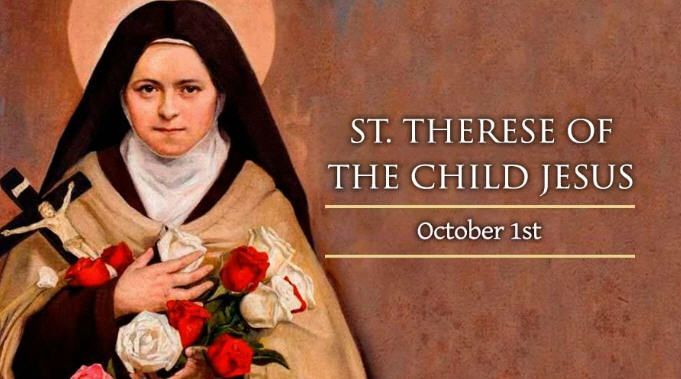
On October 1, Catholics around the world honor the life of St. Thérèse of the Child Jesus, or St. Thérèse of Lisieux on her feast day. St. Thérèse was born January 2, 1873 in Alençon, France to pious parents, both of whom are scheduled to be canonized in October 2016. Her mother died when she was four, leaving her father and elder sisters to raise her.
On Christmas Day 1886 St. Thérèse had a profound experience of intimate union with God, which she described as a “complete conversion.” Almost a year later, in a papal audience during a pilgrimage to Rome, in 1887, she asked for and obtained permission from Pope Leo XIII to enter the Carmelite Monastery at the young age of 15.
On entering, she devoted herself to living a life of holiness, doing all things with love and childlike trust in God. She struggled with life in the convent, but decided to make an effort to be charitable to all, especially those she didn’t like. She performed little acts of charity always, and little sacrifices not caring how unimportant they seemed. These acts helped her come to a deeper understanding of her vocation.
She wrote in her autobiography that she had always dreamed of being a missionary, an Apostle, a martyr – yet she was a nun in a quiet cloister in France. How could she fulfill these longings?
“Charity gave me the key to my vocation. I understood that the Church had a Heart and that this Heart was burning with love. I knew that one love drove the members of the Church to action, that if this love were extinguished, the apostles would have proclaimed the Gospel no longer, the martyrs would have shed their blood no more. I understood that Love comprised all vocations, that Love was everything, that it embraced all times and places...in a word, that it was eternal! Then in the excess of my delirious joy, I cried out: O Jesus, my Love...my vocation, at last I have found it...My vocation is Love!”
Thérèse offered herself as a sacrificial victim to the merciful Love of God on June 9, 1895, the feast of the Most Holy Trinity and the following year, on the night between Holy Thursday and Good Friday, she noticed the first symptoms of Tuberculosis, the illness which would lead to her death.
Thérèse recognized in her illness the mysterious visitation of the divine Spouse and welcomed the suffering as an answer to her offering the previous year. She also began to undergo a terrible trial of faith which lasted until her death a year and a half later. “Her last words, ‘My God, I love you,’ are the seal of her life,” said Pope John Paul II.
Since her death, millions have been inspired by her ‘little way’ of loving God and neighbor. Many miracles have been attributed to her intercession. She had predicted during her earthly life that “My Heaven will be spent doing good on Earth.”
Saint Thérèse was proclaimed a Doctor of the Church by Pope John Paul II in 1997 - 100 years after her death at the age of 24. She is only the third woman to be so proclaimed, after Saint Catherine of Siena and Saint Teresa of Avila.
St. Thérèse wrote once, 'You know well enough that Our Lord does not look so much at the greatness of our actions, nor even at their difficulty, but at the love with which we do them."

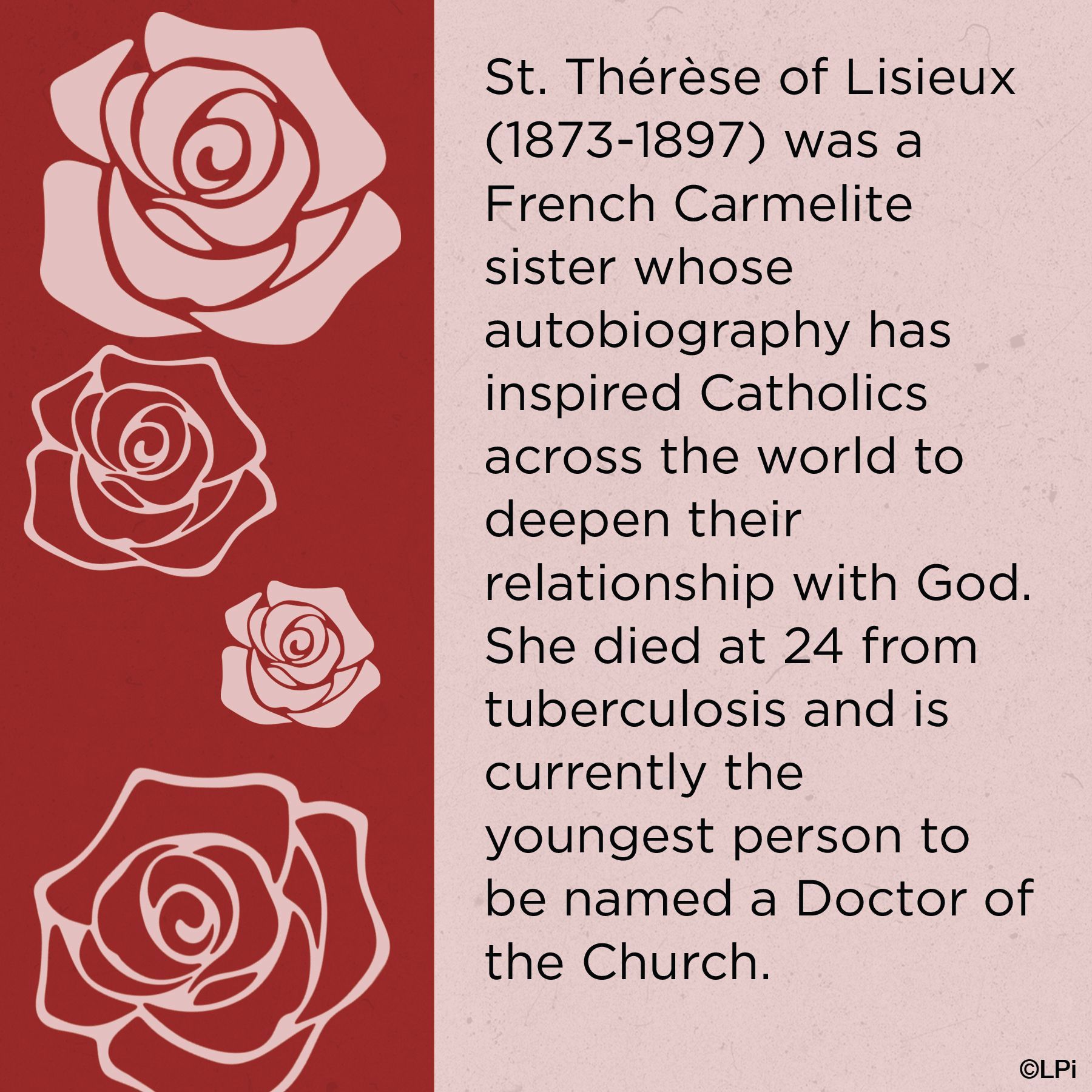
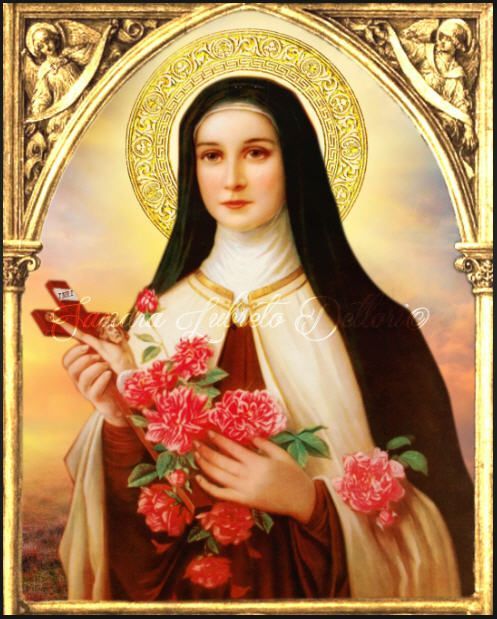
Mother and Son St. Monica and St. Augustine
August 27th and 28th
Holiness Runs in the Family
Raising faithful children is no easy task. For St. Monica, it seemed nearly impossible. Her husband wasn’t Christian and often mocked her faith. Their son, Augustine, fell quickly into wild ways. He and his friends drank, stole, and caroused throughout town. Monica never stopped praying for Augustine, no matter how far he strayed. Augustine became swept up in heresy, a false form of Christianity. He lived with a mistress and had a child out of wedlock. All the while, Monica kept praying. Conversion came slowly to Augustine, but at age 32, he was finally baptized. Augustine would go on to become a priest, then bishop, then world-renowned theologian whose works have stood the test of time. May St. Monica and St. Augustine inspire us to never stop praying for our loved ones.
Saint Augustine | August 28
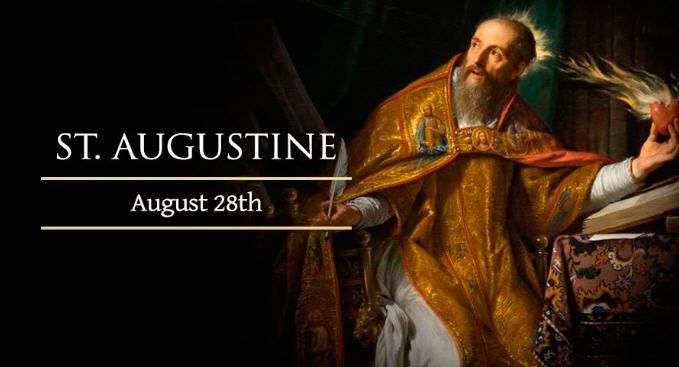
Today, August 28, the Church honors St. Augustine. St. Augustine was born at the town of Thagaste (now Souk-Ahras in modern day Algeria) on November 13, 354 and grew to become one the most significant and influential thinkers in the history of the Catholic Church. His teachings were the foundation of Christian doctrine for a millennium.
The story of his life, up until his conversion, is written in the autobiographical Confessions, the most intimate and well-known glimpse into an individual's soul ever written, as well as a fascinating philosophical, theological, mystical, poetic and literary work.
Augustine, though being brought up in early childhood as a Christian, lived a dissolute life of revelry and sin, and soon drifted away from the Church - thinking that he wasn't necessarily leaving Christ, of whose name he acknowledges "I kept it in the recesses of my heart; and all that presented itself to me without that Divine name, though it might be elegant, well written, and even replete with truth, did not altogether carry me away" (Confessions, I, iv).
He went to study in Carthage and became well-known in the city for his brilliant mind and rhetorical skills and sought a career as an orator or lawyer. But he also discovered and fell in love with philosophy at the age of 19, a love he pursued with great vehemence.
He was attracted to Manichaeanism at this time, after its devotees had promised him that they had scientific answers to the mystery of nature, could disprove the Scriptures, and could explain the problem of evil. Augustine became a follower for nine years, learning all there was to learn in it before rejecting it as incoherent and fraudulent.
He went to Rome and then Milan in 386 where he met Saint Ambrose, the bishop and Doctor of the Church, whose sermons inspired him to look for the truth he had always sought in the faith he had rejected. He received baptism and soon after, his mother, Saint Monica, died with the knowledge that all she had hoped for in this world had been fulfilled.
He returned to Africa, to his hometown of Tagaste, "having now cast off from himself the cares of the world, he lived for God with those who accompanied him, in fasting, prayers, and good works, meditating on the law of the Lord by day and by night."
On a visit to Hippo he was proclaimed priest and then bishop against his will. He later accepted it as the will of God and spent the rest of his life as the pastor of the North African town, where he spent much time refuting the writings of heretics.
Augustine also wrote, The City of God, against the pagans who charged that the fall of the Roman empire, which was taking place at the hands of the Vandals, was due to the spread of Christianity.
On August 28, 430, as Hippo was under siege by the Vandals, Augustine died, at the age of 76. His legacy continues to deeply shape the face of the Church to this day.
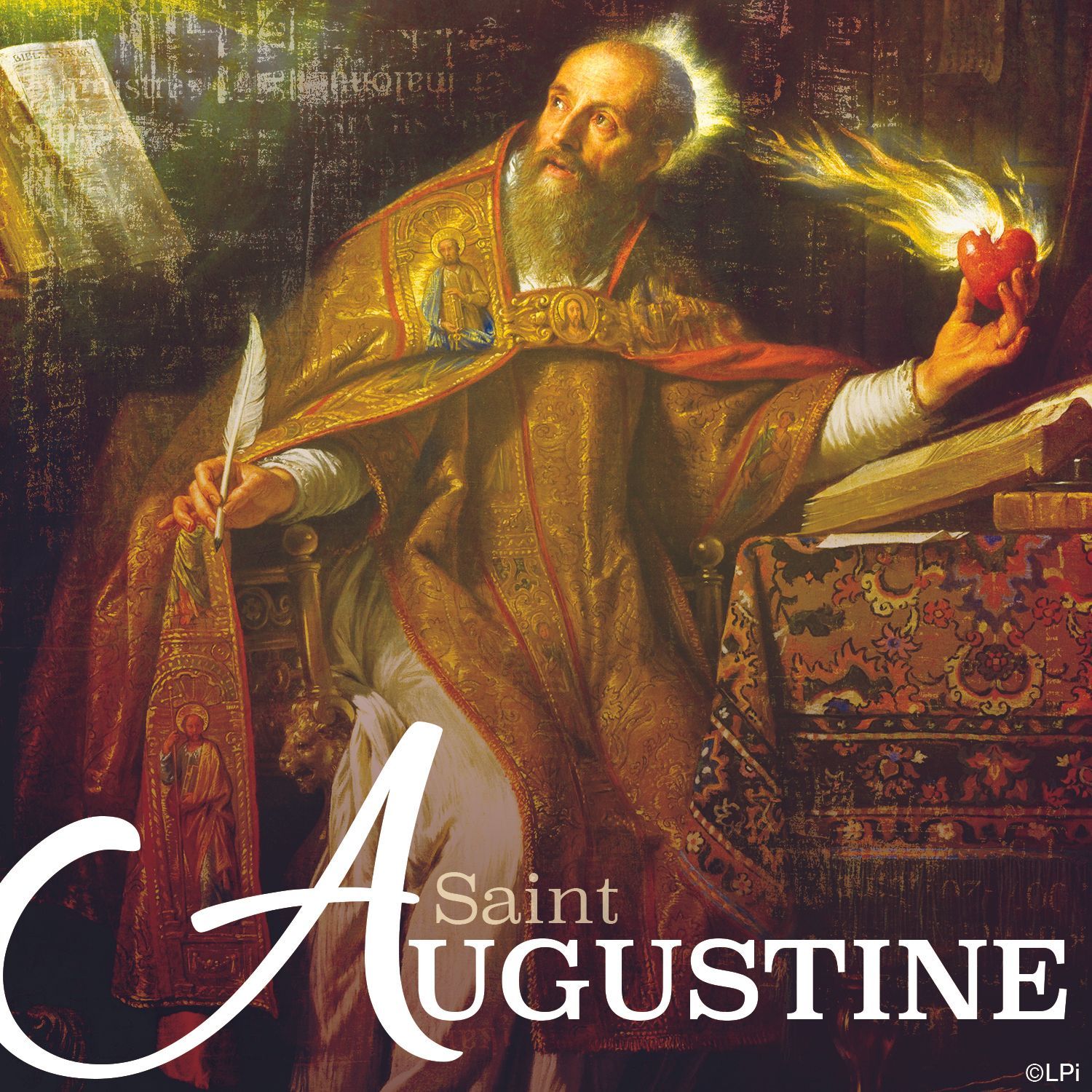

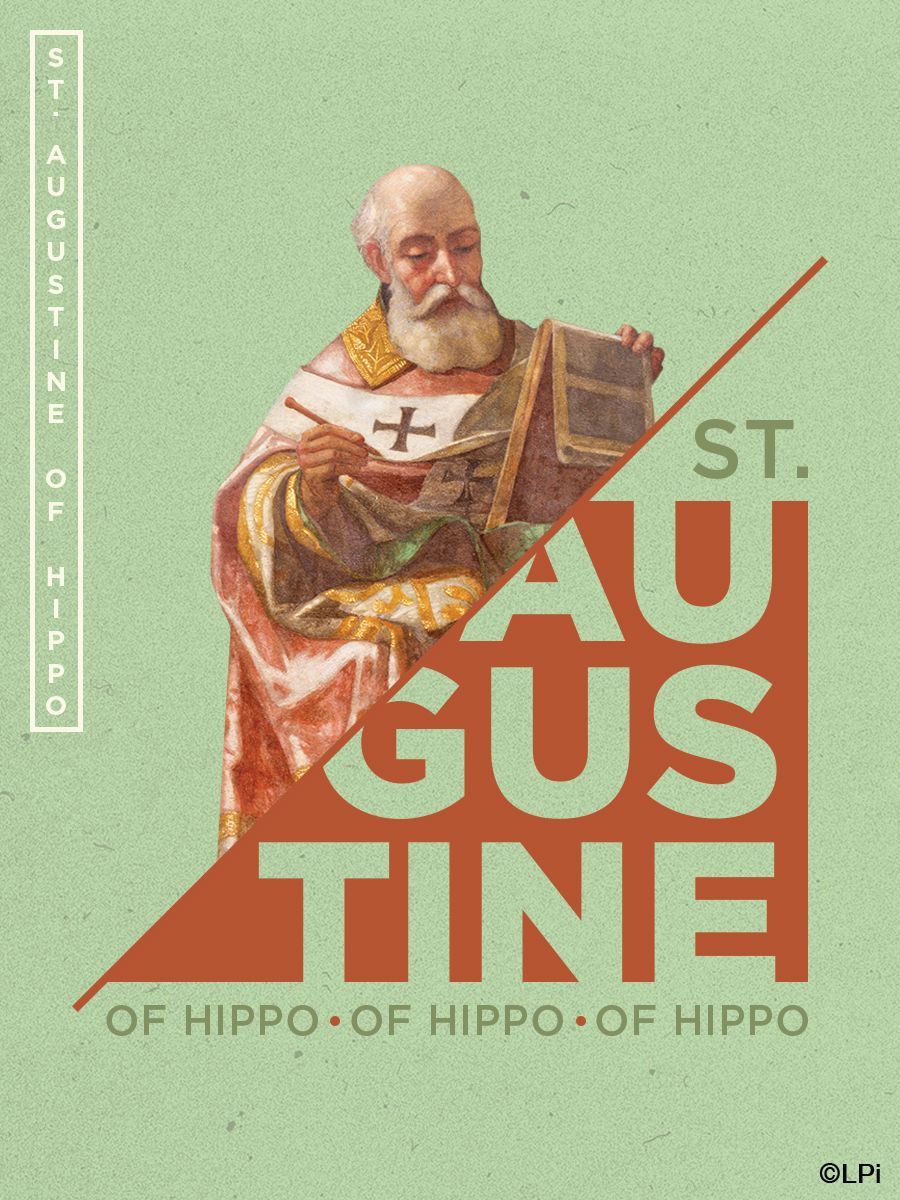
Saint Monica | August 27
On Aug. 27, one day before the feast of her son St. Augustine, the Catholic Church honors St. Monica, whose holy example and fervent intercession led to one of the most dramatic conversions in Church history.
Monica was born into a Catholic family in 332 in the north African city of Tagaste, located in present-day Algeria. She was raised by a maidservant who taught her the virtues of obedience and temperance. While still relatively young, she married Patricius, a Roman civil servant with a bad temper and a disdain for his wife’s religion.
Patricius’ wife dealt patiently with his distressing behavior, which included infidelity to their marriage vows. But she experienced a greater grief when he would not allow their three children — Augustine, Nagivius, and Perpetua — to be baptized. When Augustine, the oldest, became sick and was in danger of death, Patricius gave consent for his baptism but withdrew it when he recovered.
Monica’s long-suffering patience and prayers eventually helped Patricius to see the error of his ways, and he was baptized into the Church one year before his death in 371. Her oldest son, however, soon embraced a way of life that brought her further grief. He fathered a child out of wedlock in 372 and a year later began to practice Manichaeism, a religion founded in the third century by the Parthian prophet Mani.
In her distress and grief, Monica initially shunned her oldest son. However, she experienced a mysterious dream that strengthened her hope for Augustine’s soul in which a messenger assured her: “Your son is with you.” After this experience, which took place around 377, she allowed him back into her home and continued to beg God for his conversion.
This would not take place for another nine years, however. In the meantime, Monica sought the advice of local clergy, wondering what they might do to persuade her son away from the Manichean heresy. One bishop, who had once belonged to that sect himself, assured Monica that it was “impossible that the son of such tears should perish.”
These tears and prayers intensified when Augustine, at age 29, abandoned Monica without warning as she passed the night praying in a chapel. Without saying goodbye to his mother, Augustine boarded a ship bound for Rome. Yet even this painful event would serve God’s greater purpose, as Augustine left to become a teacher in the place where he was destined to become a Catholic.
Under the influence of the saintly Bishop Ambrose of Milan, Augustine renounced the teaching of the Manichees around 384. Monica followed her son to Milan and drew encouragement from his growing interest in Ambrose’s preaching. After three years of struggle against his desires and perplexities, Augustine succumbed to God’s grace and was baptized in 387.
Shortly before her death, Monica shared a profound mystical experience of God with Augustine, who chronicled the event in his “Confessions.” Finally, she told him: “Son, for myself I have no longer any pleasure in anything in this life. Now that my hopes in this world are satisfied, I do not know what more I want here or why I am here.”
“The only thing I ask of you both,” she told Augustine and his brother Nagivius, “is that you make remembrance of me at the altar of the Lord wherever you are.”
St. Monica died at the age of 56 in the year 387. In modern times, she has become the inspiration for the St. Monica Sodality, which encourages prayer an
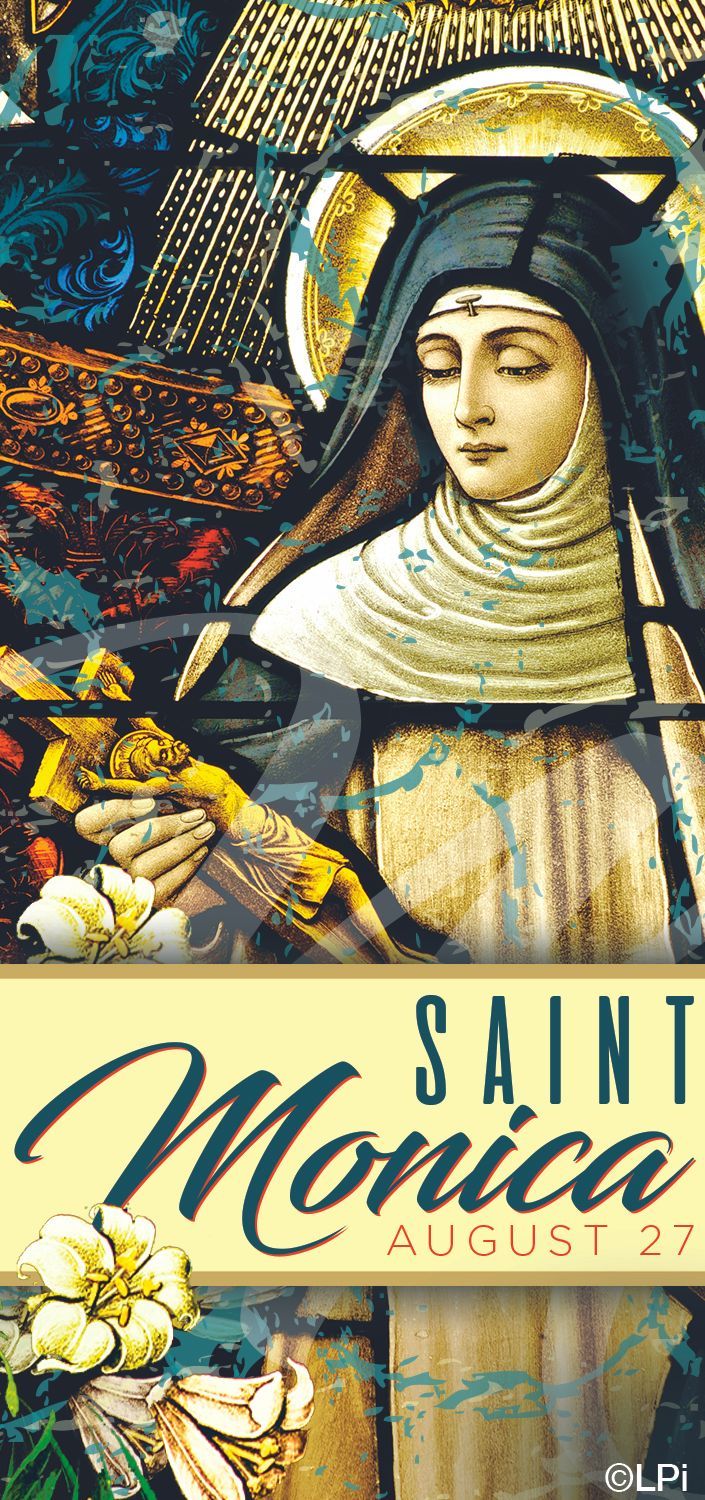
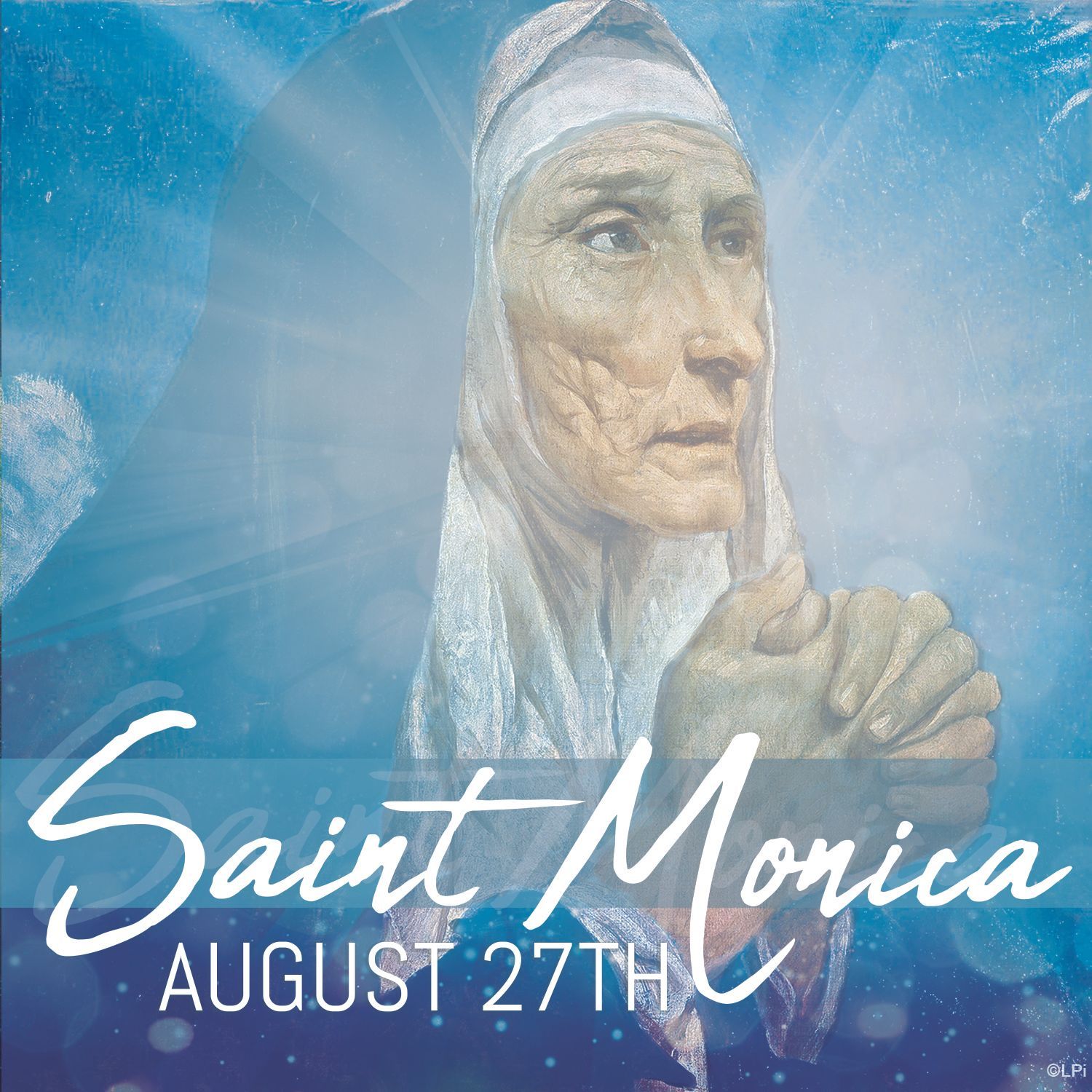
Saint Barnabas | June 11
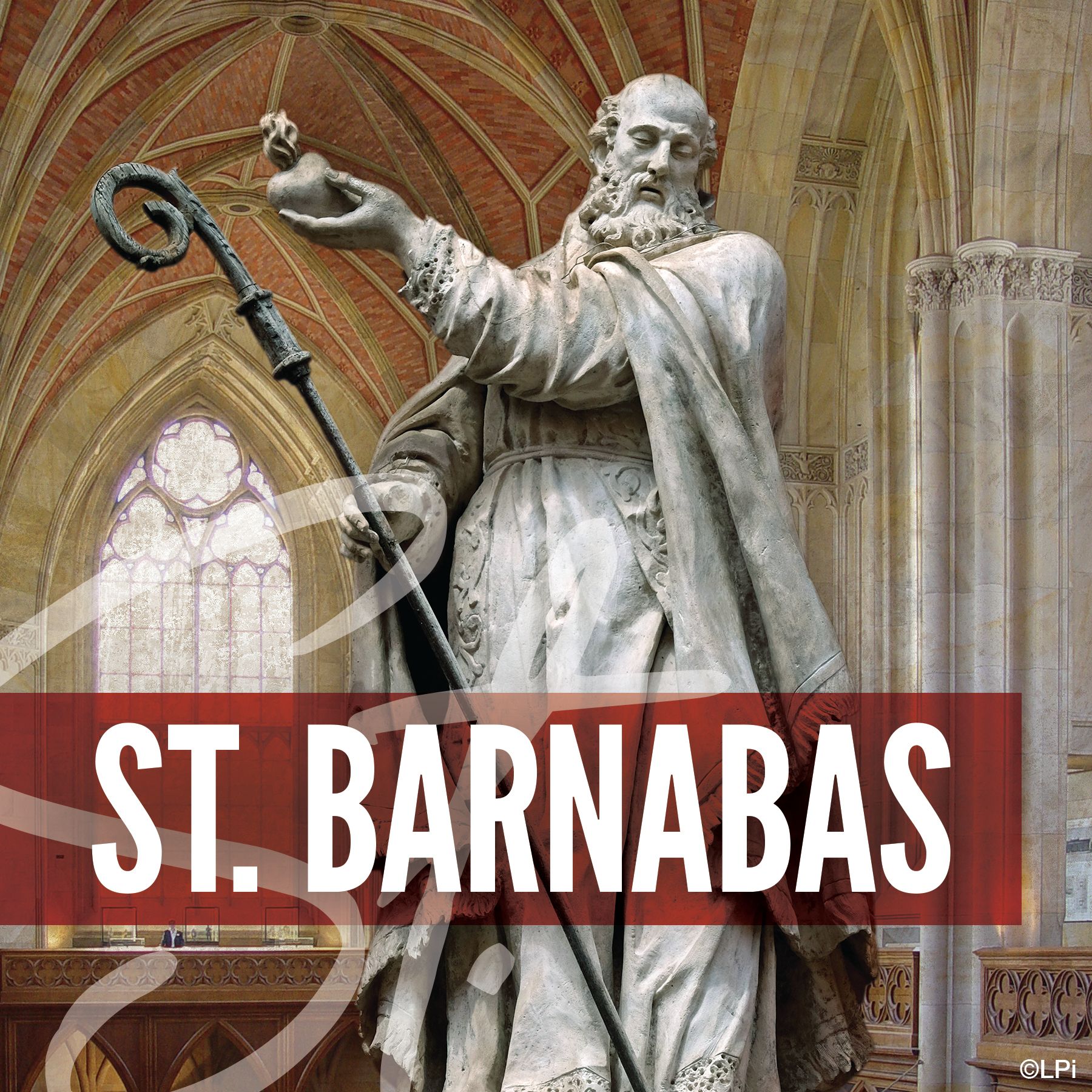
Catholics celebrate the memory of St. Barnabas on June 11. The apostle and missionary was among Christ's earliest followers and was responsible for welcoming St. Paul into the Church. Though not one of the 12 apostles chosen by the Lord, Jesus, he is traditionally regarded as one of the 72 disciples of Christ and most respected man in the first century Church after the Apostles themselves.
St. Barnabas was born to wealthy Jewish parents on the Greek-speaking island of Cyprus, probably around the time of Christ's own birth. Traditional accounts hold that his parents sent him to study in Jerusalem, where he studied at the school of Gamaliel (who also taught St. Paul). Later on, when Christ's public ministry began, Barnabas may have been among those who heard him preach in person. At some point, either during Christ's ministry or after his death and resurrection, Barnabas decided to commit himself in the most radical way to the teachings he had received. He sold the large estate he had inherited, contributed the proceeds entirely to the Church, and joined Christ's other apostles in holding all of their possessions in common. Saul of Tarsus, the future St. Paul, approached Barnabas after the miraculous events surrounding his conversion, and was first introduced to St. Peter through him. About five years later, Barnabas and Paul spent a year in Antioch, building up the Church community whose members were the first to go by the name of “Christians.” Both Paul and Barnabas received a calling from God to become the “Apostles of the Gentiles,” although the title is more often associated with St. Paul. The reference to the “laying-on of hands” in Acts, chapter 13, suggests that Paul and Barnabas may have been consecrated as bishops on this occasion.
